Oslo sits at the northernmost end of the rather long and very pretty, Oslofjord in south-east Norway, and is Scandinavia’s oldest capital city. According to the sagas recorded in the 13th and 14th centuries, it was founded in 1050AD by the famous Viking, King Harald Hardrada, but is now a bustling modern city of roughly 640,000 people. The city sprung up from the Viking’s need for a center for trade and shipbuilding, and while there was a very large settlement here during that period, there is little signs of the Viking settlement here now.
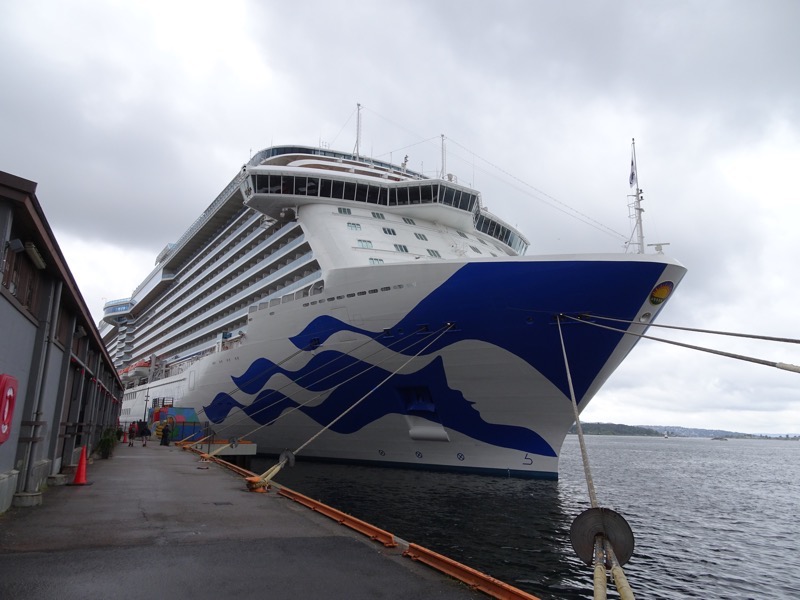
 Oslo City Hall.
Oslo City Hall.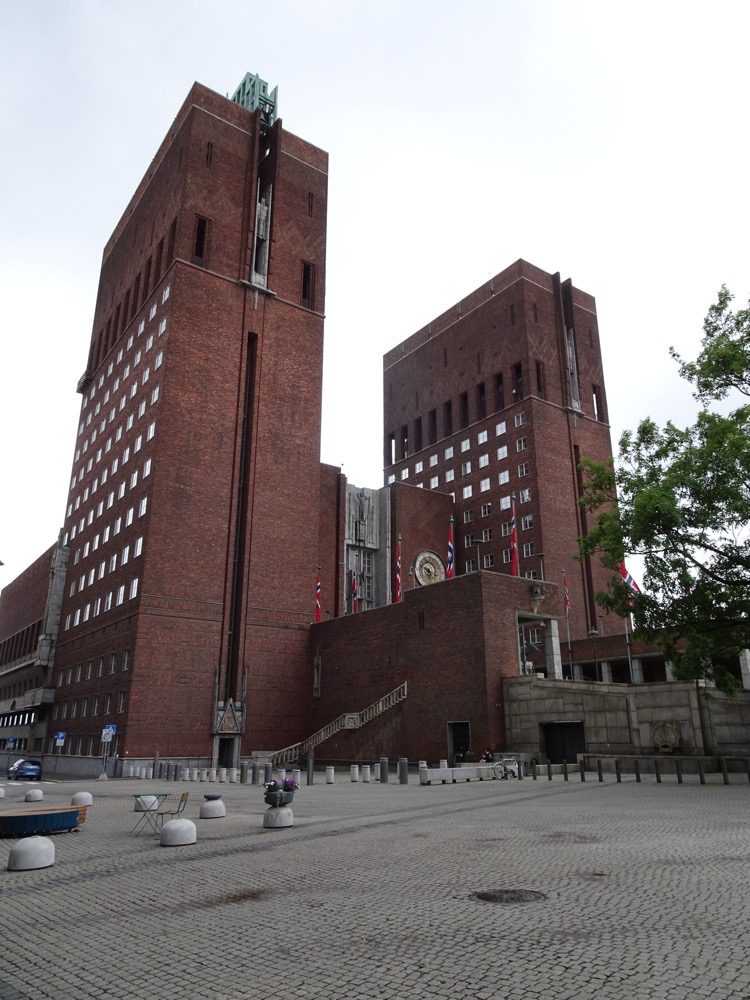
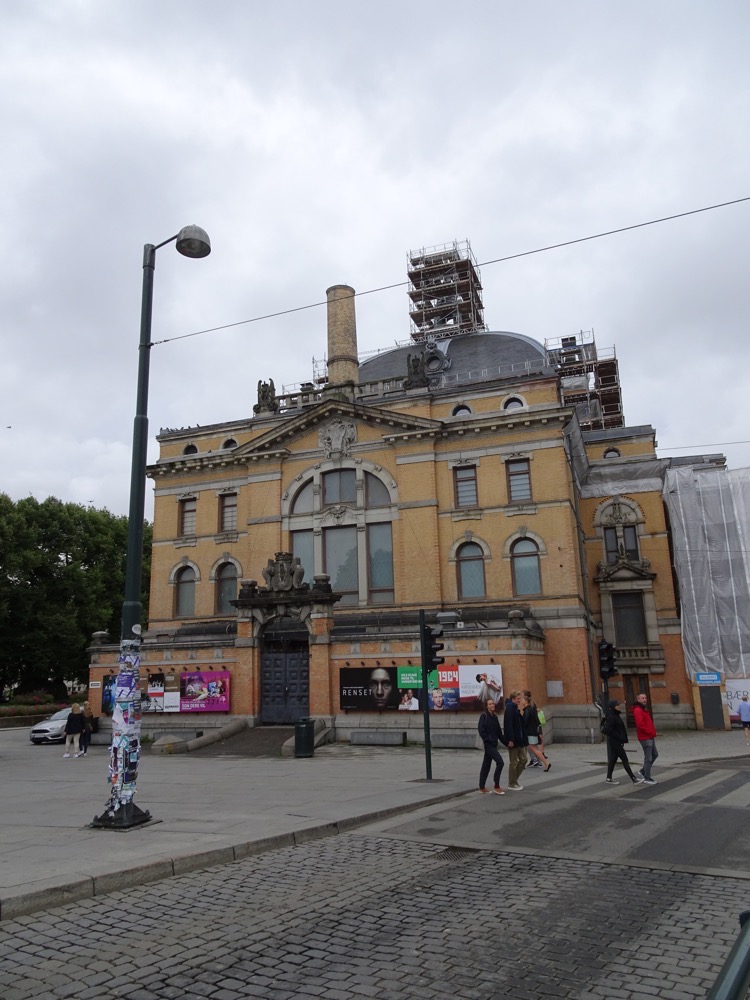 There are so many things to see in Oslo, and we have relatively little time, that we have had to be selective about what we were going to see. We started off the morning heading to Vigeland park, and after getting ever so slightly lost, we discovered a strikingly designed 80 hectare park with five distinctive formal garden spaces. The park showcasing over 200 sculptures created by renowned sculptor, Gustav Vigeland between 1924 and 1943… while the park itself is often referred to ‘Vigeland Park’, the term is actually a misnomer for the world’s largest sculptural installation from a single artist within Frogner Park. The figurative sculptures depict the various stages and elements of the human life cycle, from birth to death to everything in between.
There are so many things to see in Oslo, and we have relatively little time, that we have had to be selective about what we were going to see. We started off the morning heading to Vigeland park, and after getting ever so slightly lost, we discovered a strikingly designed 80 hectare park with five distinctive formal garden spaces. The park showcasing over 200 sculptures created by renowned sculptor, Gustav Vigeland between 1924 and 1943… while the park itself is often referred to ‘Vigeland Park’, the term is actually a misnomer for the world’s largest sculptural installation from a single artist within Frogner Park. The figurative sculptures depict the various stages and elements of the human life cycle, from birth to death to everything in between.
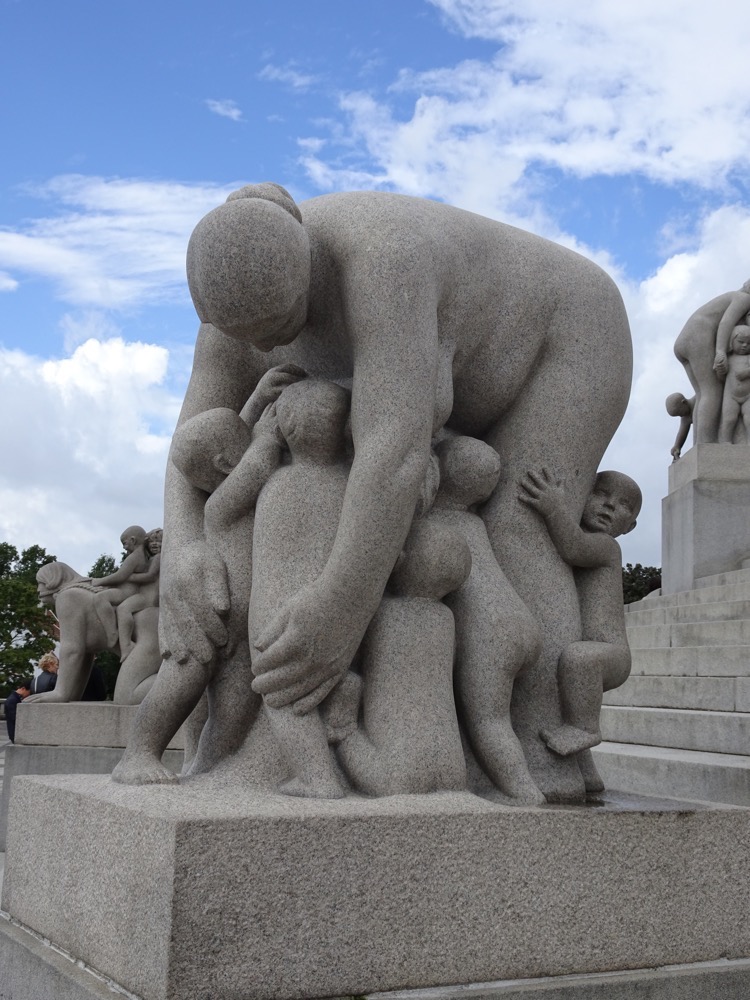
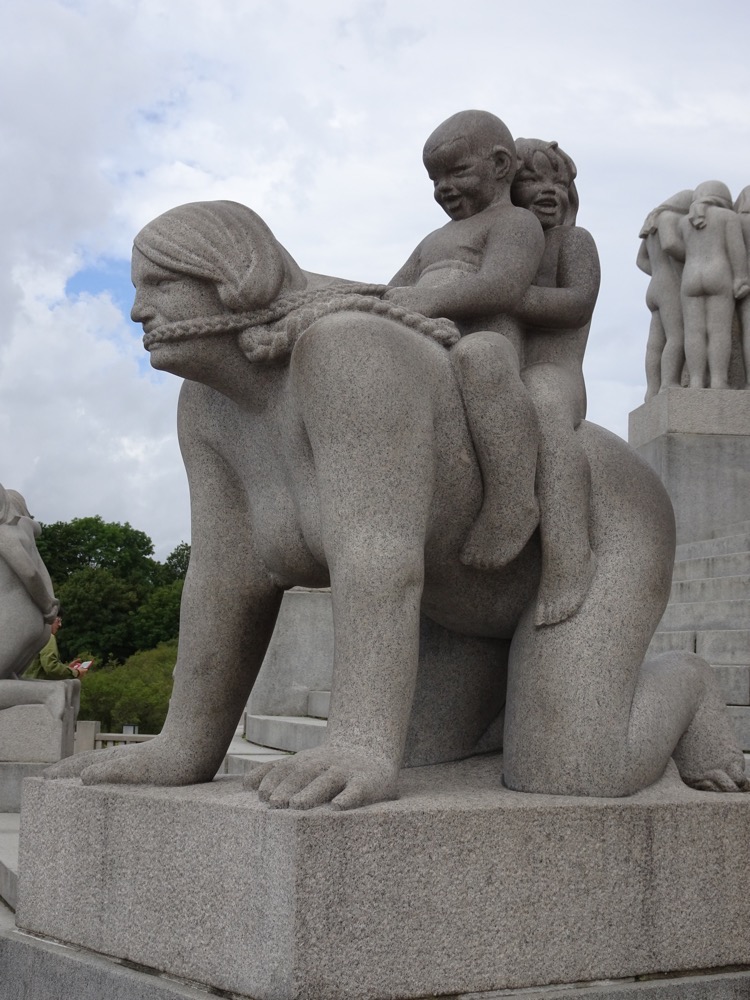 The Monolith at the center of the park.
The Monolith at the center of the park.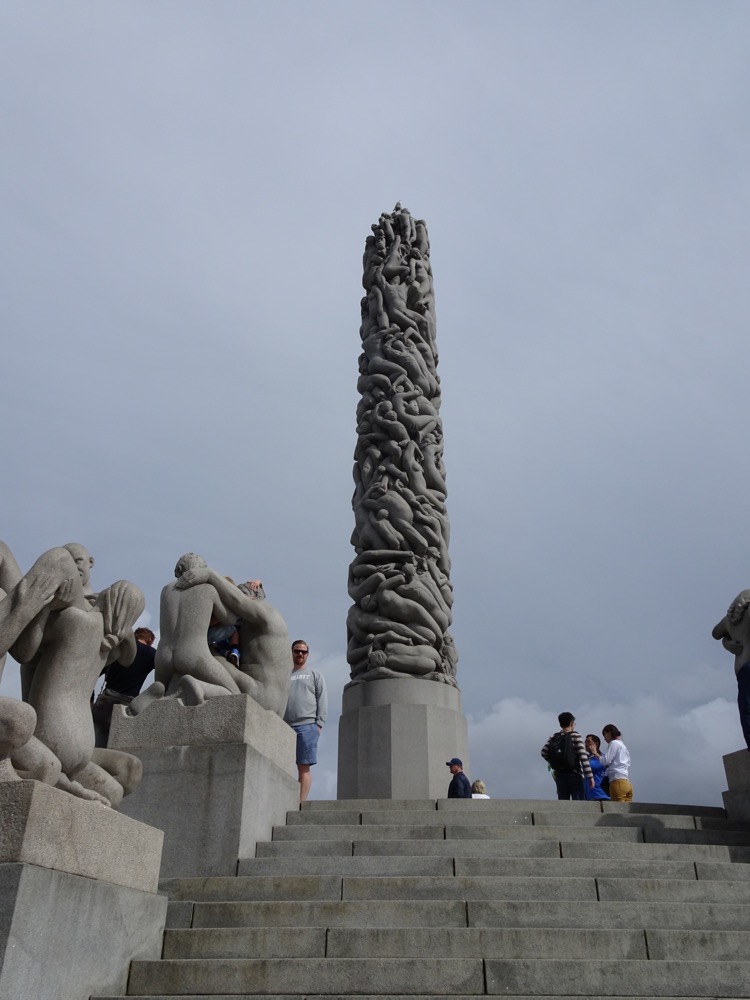
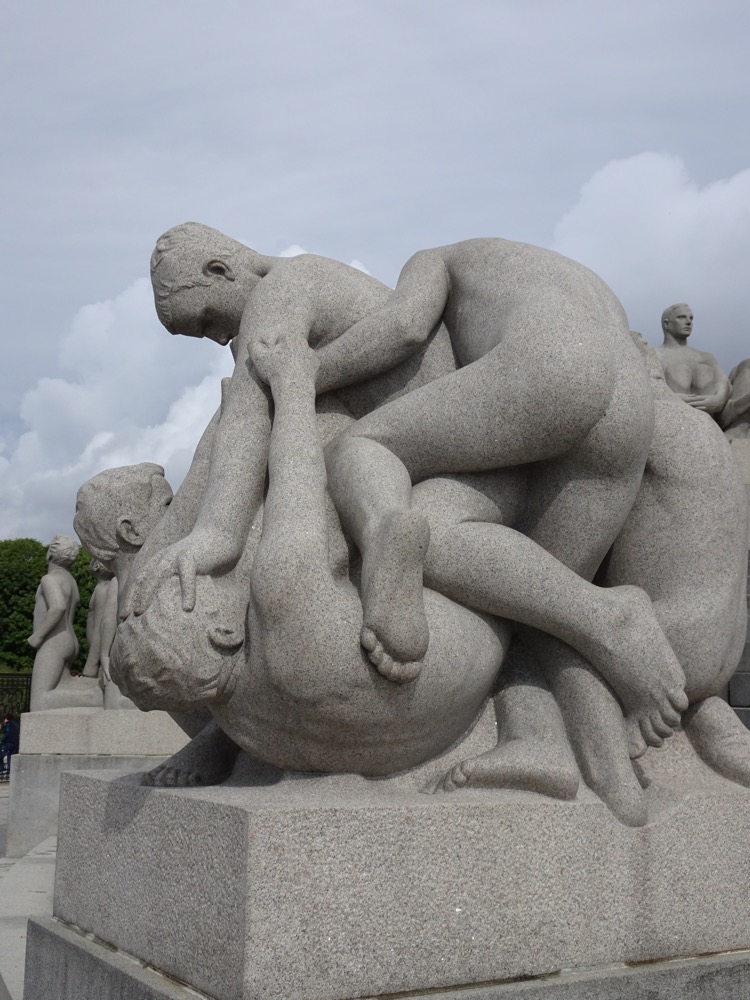
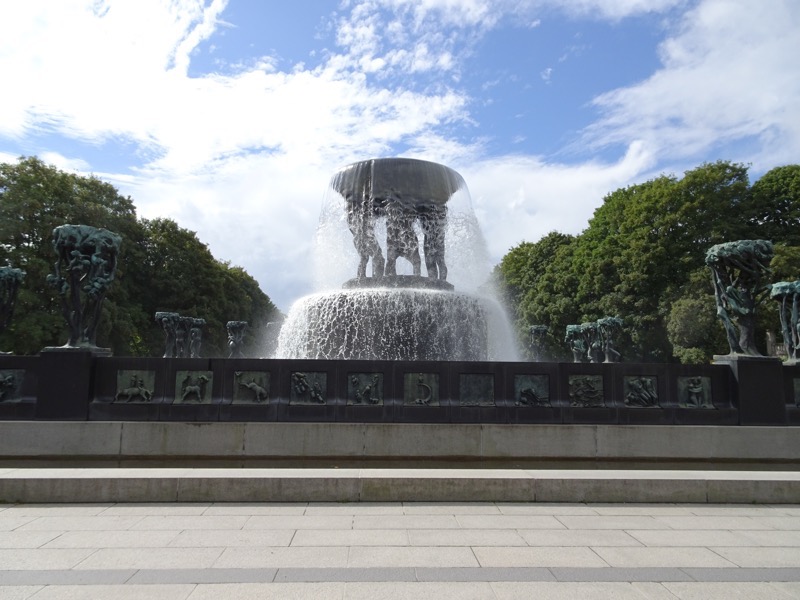
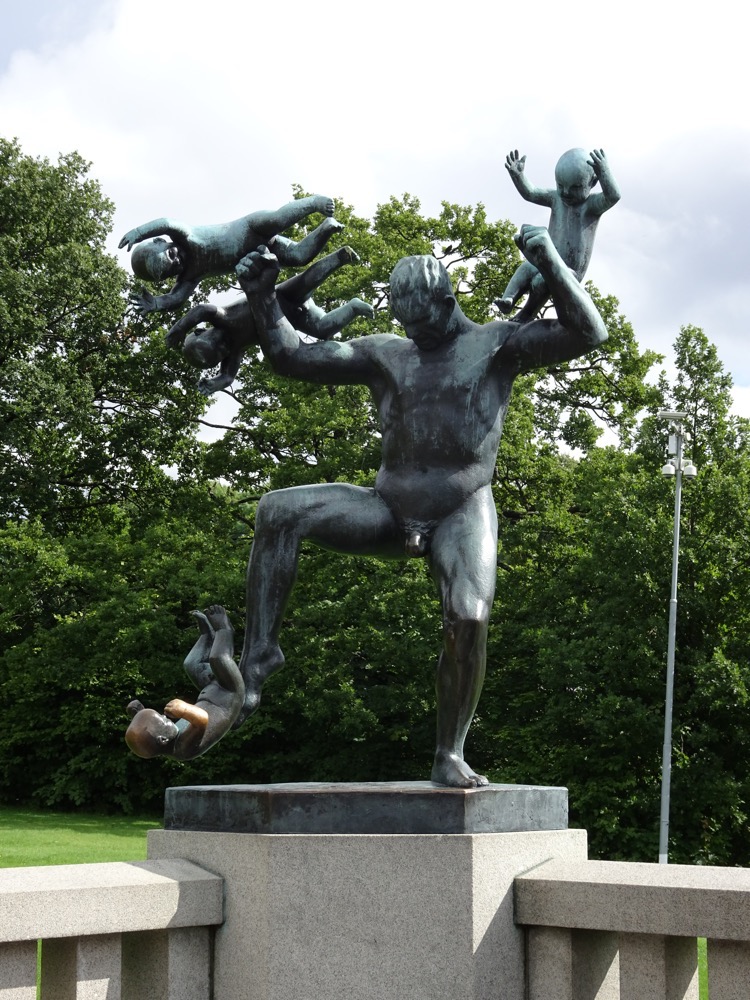

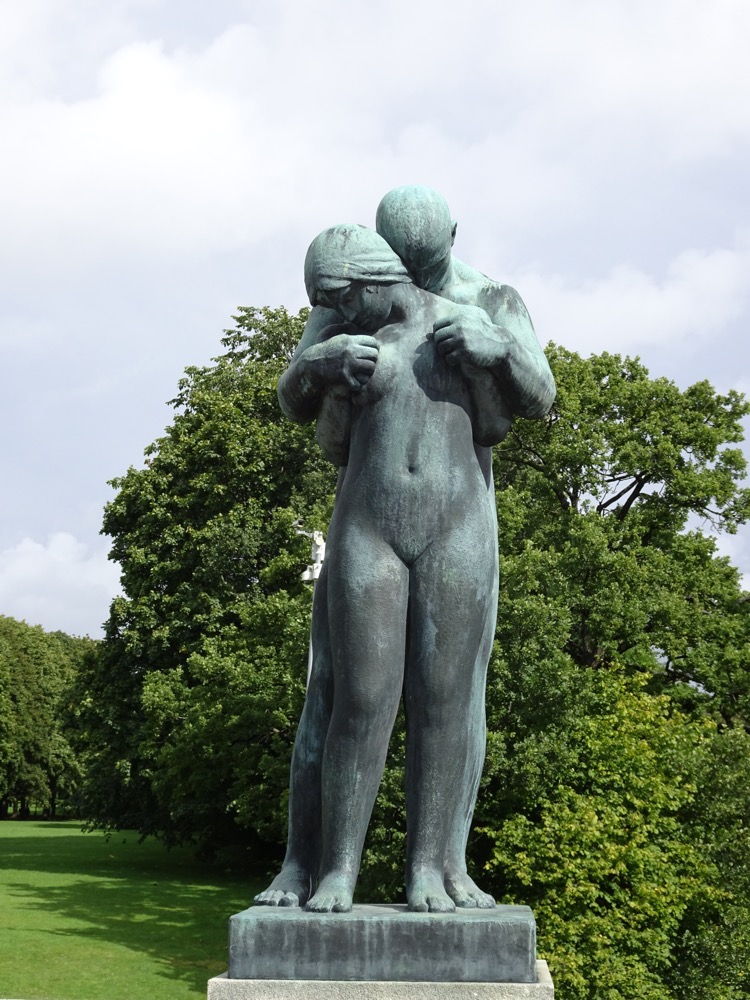
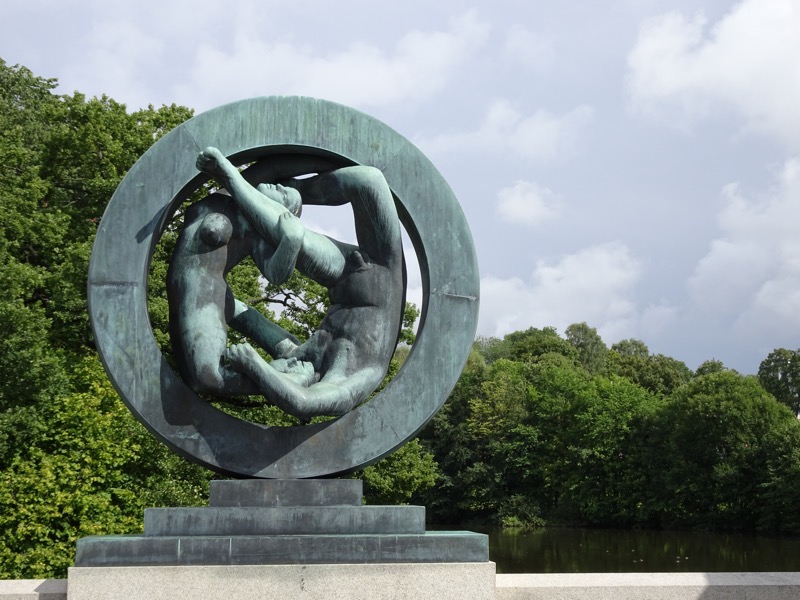
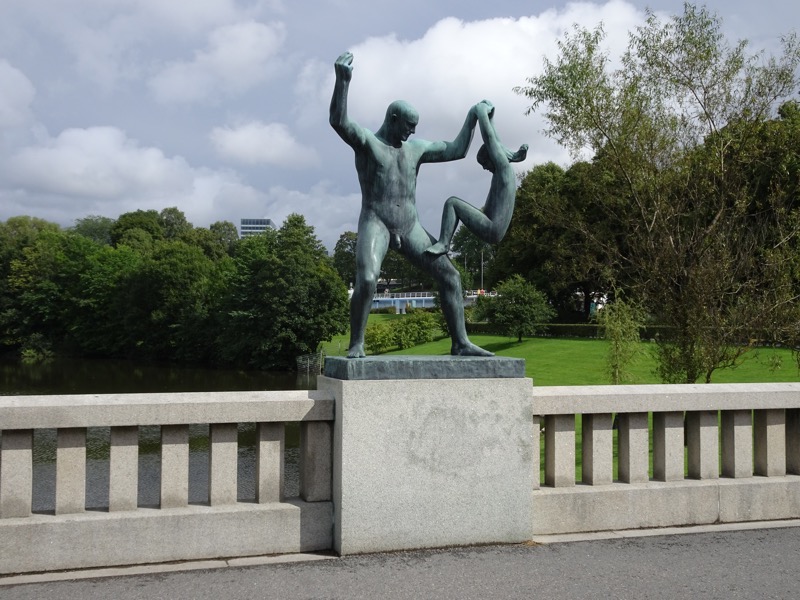
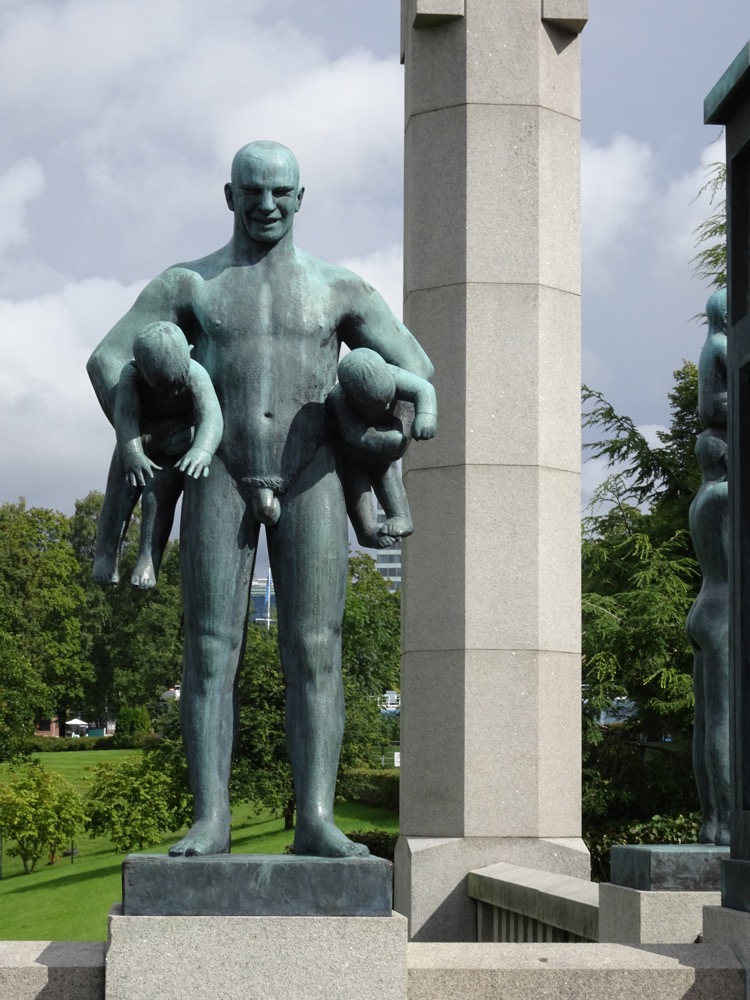 After checking out the sculpture park, we made our way to the Vikingskipene – the Viking Ship museum which contains the best preserved Viking ships in the world. There are three ships in the museum, the Oseberg ship, the Gokstad ship and the Tune ship. The Vikings had a material view of life after death and their grave and burial sites showed that they believed people’s position and possessions carried on after this life into an afterlife. These three ships were used at sea for several years and finally brought ashore to be used as burial tombs. The deceased were laid in the ships and amply provided for with clothing, food, drink, items of everyday use, art objects, and jewellery, and weapons. Animals, such as horses, dogs, peacocks, and goshawks were also found in the burial mounds having been sacrificed to follow the deceased into the afterlife. The ships were then thoroughly buried with large amounts of soil and peat, which helped considerably in preserving them.
After checking out the sculpture park, we made our way to the Vikingskipene – the Viking Ship museum which contains the best preserved Viking ships in the world. There are three ships in the museum, the Oseberg ship, the Gokstad ship and the Tune ship. The Vikings had a material view of life after death and their grave and burial sites showed that they believed people’s position and possessions carried on after this life into an afterlife. These three ships were used at sea for several years and finally brought ashore to be used as burial tombs. The deceased were laid in the ships and amply provided for with clothing, food, drink, items of everyday use, art objects, and jewellery, and weapons. Animals, such as horses, dogs, peacocks, and goshawks were also found in the burial mounds having been sacrificed to follow the deceased into the afterlife. The ships were then thoroughly buried with large amounts of soil and peat, which helped considerably in preserving them.
 The Oseberg ship, built around 820AD, is about 21.5m long and 5m wide. There are oar holes for 15 people on each side, so with a helmsman and a lookout, there would have been a crew of about 32 or so people. Built first, but discovered last, the Oseberg ship was excavated in 1904 and took three months to complete. Two wealthy women were buried in the Oseberg ship, and they were joined by a multitude of burial girls – personal items such as clothing, shoes, combs, ship equipment, kitchen utensils, farm equipment, large decorative sleds, a huge cart, carved animal heads, five beds and two tents … along with the fifteen horses, six dogs and two cows that had been sacrificed indicated just how important these two women were. The ship itself could be both sailed and rowed and it is a particularly grand and decorative ship. The owner would have spent considerable resources in having the ship made, and was definitely an item associated with the upper classes.
The Oseberg ship, built around 820AD, is about 21.5m long and 5m wide. There are oar holes for 15 people on each side, so with a helmsman and a lookout, there would have been a crew of about 32 or so people. Built first, but discovered last, the Oseberg ship was excavated in 1904 and took three months to complete. Two wealthy women were buried in the Oseberg ship, and they were joined by a multitude of burial girls – personal items such as clothing, shoes, combs, ship equipment, kitchen utensils, farm equipment, large decorative sleds, a huge cart, carved animal heads, five beds and two tents … along with the fifteen horses, six dogs and two cows that had been sacrificed indicated just how important these two women were. The ship itself could be both sailed and rowed and it is a particularly grand and decorative ship. The owner would have spent considerable resources in having the ship made, and was definitely an item associated with the upper classes.
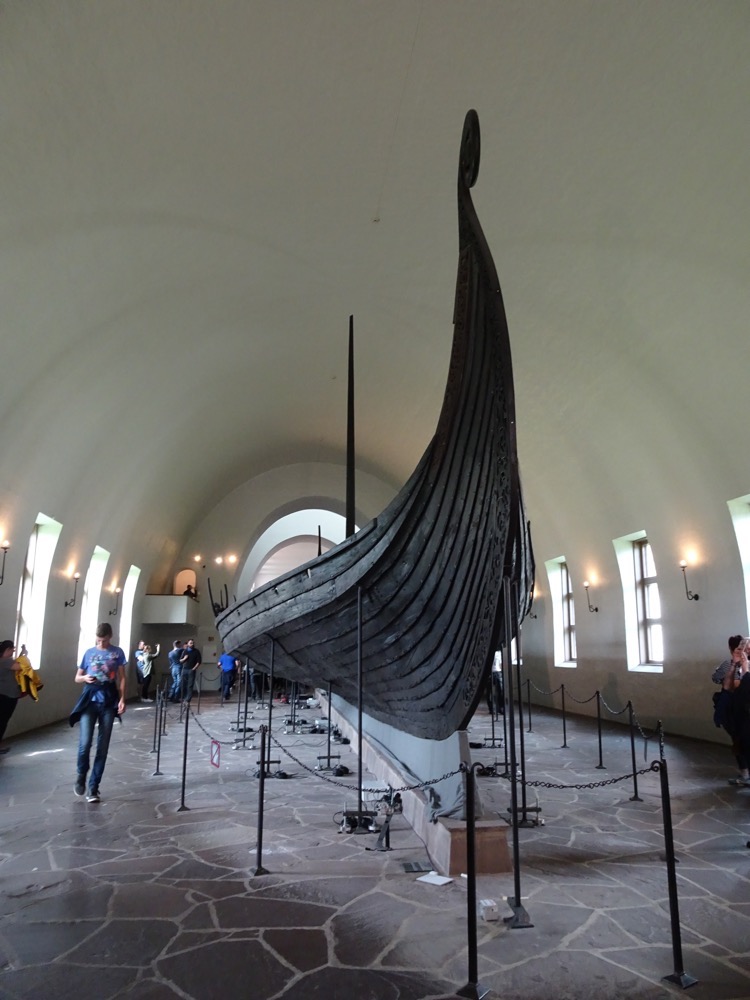
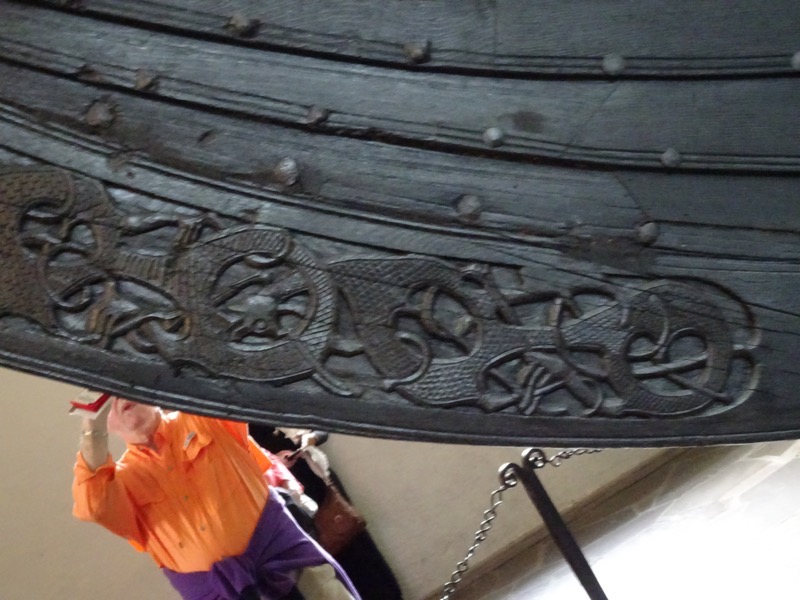
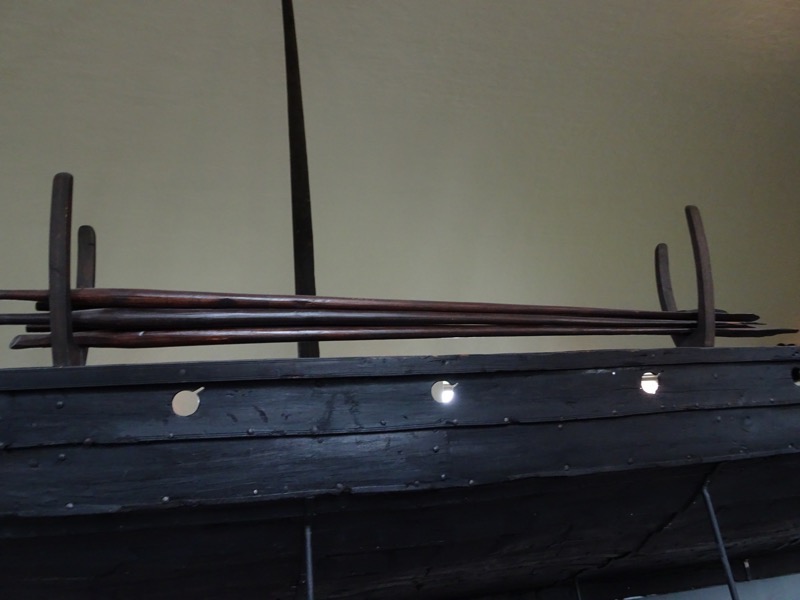
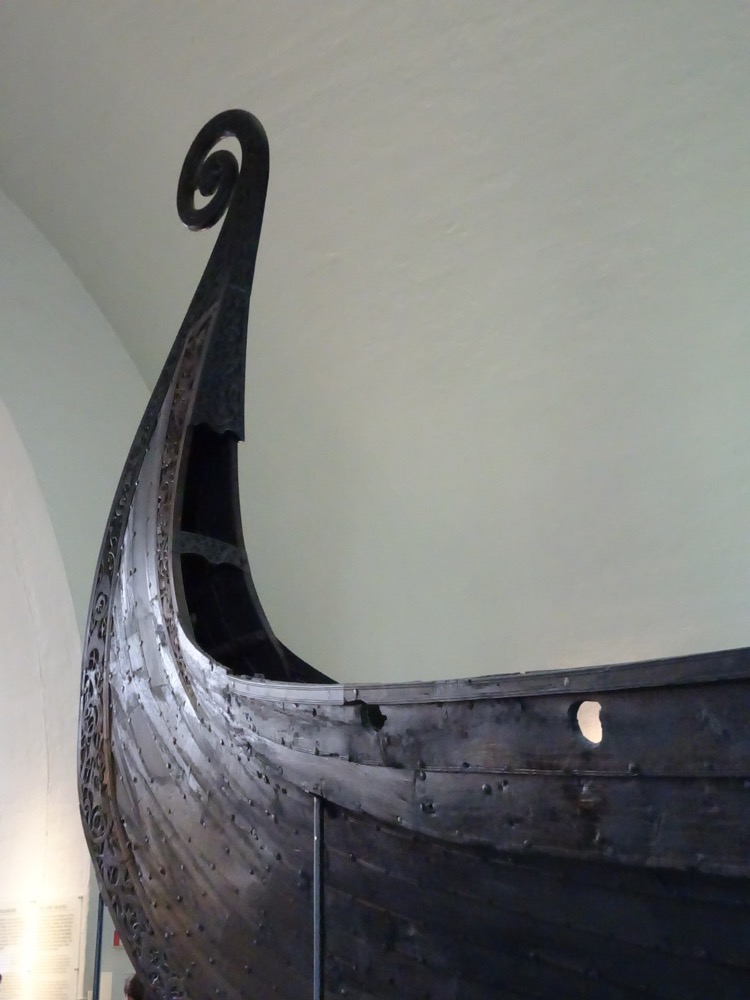
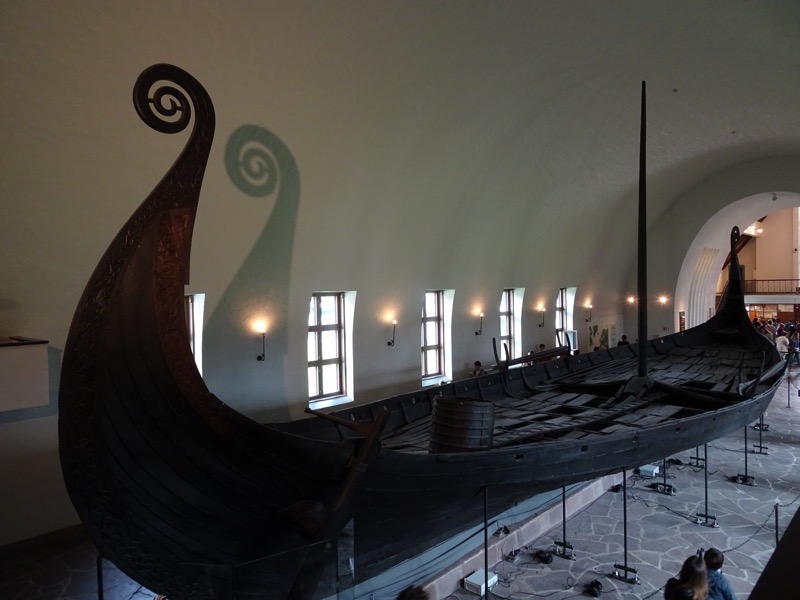
 Ceremonial cart/wagon from the Oseberg find.
Ceremonial cart/wagon from the Oseberg find.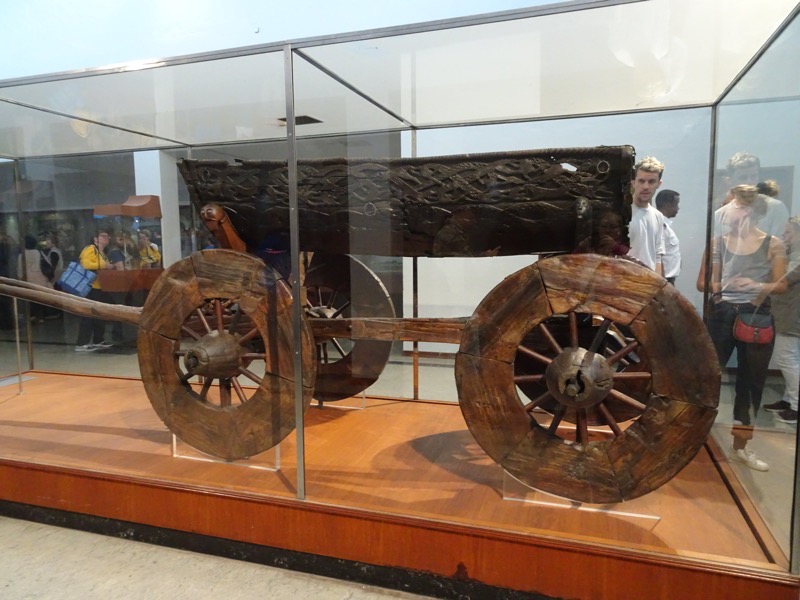
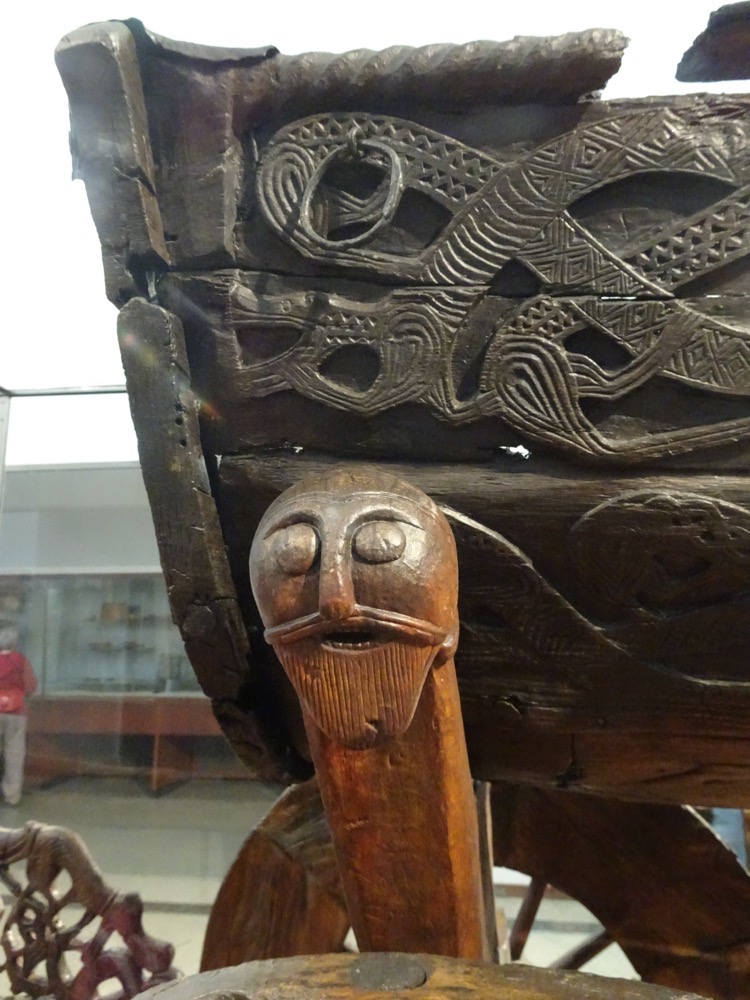
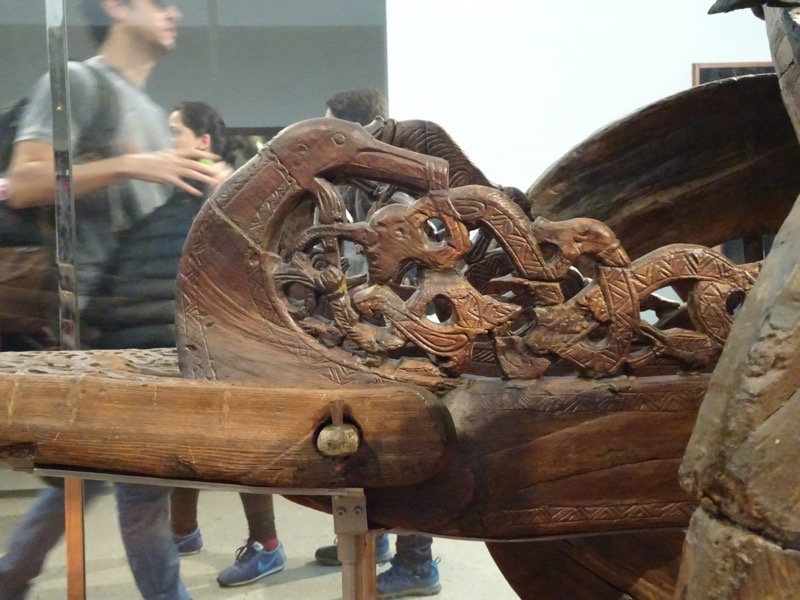
Of the two short (153cm tall) women buried in the Oseberg ship, the older was 70-80 years old when she died, very possibly of cancer (she had osteoporosis, a lumbar fractures, two fused neck vertebrae, and a knee injury which would have caused her great pain in her later years as well as a stoop and a limp when she walked). The other, younger woman, in her 50s, had healthy teeth with little wear indicating a good diet and good hygiene habits; she had a broken collarbone some weeks before her death, but there is no evidence to indicate this was the cause of her death. Archaeologists have been unable to determine who the ‘main person’ in the grave was.
Decorative tent timbers: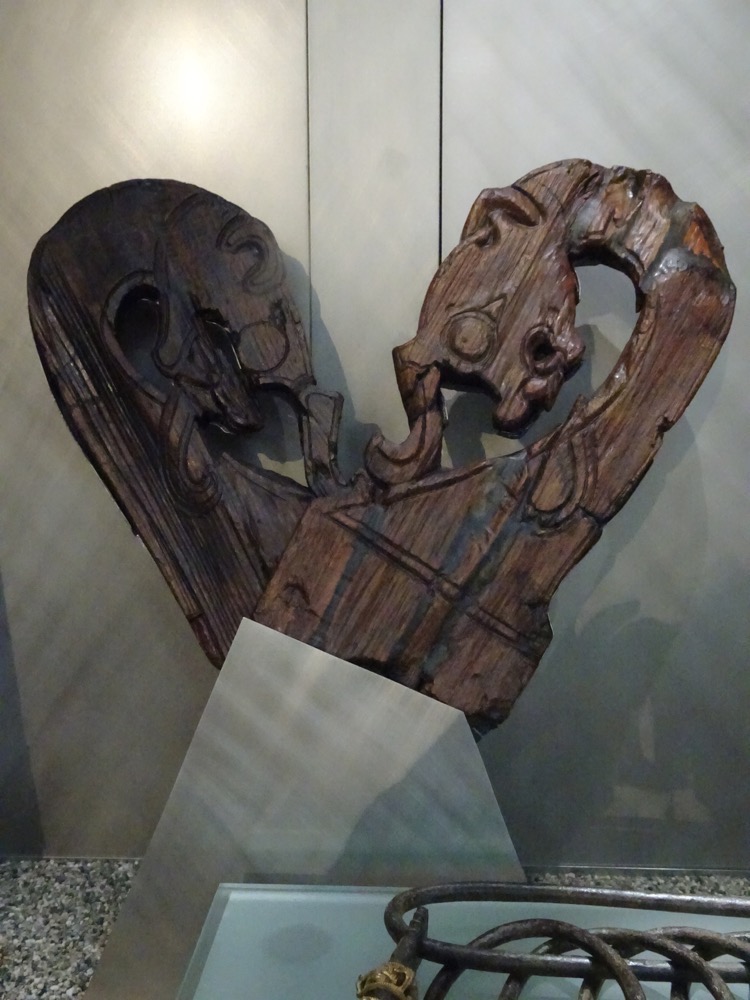 One of several carved animal heads found in the Oseberg grave – origin and purpose for which remains unknown.
One of several carved animal heads found in the Oseberg grave – origin and purpose for which remains unknown.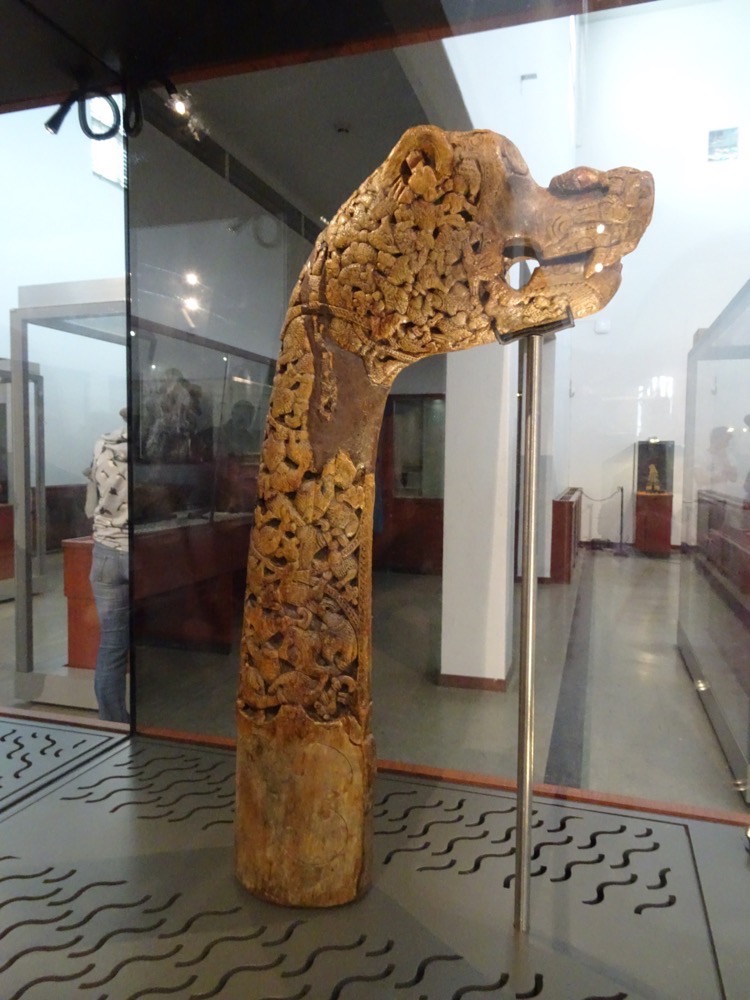 Oseberg chest.
Oseberg chest.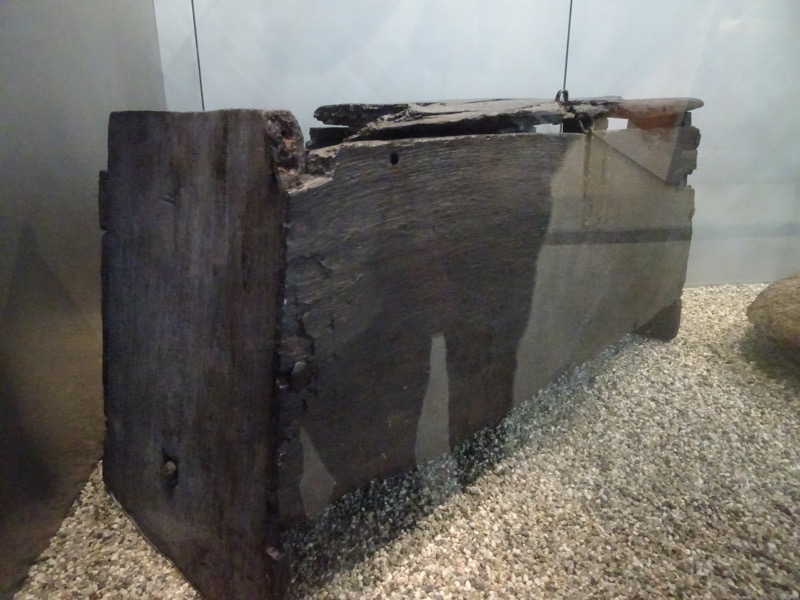
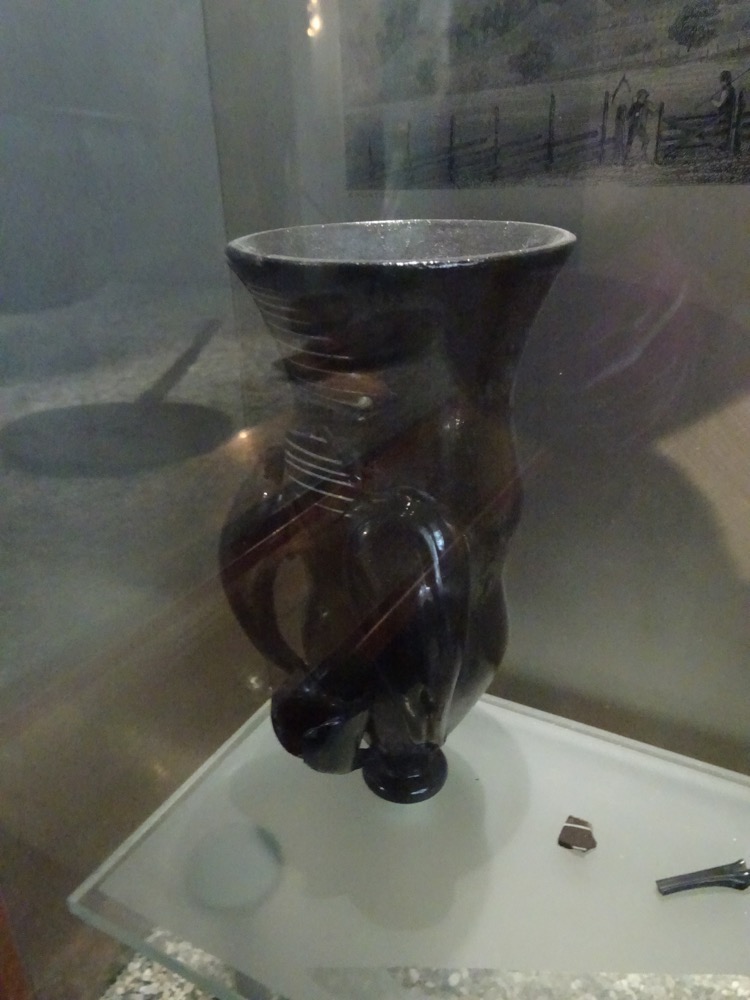
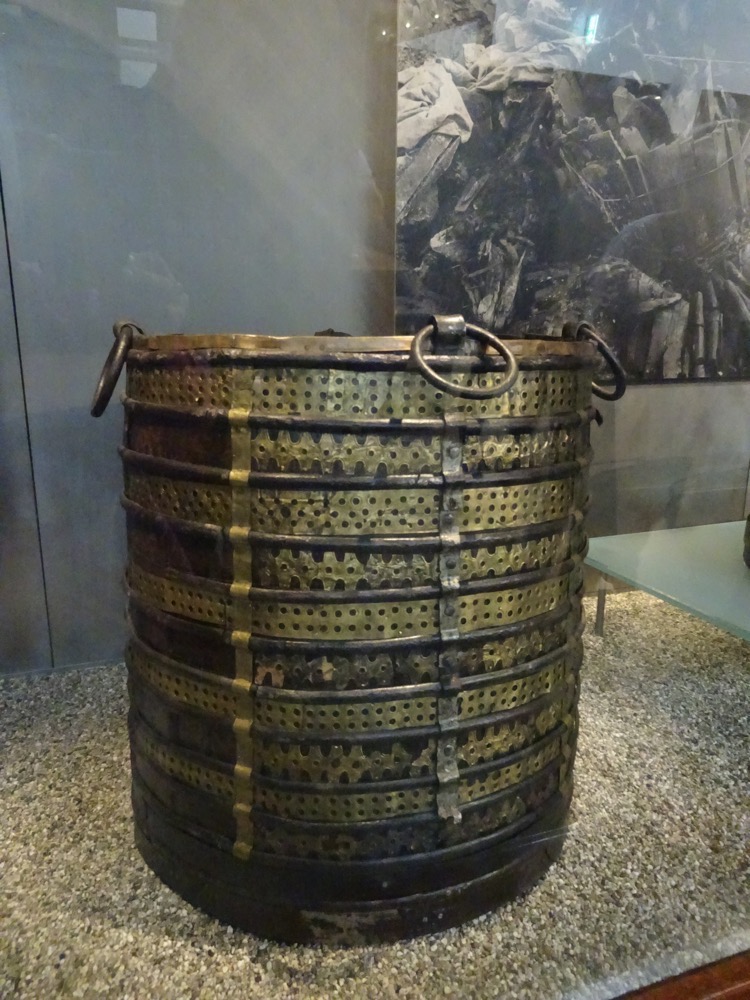 Very odd enameled mount on a bucket handle. Bucket found in the Oseberg grave, but determined to be of Irish origin. I’m buggered if that doesn’t look like actual heraldry on something that was buried c.820AD.
Very odd enameled mount on a bucket handle. Bucket found in the Oseberg grave, but determined to be of Irish origin. I’m buggered if that doesn’t look like actual heraldry on something that was buried c.820AD.
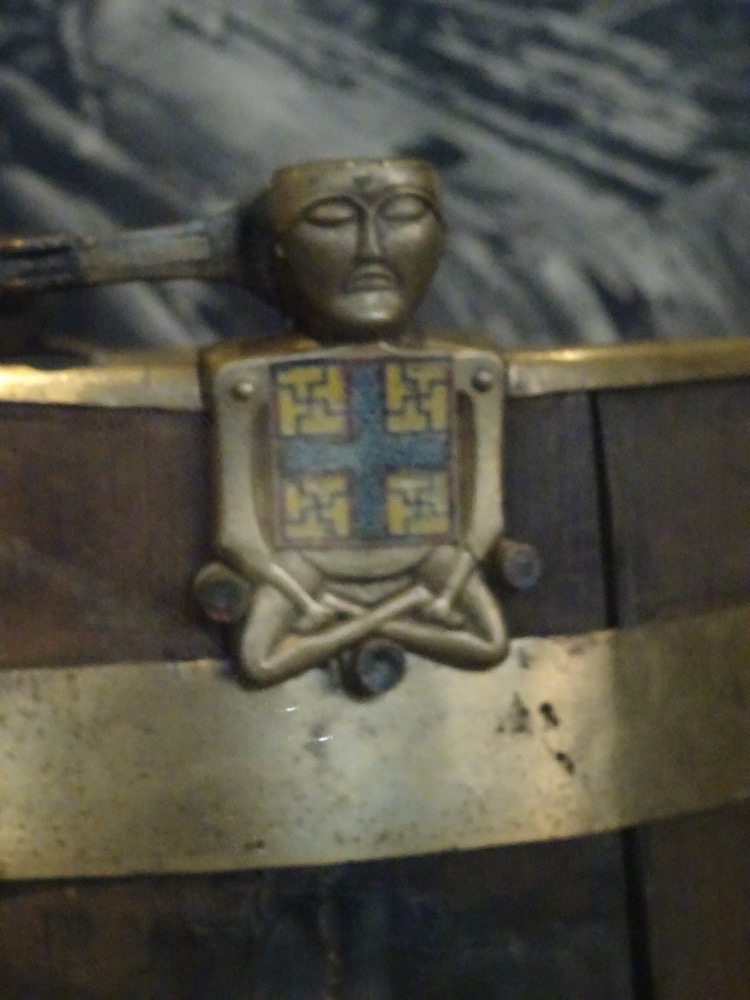
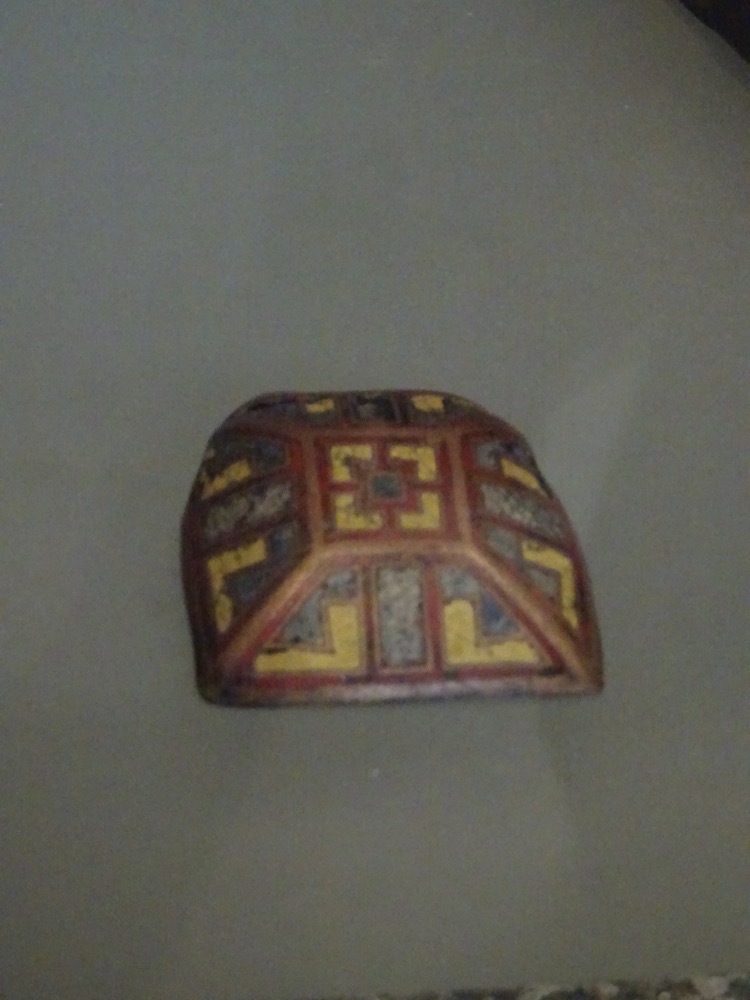
The Gokstad ship, built c.890AD, is approximately 23.5m in length and 5.2m wide, with 16 slots for oars down each side. So it’s crew would have been at least 34 people. It was unearthed in 1880 and was the burial tomb of a very rich and powerful man. This is evident in that the deceased was accompanied by many lavish burial gifts. His weapons and jewellery were gone, very likely the work of grave robbers in the Viking age, but they did not take everything. Left behind were playing pieces made of horn, fish hooks, harness fittings for horses, gilded items of bronze and lead, kitchen utensils, six beds, one tent a sled and the remains of 12 horses, six dogs, two hawks and two peacocks. Three smaller boats were also buried with the Gokstad ship for the use of the deceased in the afterlife.
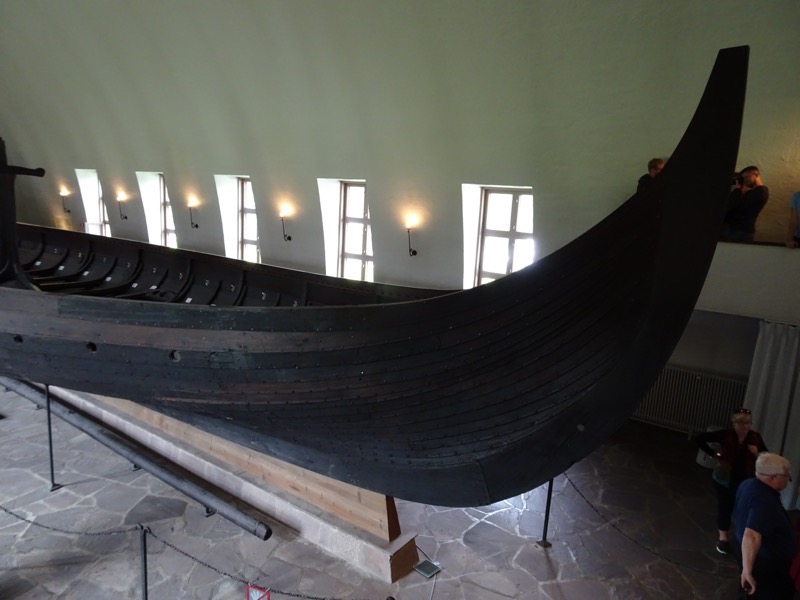
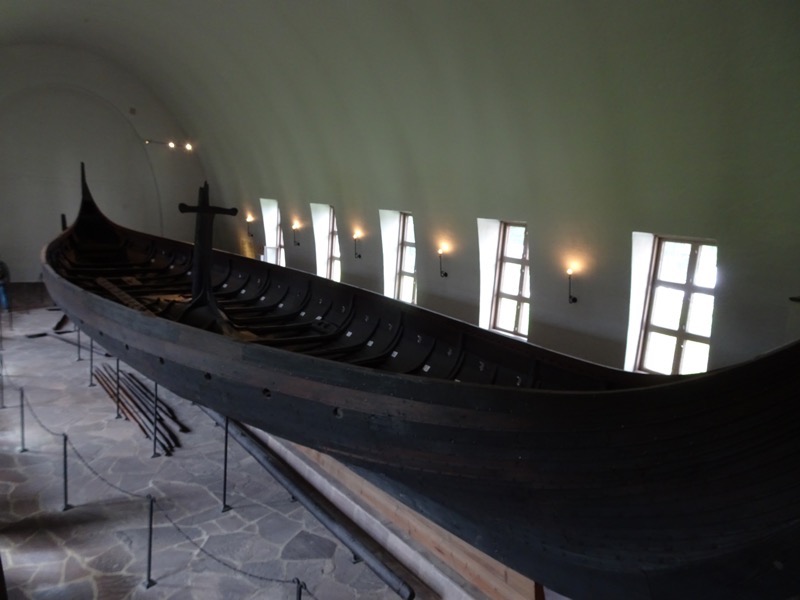
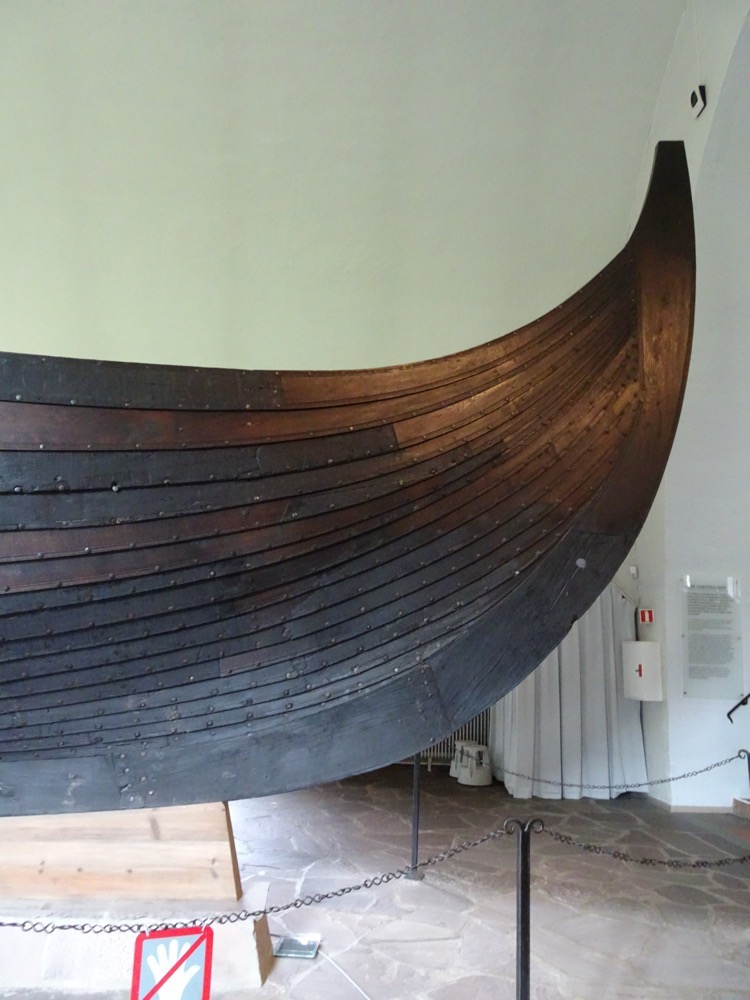 What is known about the Gokstad man is that he was 181-183cm tall and powerfully built – making him a large man for that period. He was in his 40s, and marks on his skeleton show that he was killed battle. The spectacular funeral he had, demonstrates that he was of high status and either a powerful political ruler or perhaps from a ‘royal’ family. The peacocks in the tomb are quite the oddity, indicating that he was a man with considerable international connections – the birds may have been a gift from another ruler or brought home as trophies from a war expedition. The Gokstad ship could be sailed or rowed and was suitable for trade journeys, discovery voyages as well as Viking raids. 64 shields were found attached to the railing of the ship, though of these mainly only the shield bosses remain.
What is known about the Gokstad man is that he was 181-183cm tall and powerfully built – making him a large man for that period. He was in his 40s, and marks on his skeleton show that he was killed battle. The spectacular funeral he had, demonstrates that he was of high status and either a powerful political ruler or perhaps from a ‘royal’ family. The peacocks in the tomb are quite the oddity, indicating that he was a man with considerable international connections – the birds may have been a gift from another ruler or brought home as trophies from a war expedition. The Gokstad ship could be sailed or rowed and was suitable for trade journeys, discovery voyages as well as Viking raids. 64 shields were found attached to the railing of the ship, though of these mainly only the shield bosses remain.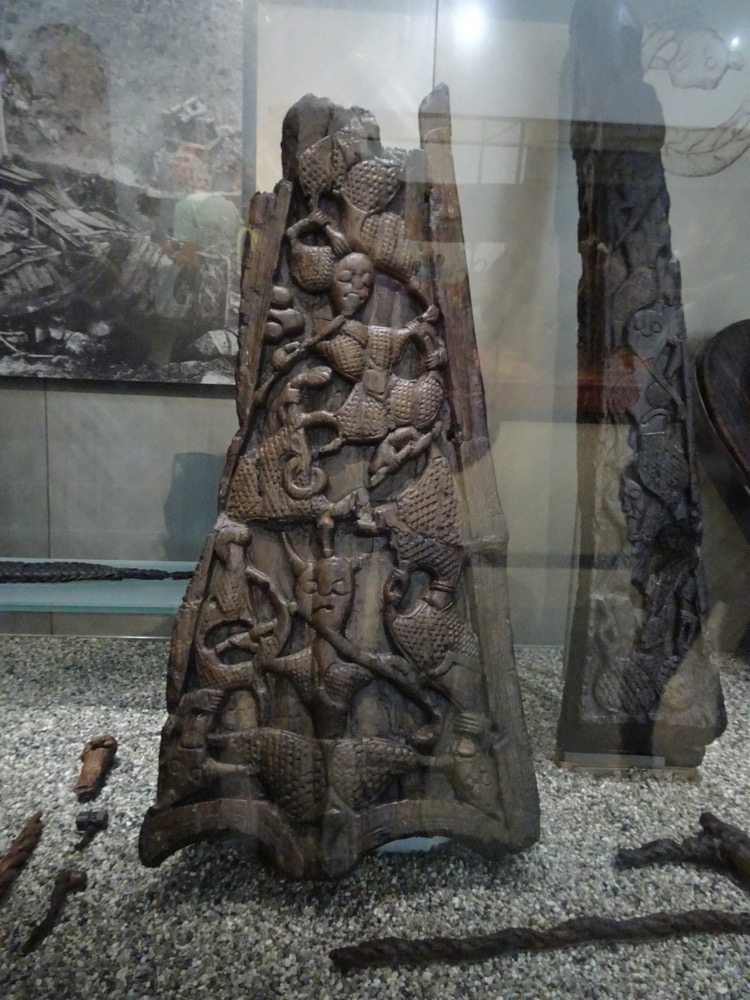
The Tune ship, which was built in 910AD, is somewhat smaller, at roughly 19m long and a little over 4m wide. It has only 12 oar holes down either side and possibly would have gotten away with a crew as small as 24-26 people. The Tune ship was excavated in 1867 and was the first Viking ship discovered in modern times, creating quite a stir in archeological circles. The mount was unusually large – 80m x 4m making it one of the largest burial mounds ever found. Unlike the Gokstad ship, the Tune ship was a smaller, faster, ocean-going vessel which was suitable for moving people rapidly which was an important characteristic of a Viking warship. It is probable that the tomb was that of an important man of high rank, but it is also possible that this burial mound had been plundered in period, as the only items of the burial gifts remained. Found in the ship was: the bones of three horses, some weapons (a sword grip, two spearheads, a shield boss, and some chain mail remains). Other than that a dice, two small gems, a saddle remnant and some cloth remnants are all that was found in this grave.
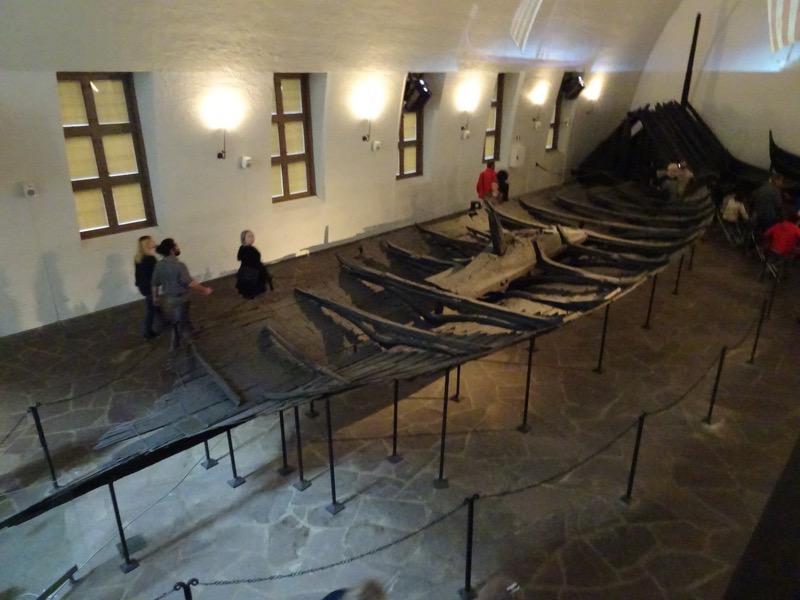 After the excitement of the Vikingskiphuset (we got there just at the right time while people were all busy having lunch, but it got very busy as we were leaving), we decided to swing by the open-air Norsk Folkemuseum (Norwegian Museum of Cultural History), primarily to see the only surviving wooden stave church in Oslo.
After the excitement of the Vikingskiphuset (we got there just at the right time while people were all busy having lunch, but it got very busy as we were leaving), we decided to swing by the open-air Norsk Folkemuseum (Norwegian Museum of Cultural History), primarily to see the only surviving wooden stave church in Oslo.

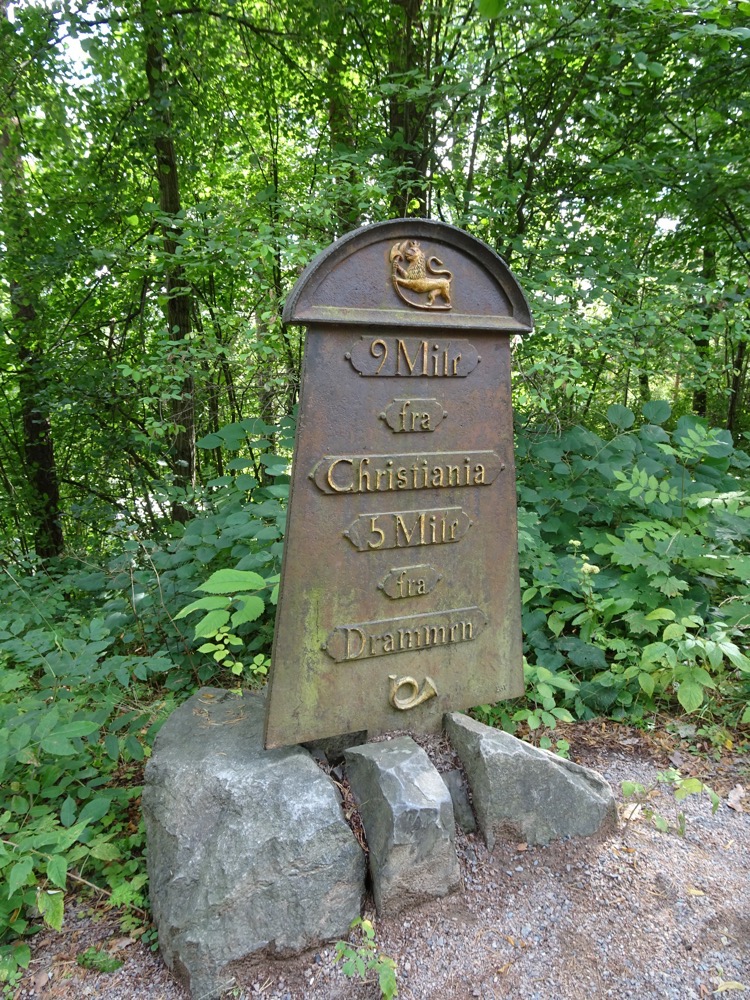
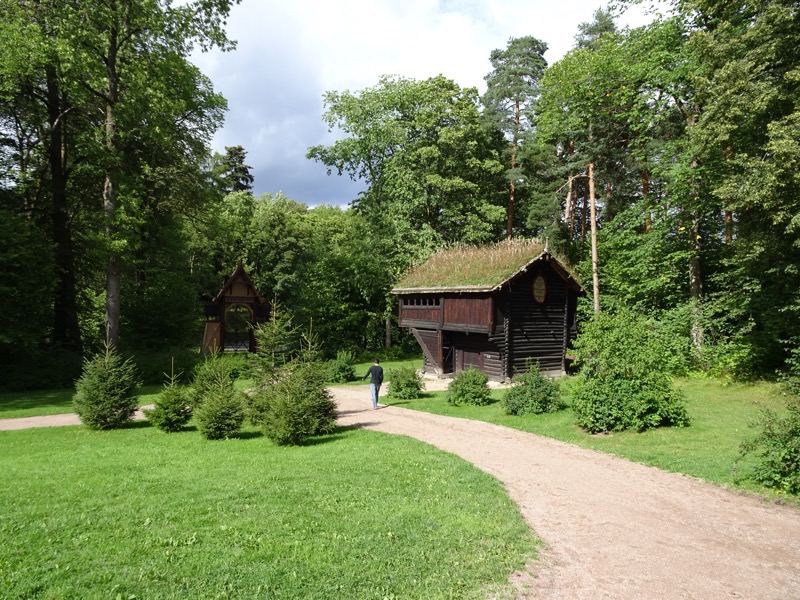 Dendrochronologically dated to the approximately 1157-1212AD, the Gol Stave Church (Gol stavkyrkje) is was originally located in the city of Gol, Hallingdal, Norway.
Dendrochronologically dated to the approximately 1157-1212AD, the Gol Stave Church (Gol stavkyrkje) is was originally located in the city of Gol, Hallingdal, Norway.
The city of Gol in Hallingdal decided to replace their dilapidated church in 1880. Thankfully, it was saved from destruction by King Oscar II who funded its relocation and restoration to its present location – officially, it is still the nominal property of the reigning monarch today. The Gol Stave Church is now part of the collection at the open-air museum in Oslo. Ironically, in 1980 the people of Gol in Hallingdal, decided to build a replica of this self-same stave church, that they wanted to destroy 100 years earlier to be used as a major tourist attraction – but if you go to Gol, you will see only the replica, not the original early 13th century church, which is here in Oslo.
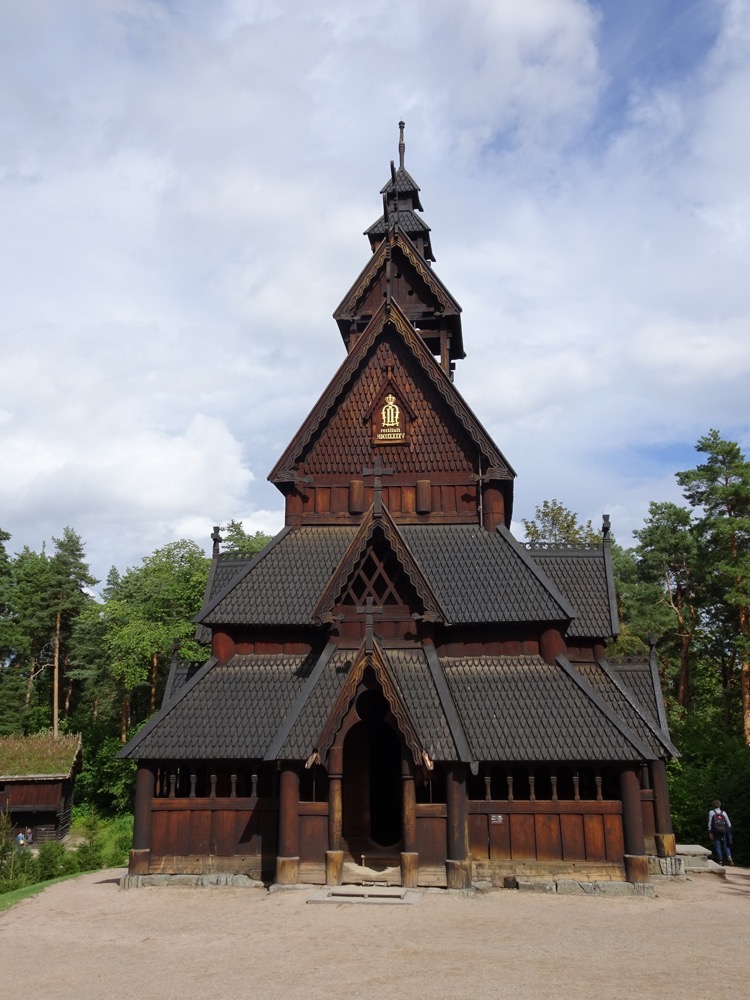
The interior of the church is cool and dark, smells wonderfully of timber and is lavishly painted with early Christian iconography.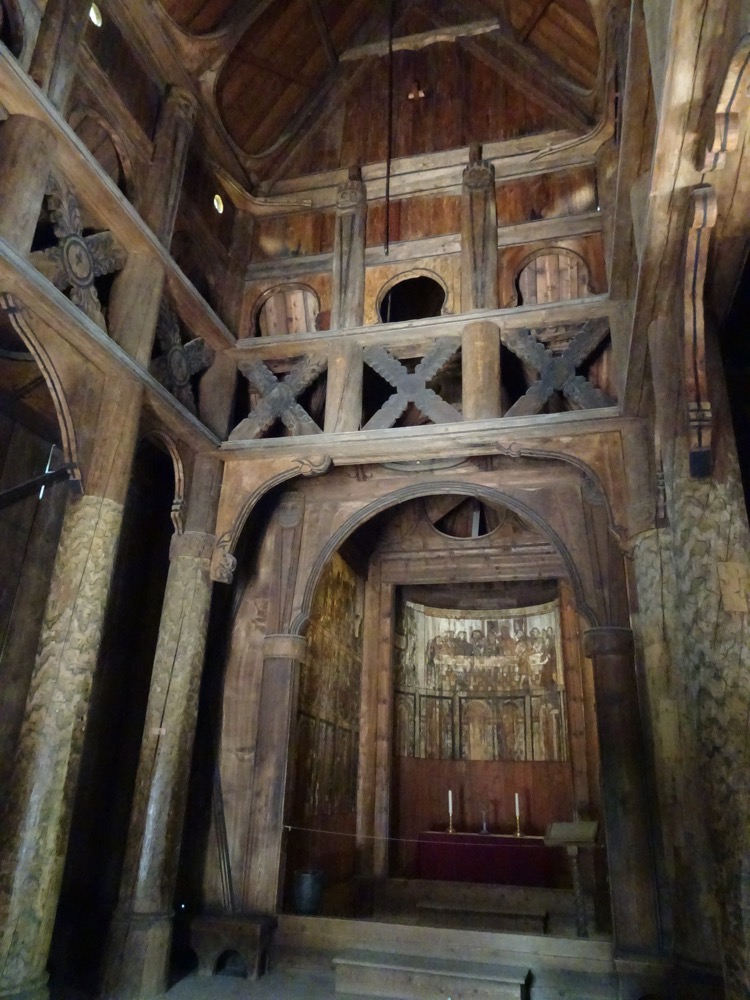
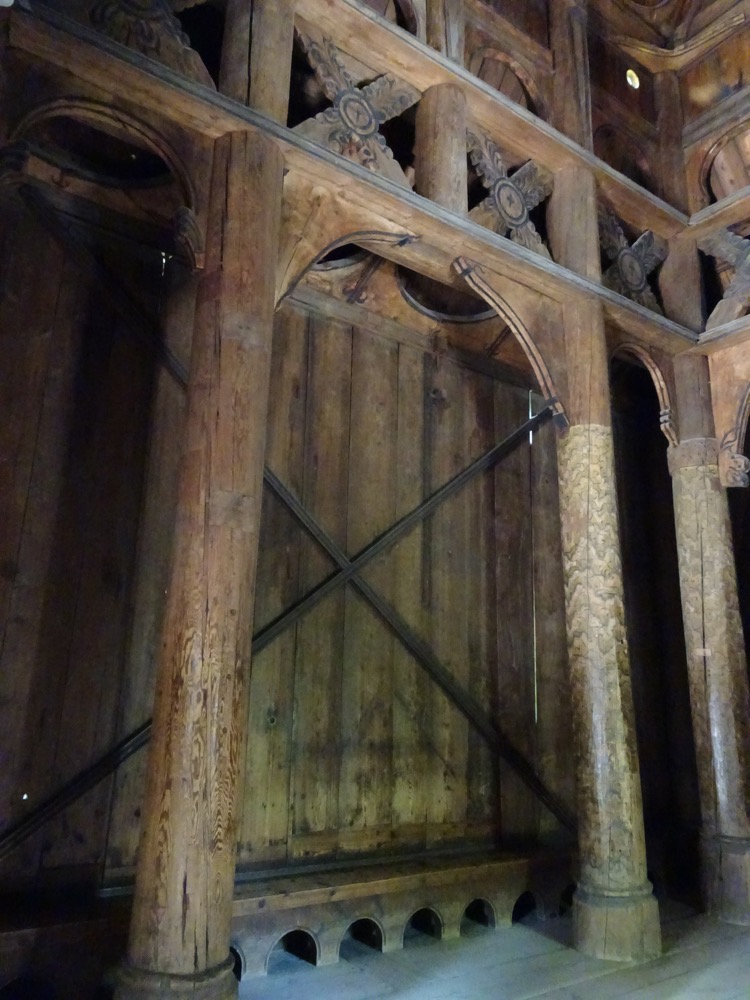
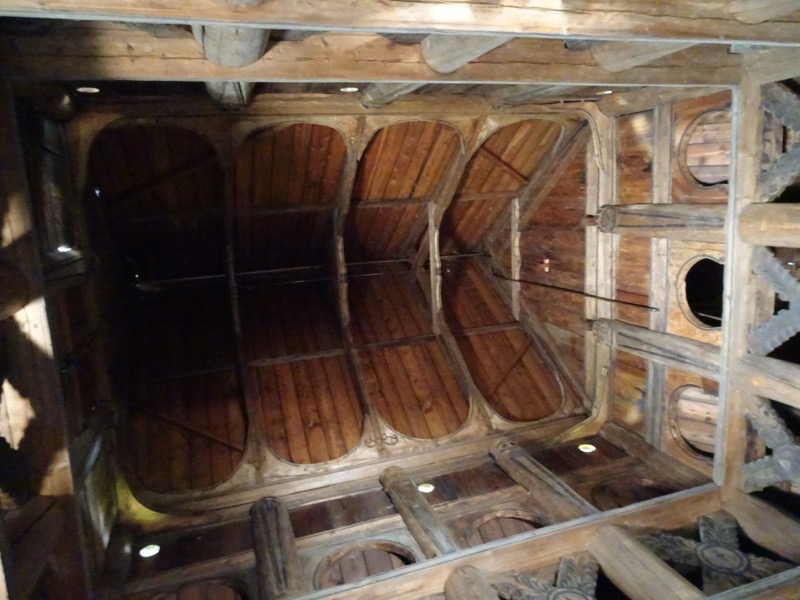
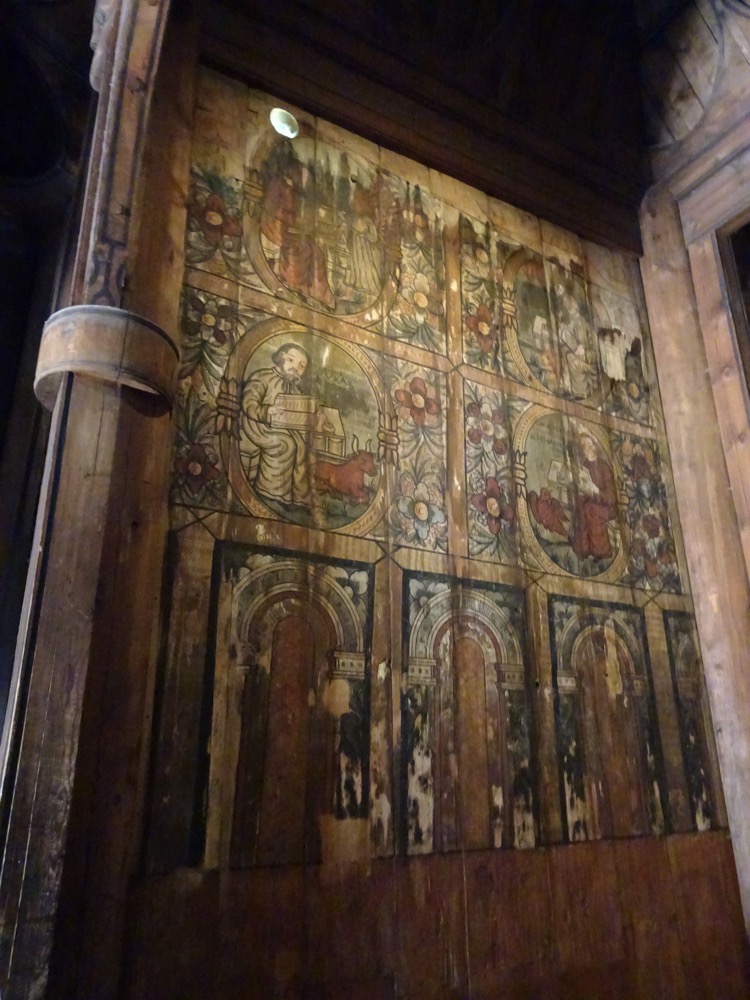
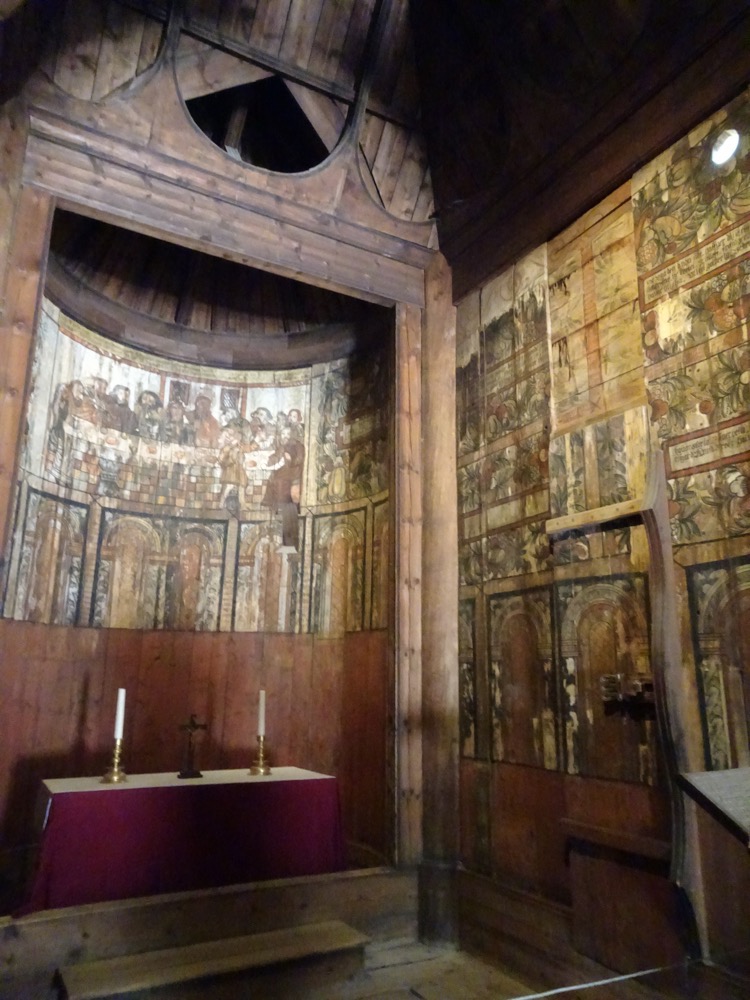
 The cloisered balconies? verandahs? that surrounded the church allow you to walk the entire perimeter of the church without going outside.
The cloisered balconies? verandahs? that surrounded the church allow you to walk the entire perimeter of the church without going outside.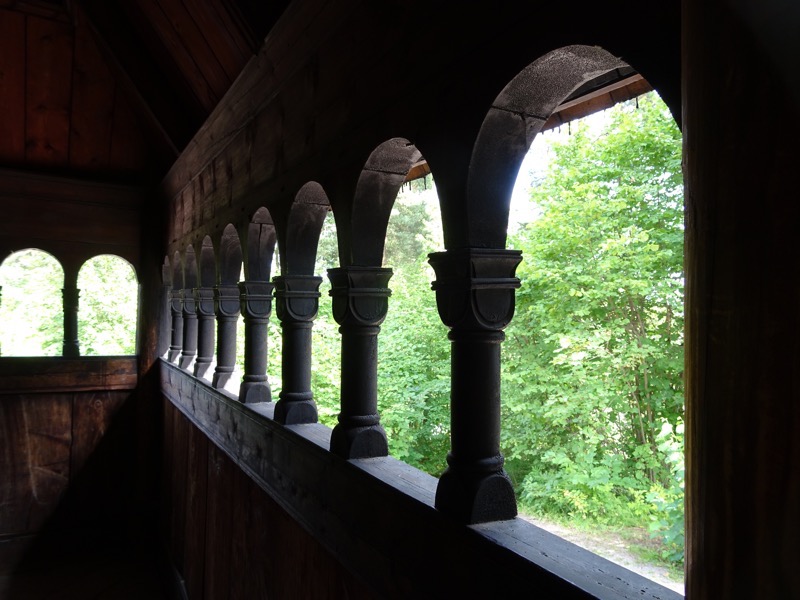 The carved entry doors to the stave church.
The carved entry doors to the stave church.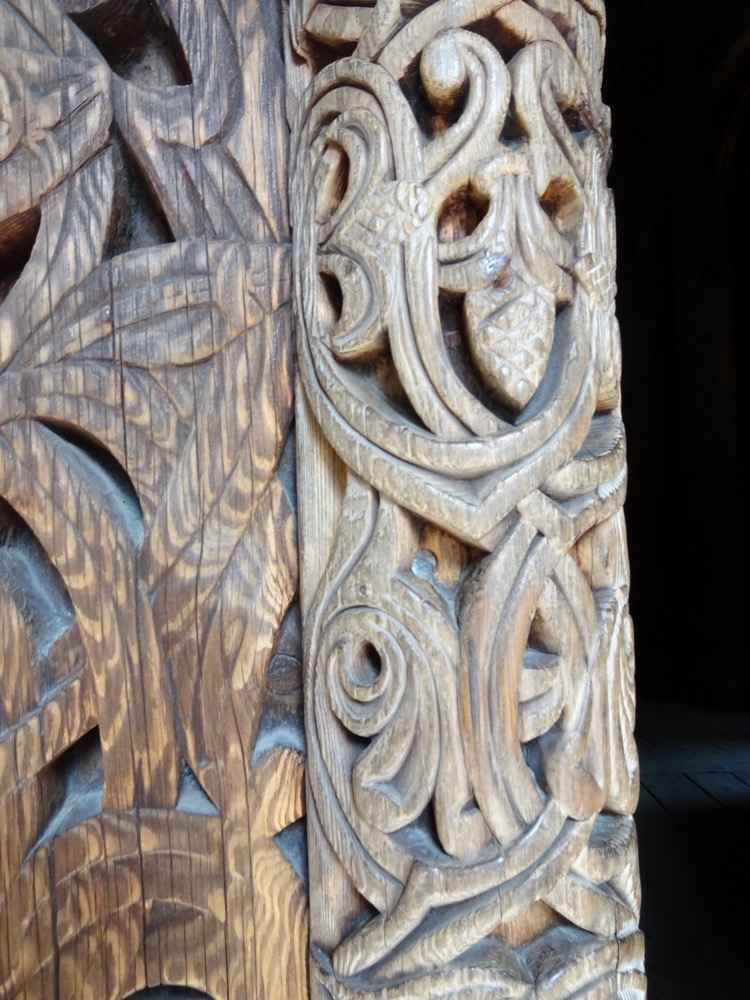

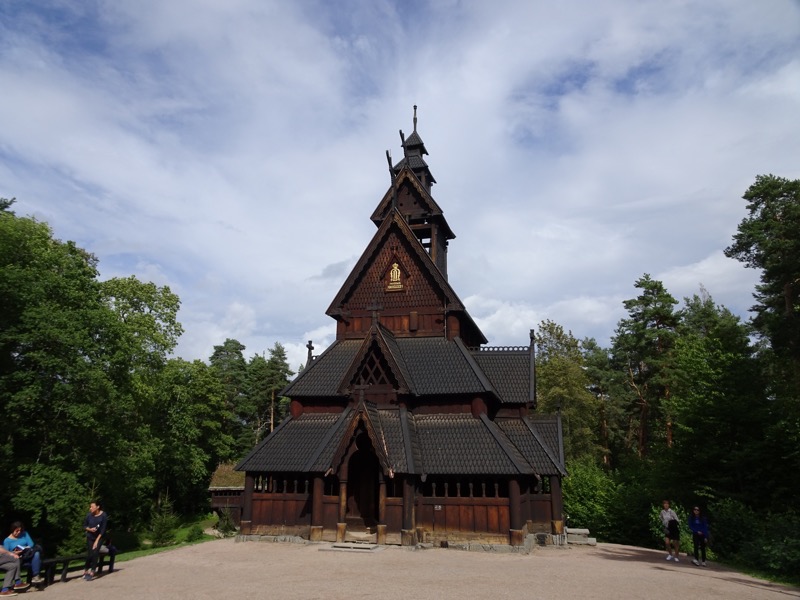
We also saw a number of other period buildings at the Norsk Folkemuseum mainly some farm buildings, a weavers workshop and a merchant’s home.
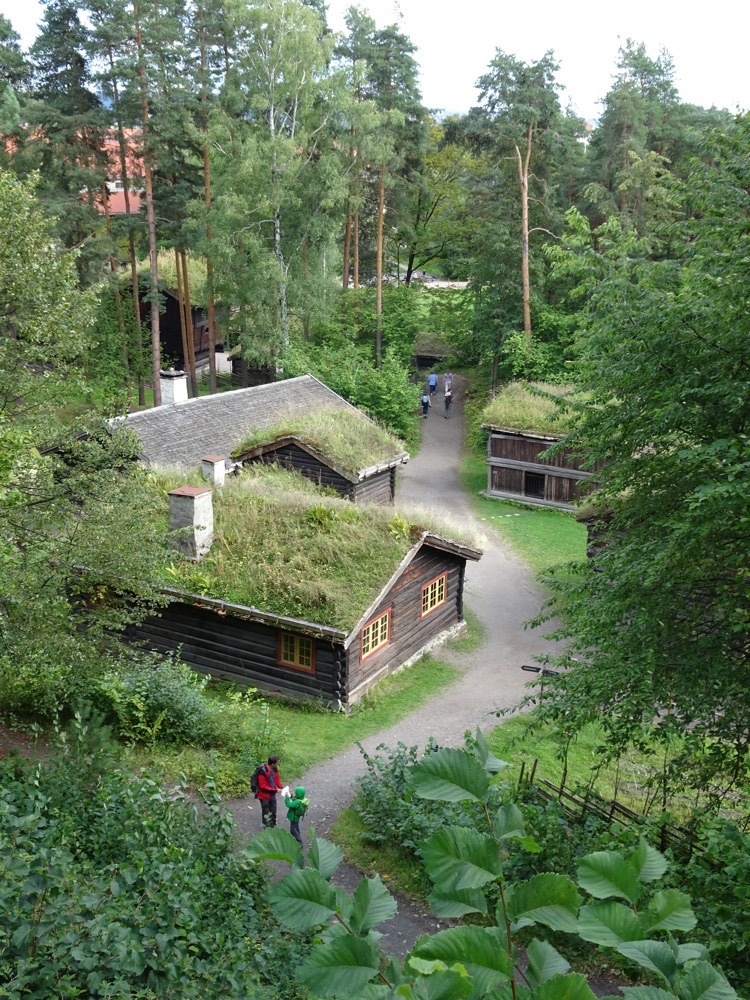
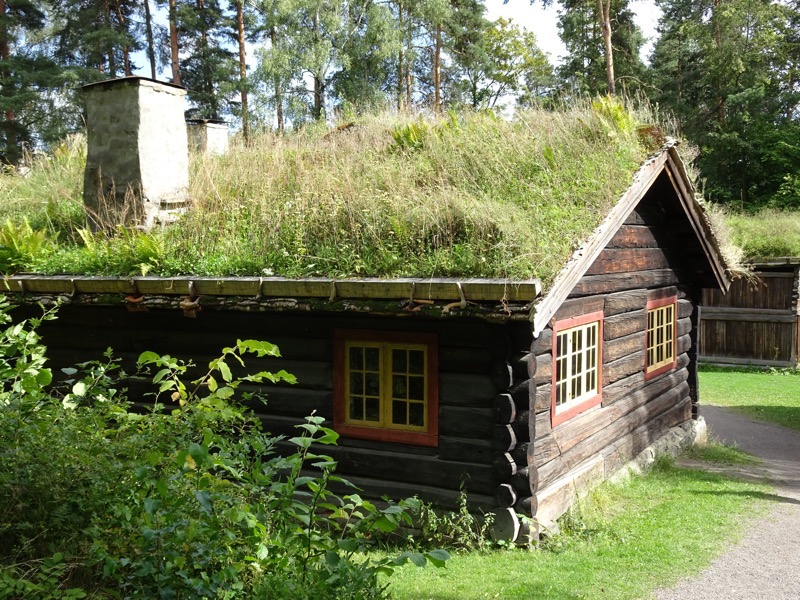
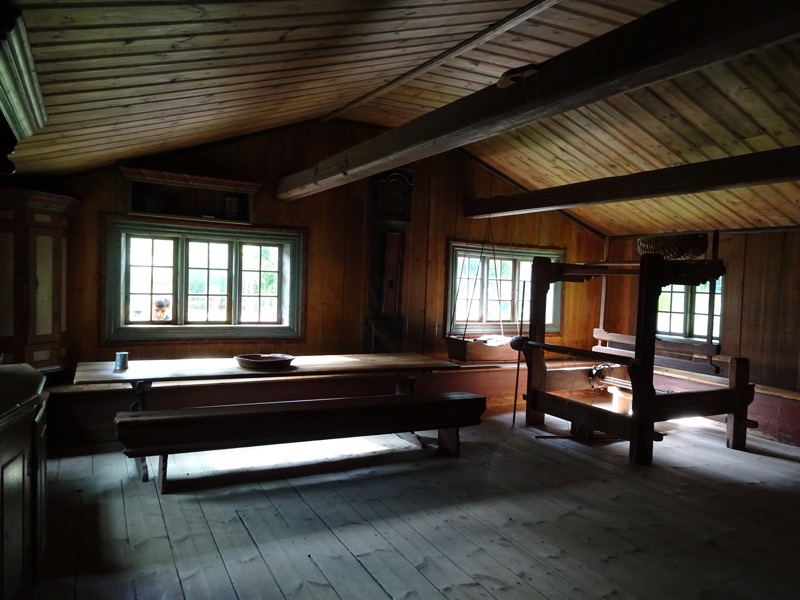
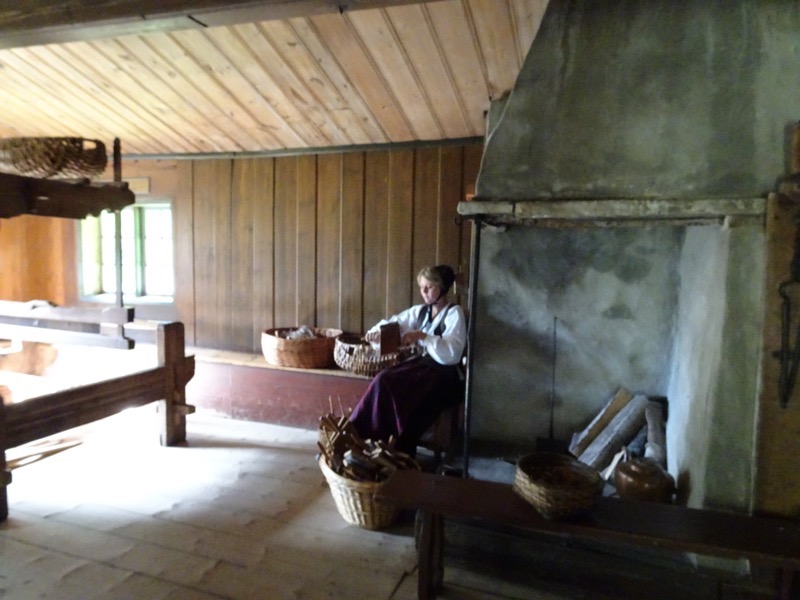
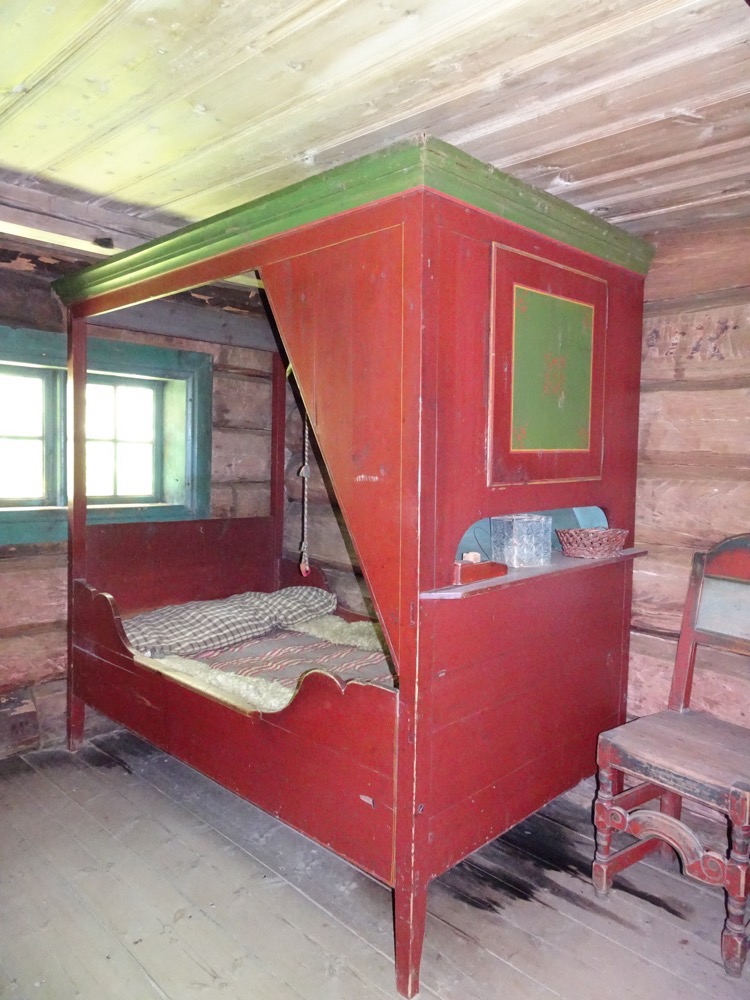
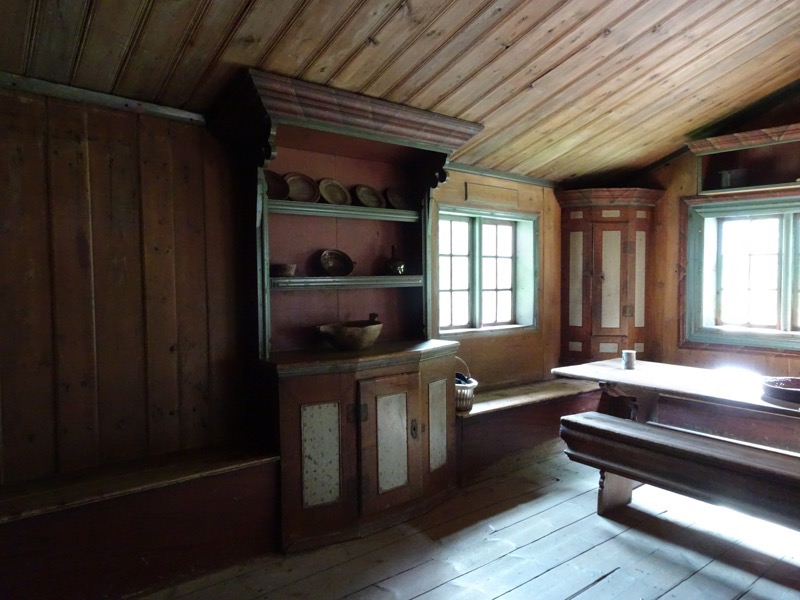
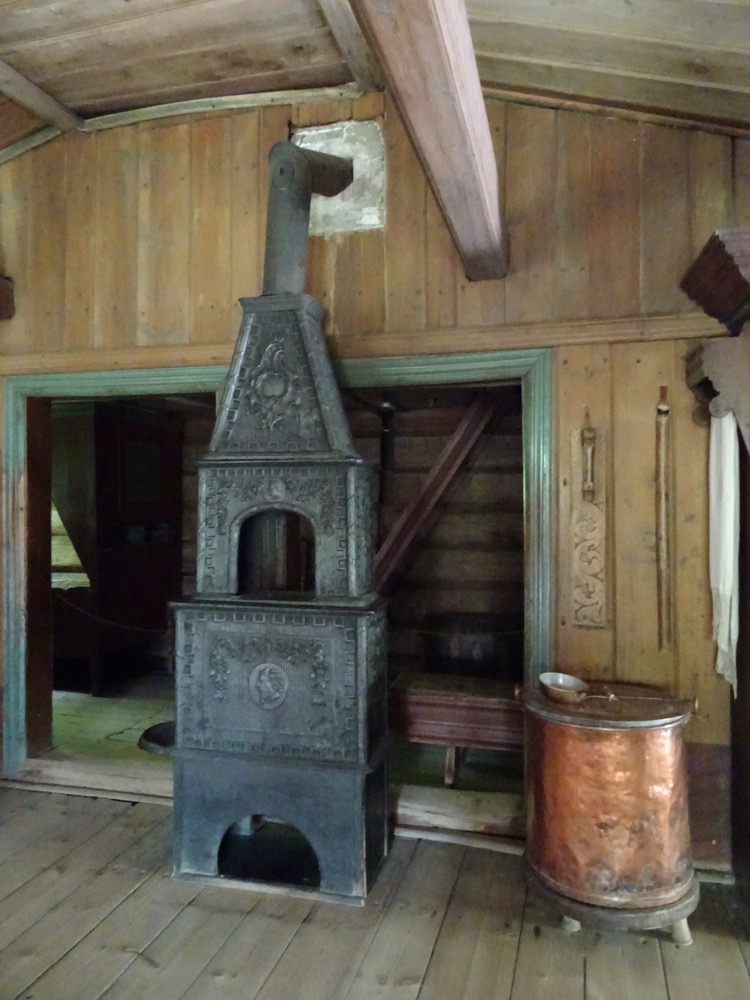
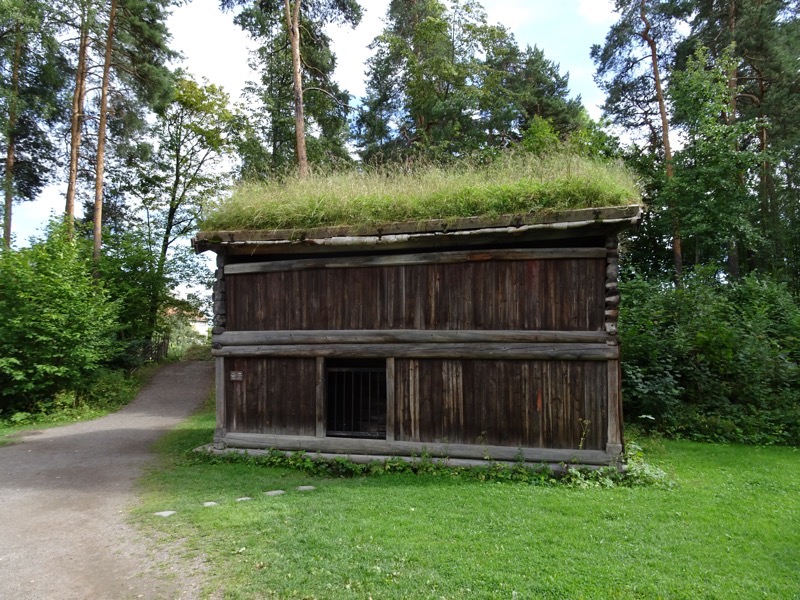

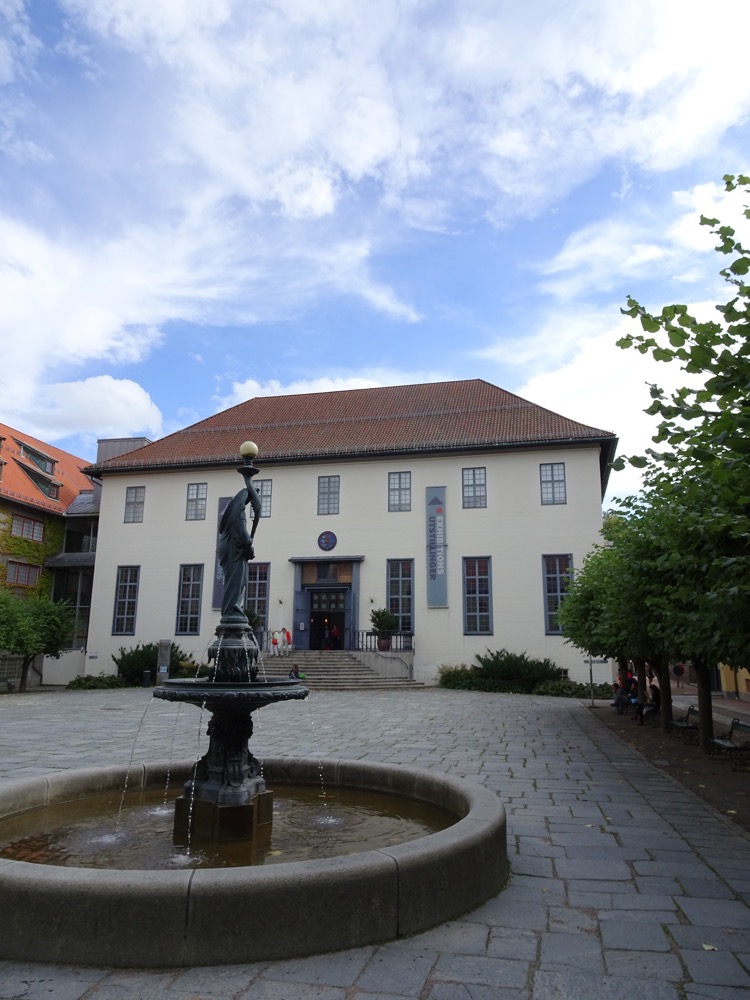
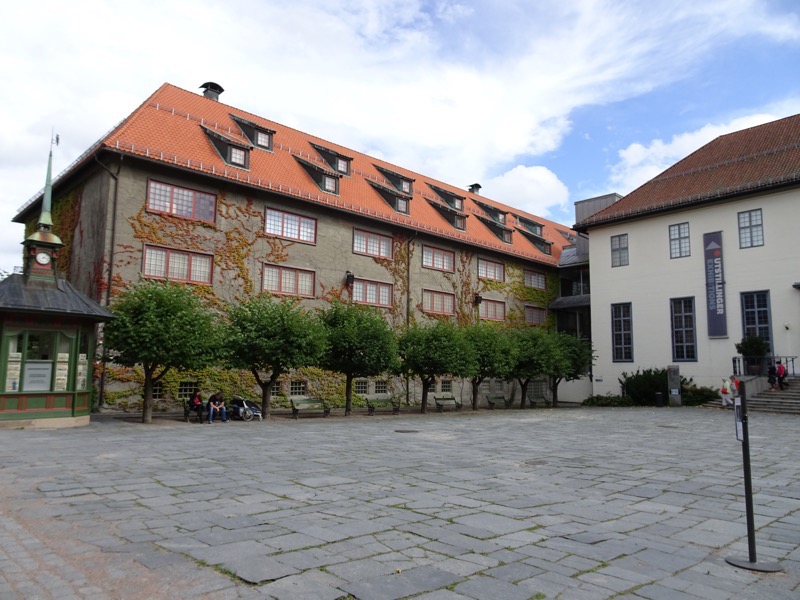
After admiring the church, we made our way back to the CBD to find the Museum of Cultural History – where, my research indicated, the bulk of Norway’s Medieval and Viking artefacts are housed. The museum’s collection had been built up over more than two centuries and includes over 1.5million objects (most of which are not on display of course). The collection includes medieval church art, coins, swords, household items, jewellery, some textiles (impossible to photograph), wood panels, furniture and all good things.
You enter through the Medieval exhibition which features famous the famous painted ceiling from the Al stave church – also from Hallingdal c.1250AD, and reflect very heavily typical Christian iconography of the Middle Ages… the Creation, the Nativity, the Passion and Resurrection of Christ. Unfortunately for foreign tourists, many, if not most, of the artefacts have plaques with little to no English on them, and the bookshop was closed on Saturday afternoon, so I was disappointed at how little information I was able to glean on each item – so, you will have to make of them what you will, and attempt to fill in the gaps where I have been unable to place any useful provenance.
Stave church doors depicting the story of Sigurd, the Dragon Killer. Faberg Church, Gudbrandsdal, Oppland, late 12th century. 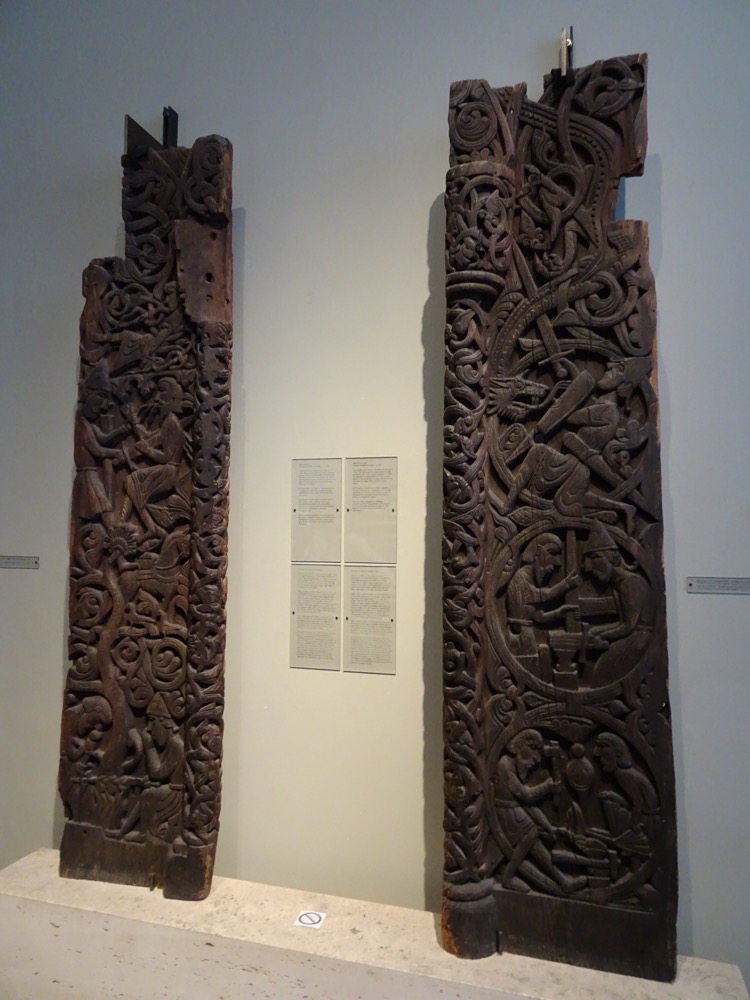 Horse collar, unknown provenance, c.1250-1300AD.
Horse collar, unknown provenance, c.1250-1300AD.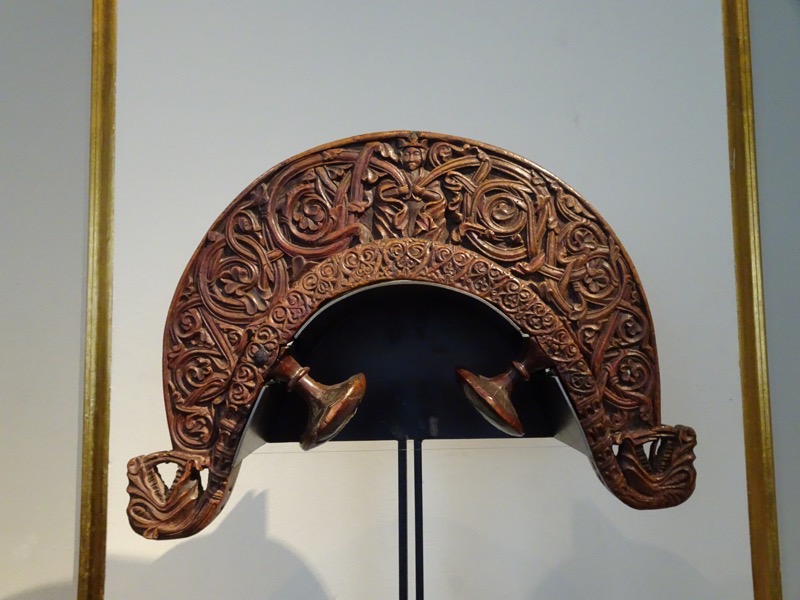 Sheild, 14thC bearing Runic inscription: “Gunnar made me, Helge owns me.”
Sheild, 14thC bearing Runic inscription: “Gunnar made me, Helge owns me.”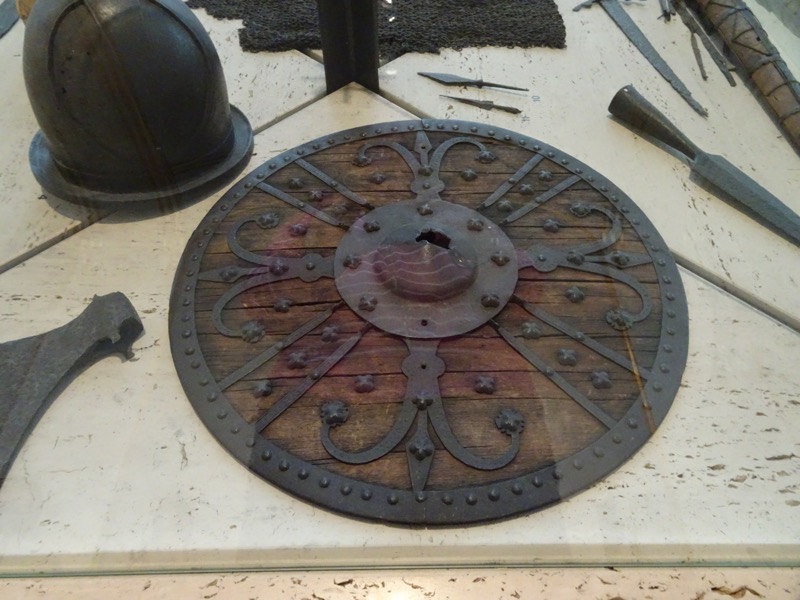
 Drinking horn, c.1300 with secondary mounts. Horn appears to be of a native Norwegian breed of cattle.
Drinking horn, c.1300 with secondary mounts. Horn appears to be of a native Norwegian breed of cattle.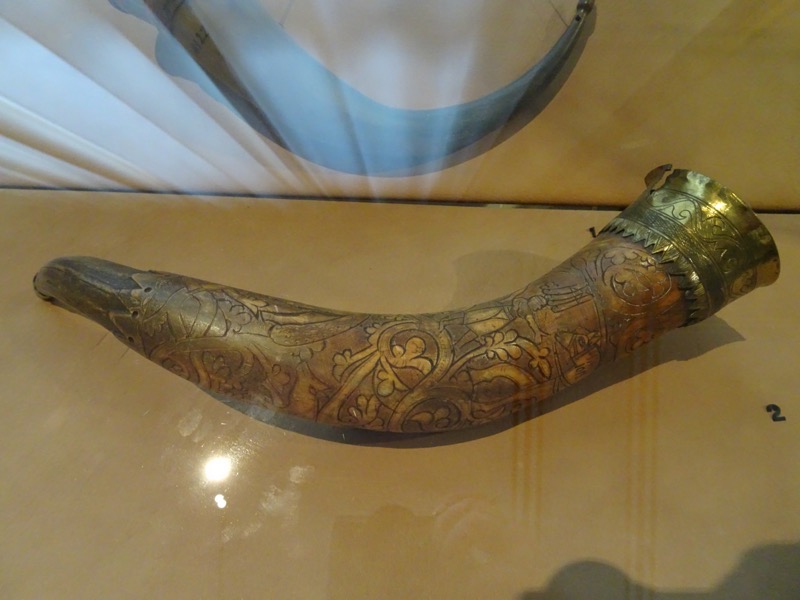 Drinking horn, horn and gilt silver. 15th century, Elingard, Onsey, Ostford.
Drinking horn, horn and gilt silver. 15th century, Elingard, Onsey, Ostford.
Latin inscription: Jesus of Nazareth, King of the Jews.
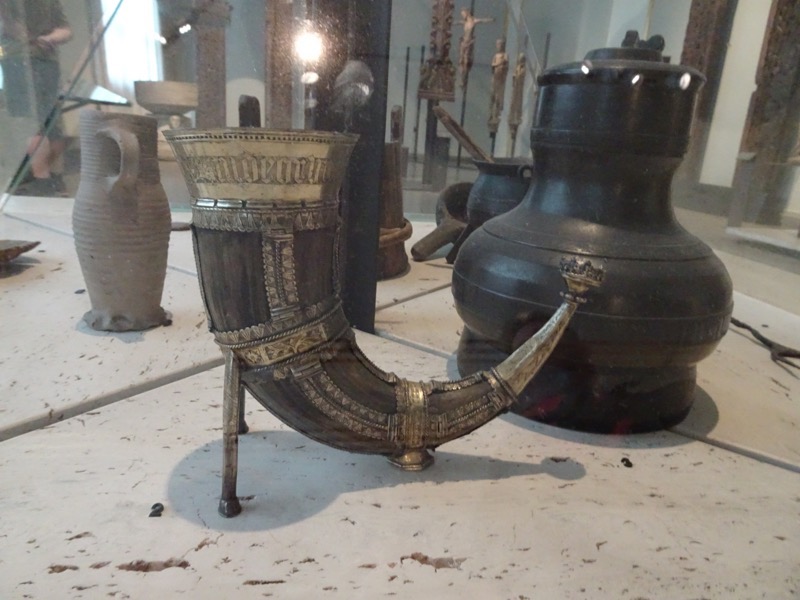
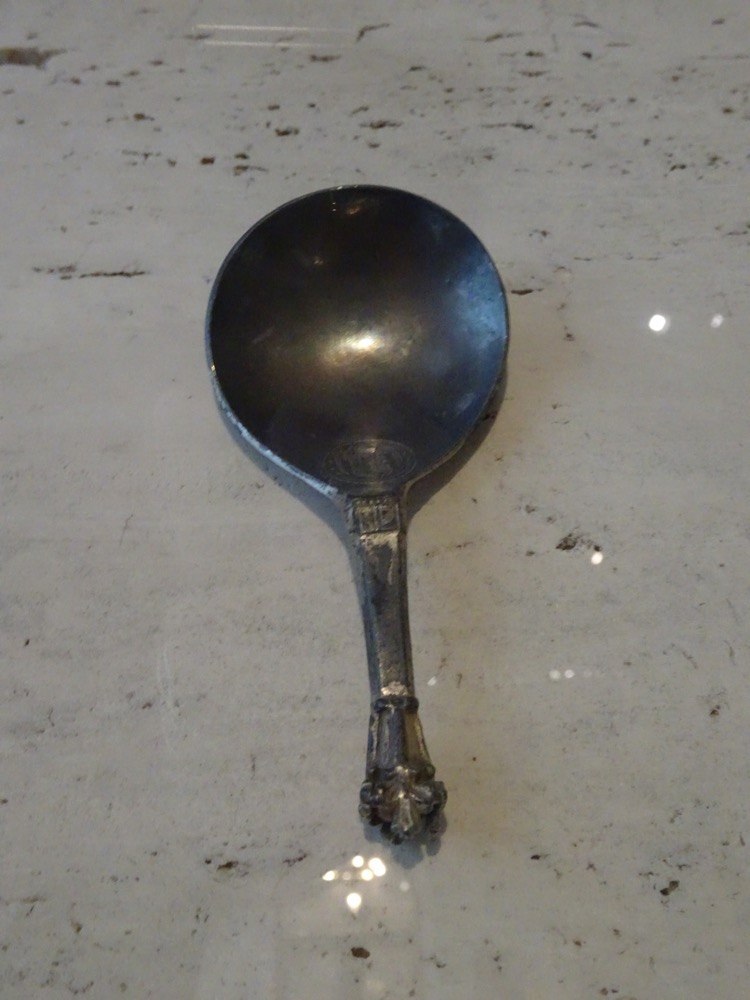
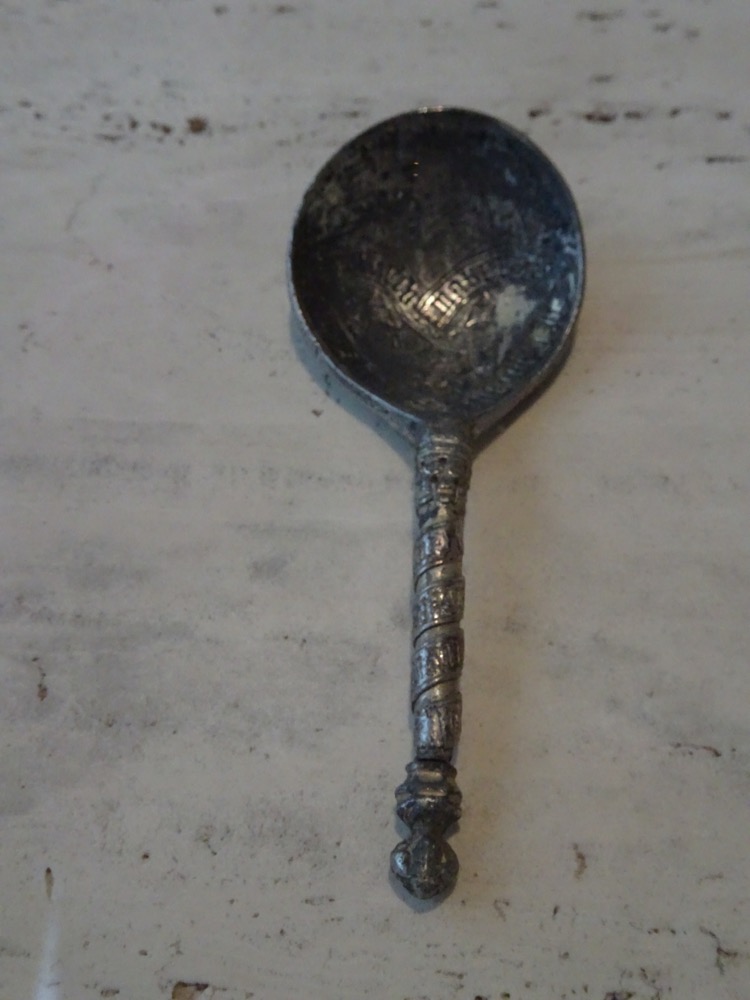 Chair, Tydol church, Osterdolen, Hedmark. c.1150-1200.
Chair, Tydol church, Osterdolen, Hedmark. c.1150-1200.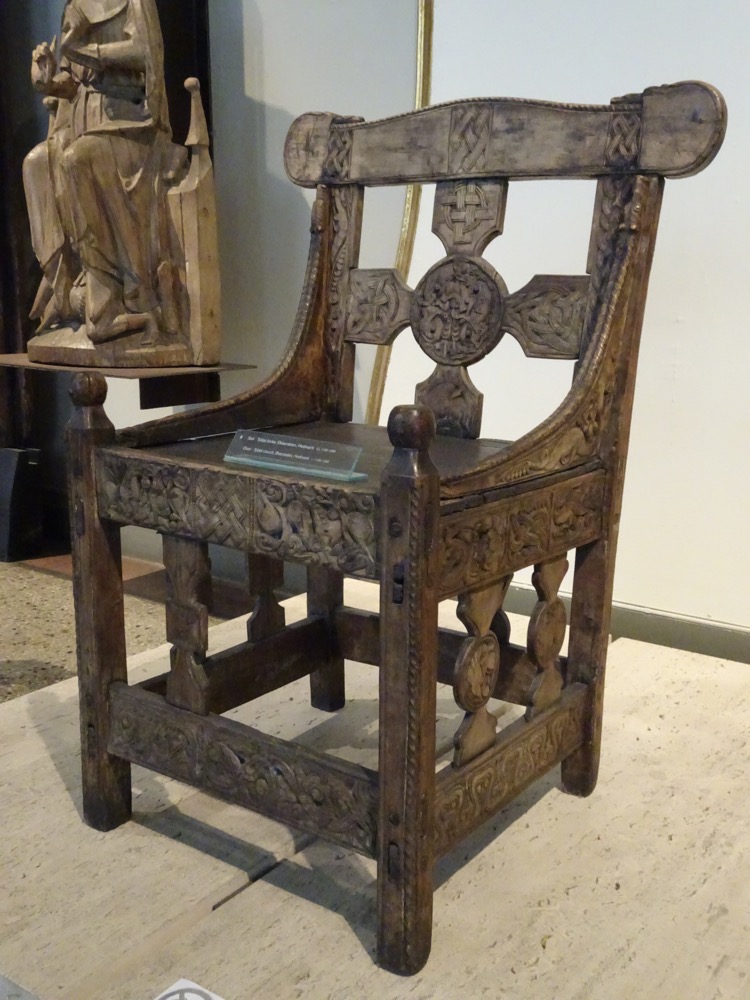 Baptismal font, Vale church, Westfold, c.1210-30.
Baptismal font, Vale church, Westfold, c.1210-30.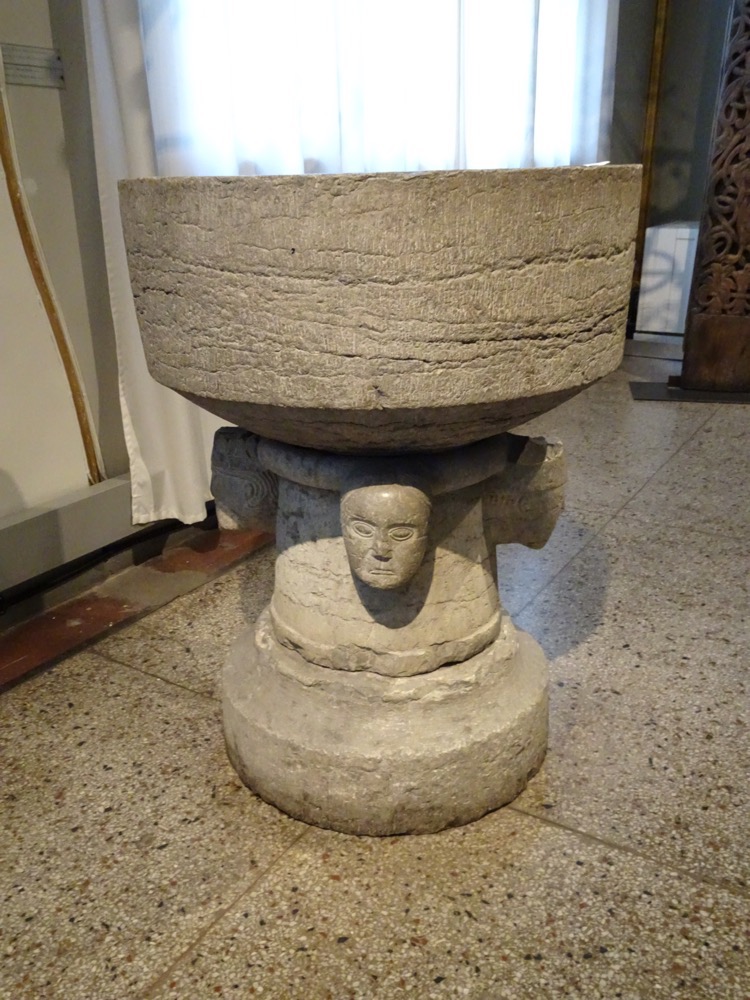
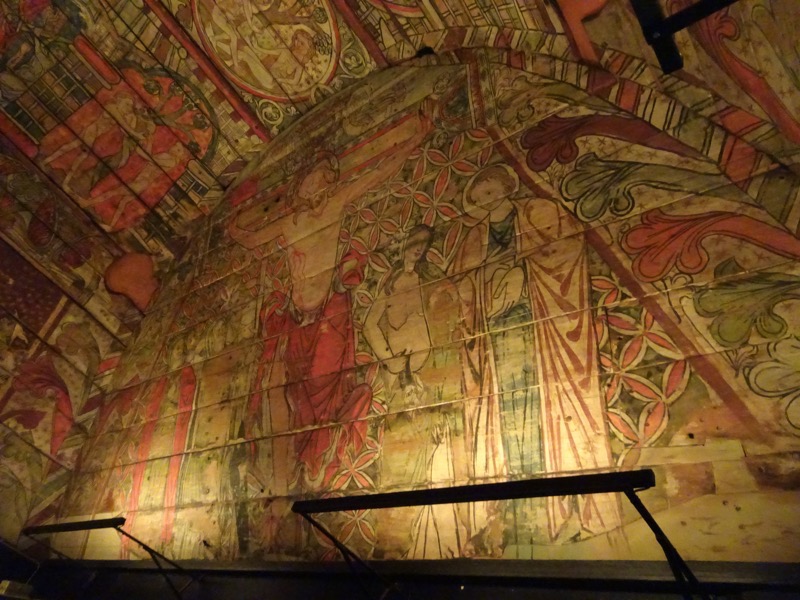
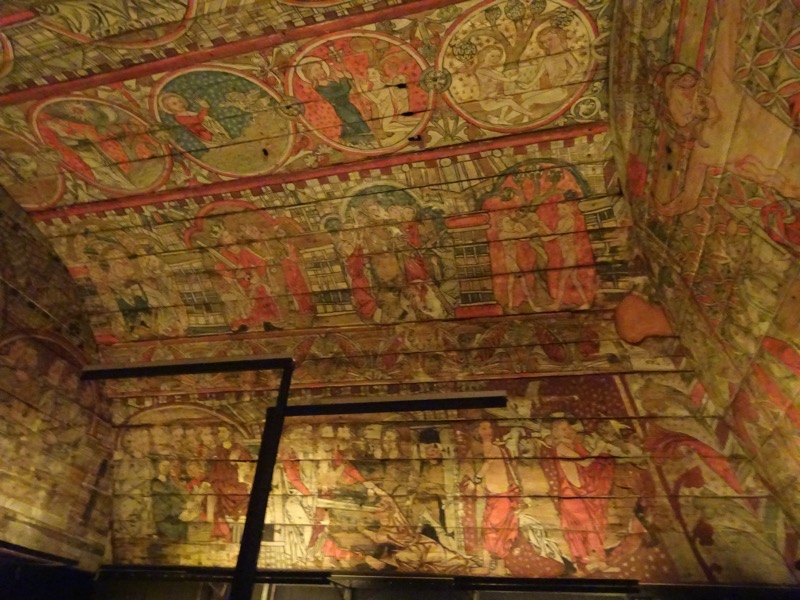
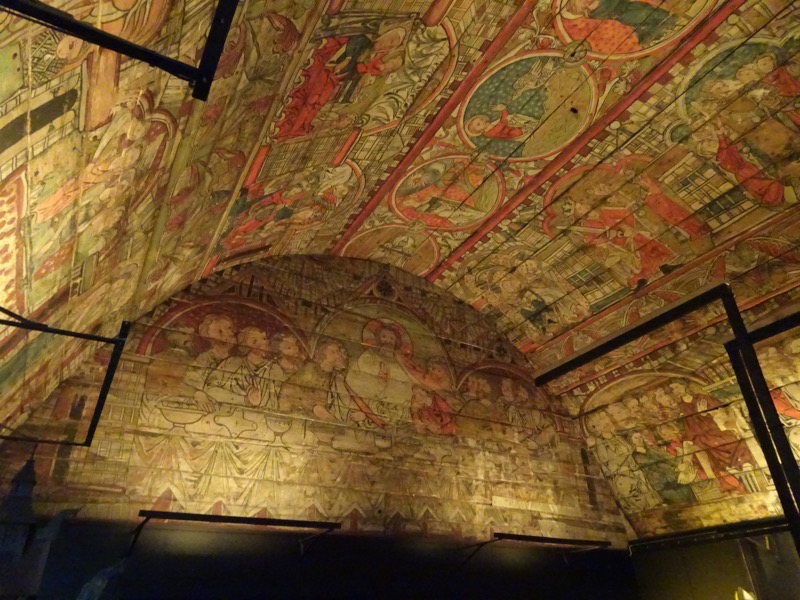
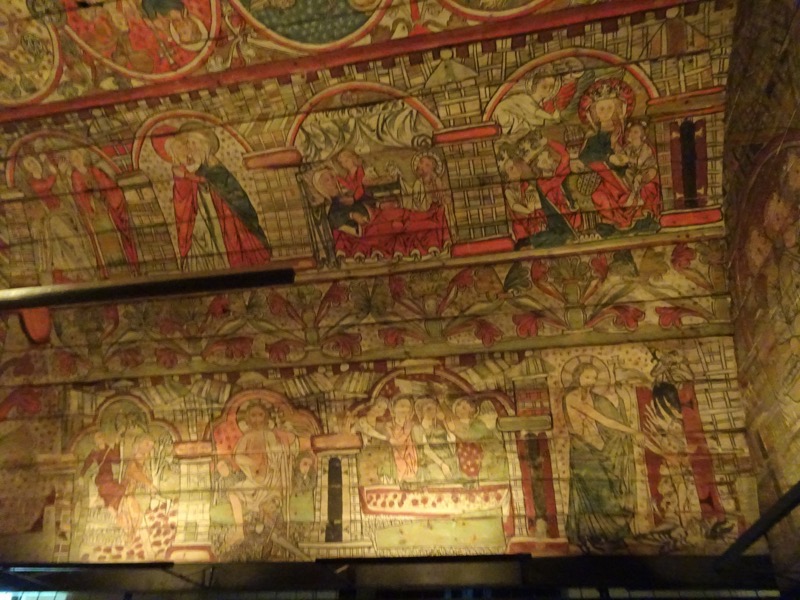
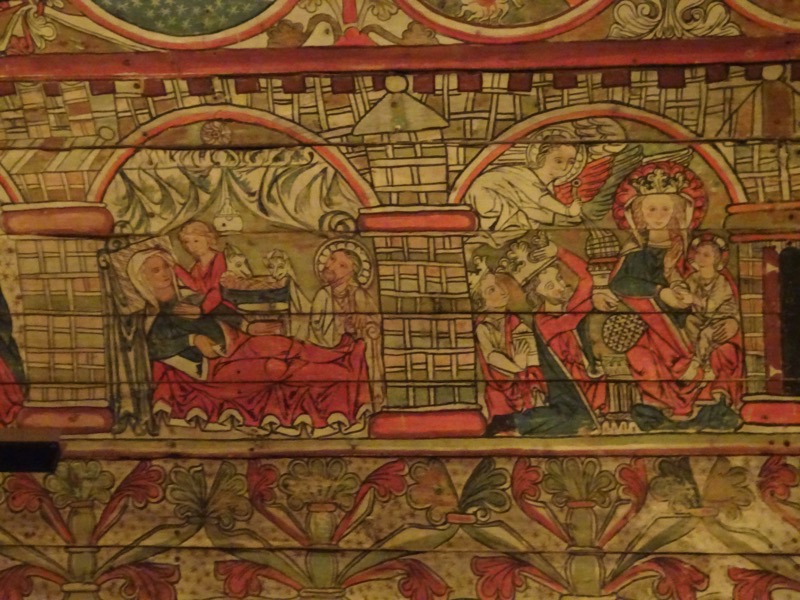 Aquamanile (knight), Helgeland, Nordland, c.1300. Brass. Northern Germany.
Aquamanile (knight), Helgeland, Nordland, c.1300. Brass. Northern Germany.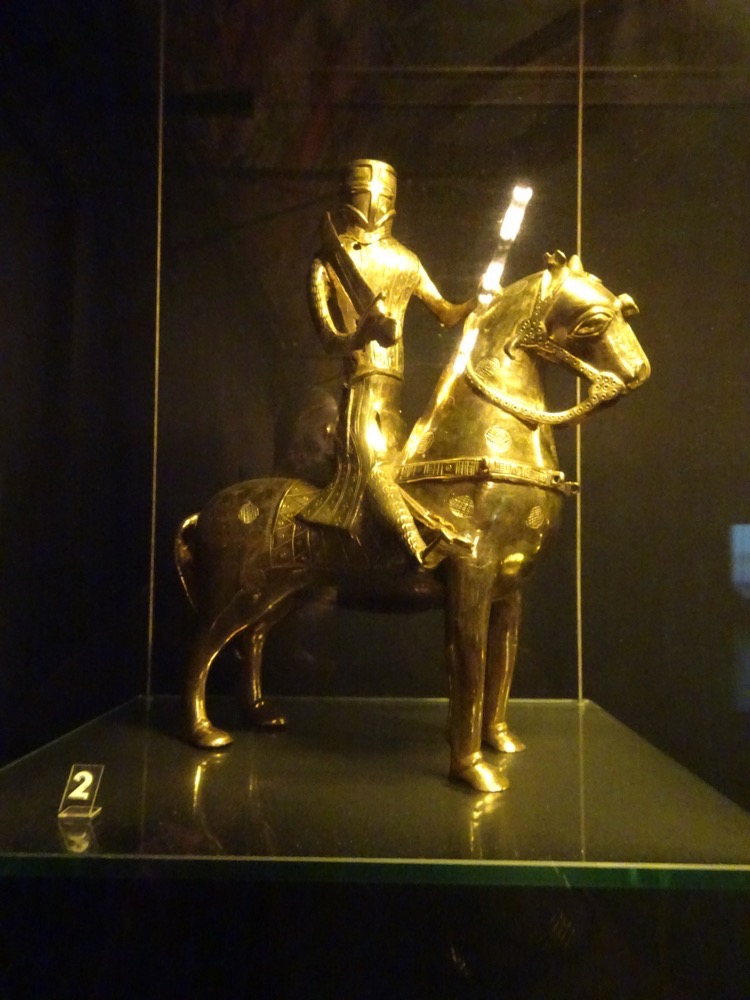
Through the Medieval exhibition is the Viking Exhibition rooms which introduce visitors to Viking life from the late 700s to the mid-1000sAD, with particular regard to politics, religion, social practice and technology of the period… which is awesome except for the continued lack of multi-lingual signage. :/
Shield bosses and horses bridles. Iron age period c.9th -11thC 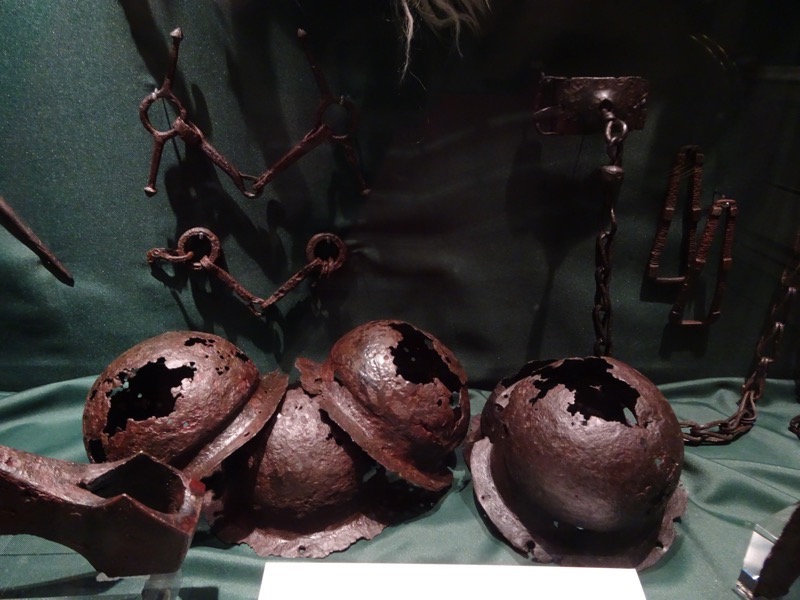 More lovely beads in predominantly matching colour schemes. Brooches, beads, and bracelet below – 10thC.
More lovely beads in predominantly matching colour schemes. Brooches, beads, and bracelet below – 10thC.
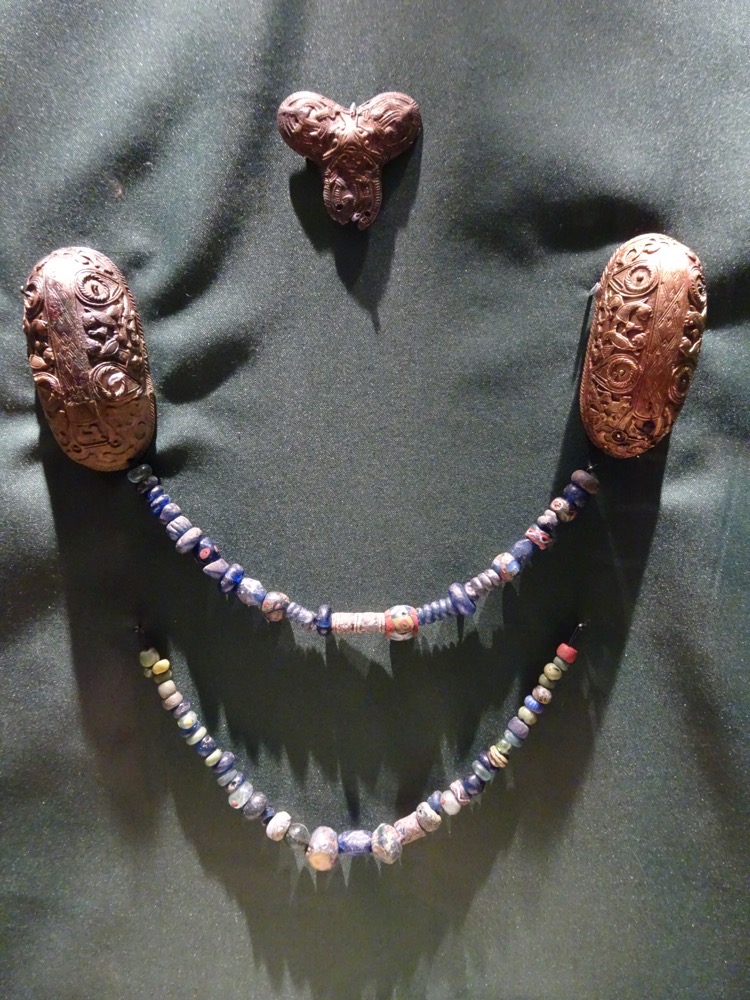
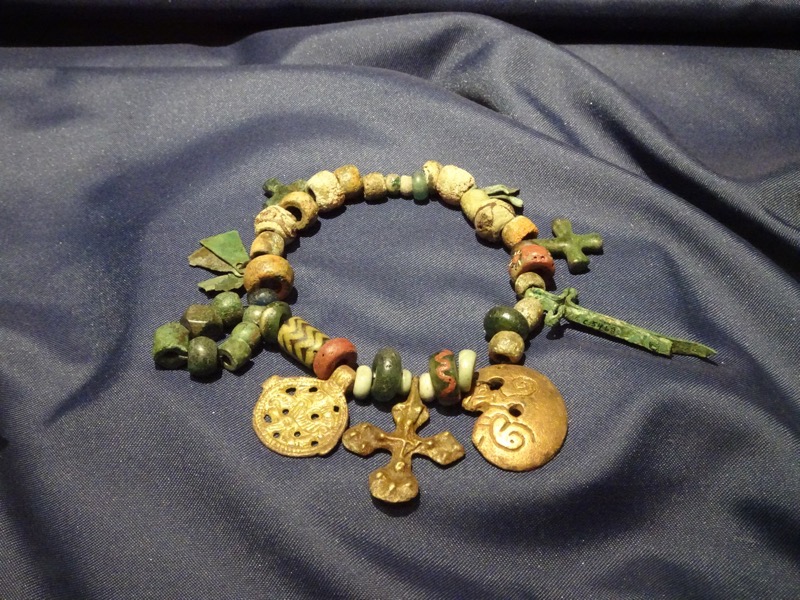 Shaman’s drum hammer. Carved bone. 11th century, Nordset, Rendalen, Hedmark.
Shaman’s drum hammer. Carved bone. 11th century, Nordset, Rendalen, Hedmark.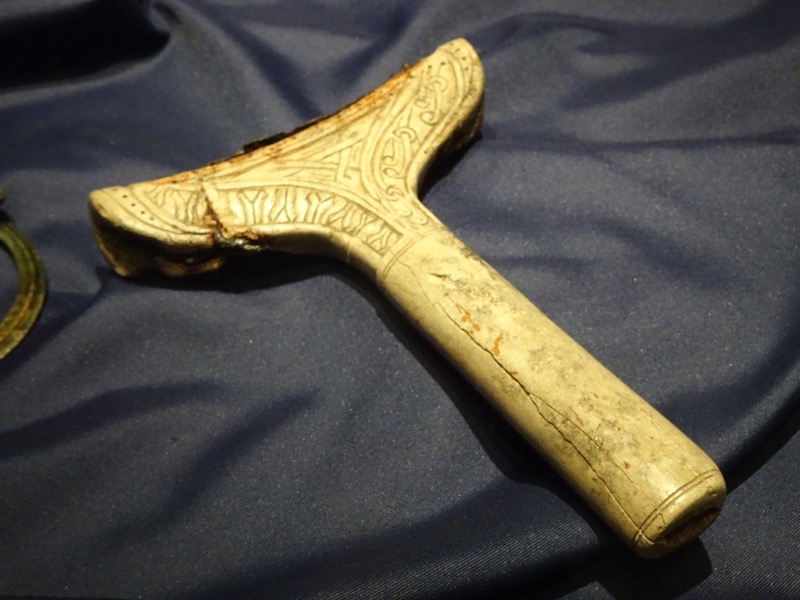
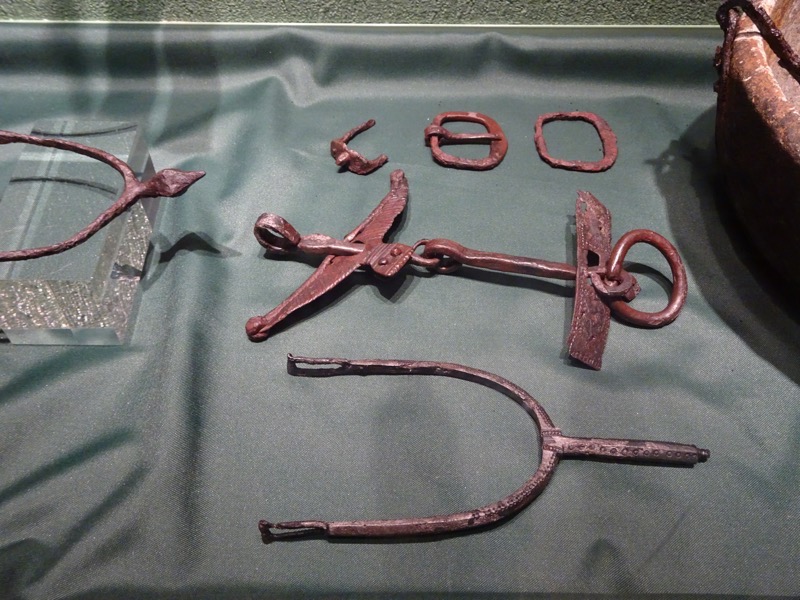
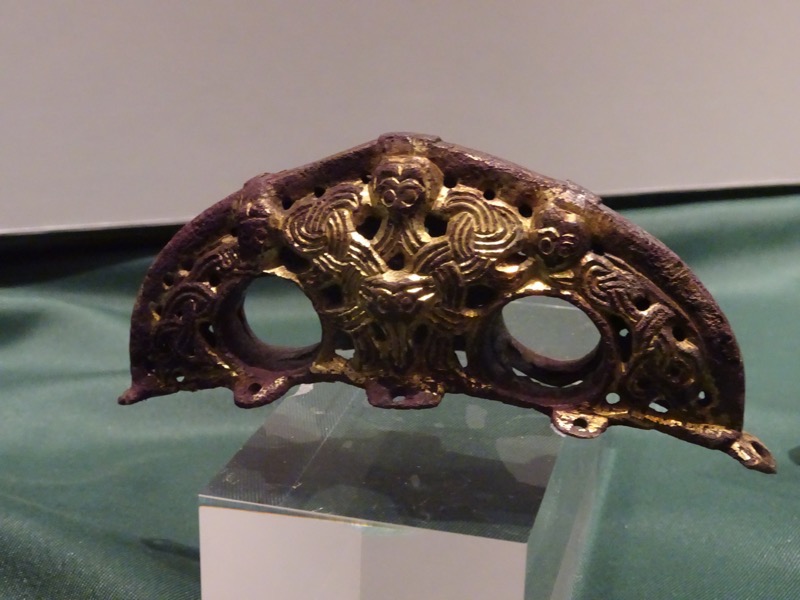 More lovely matching and symmetrical bead sets… I can’t express how pleased I am to find now three sets of beads, across Sweden and Norway, that are not a completely psychotic arrangement of chaotic colour, type and size. The order inherent in some of these bead sets is reassuring.
More lovely matching and symmetrical bead sets… I can’t express how pleased I am to find now three sets of beads, across Sweden and Norway, that are not a completely psychotic arrangement of chaotic colour, type and size. The order inherent in some of these bead sets is reassuring.
Beads, Hovland, Larvik, Vestfold, Viking Age (not very specific, but we can take that to mean c.700-1100AD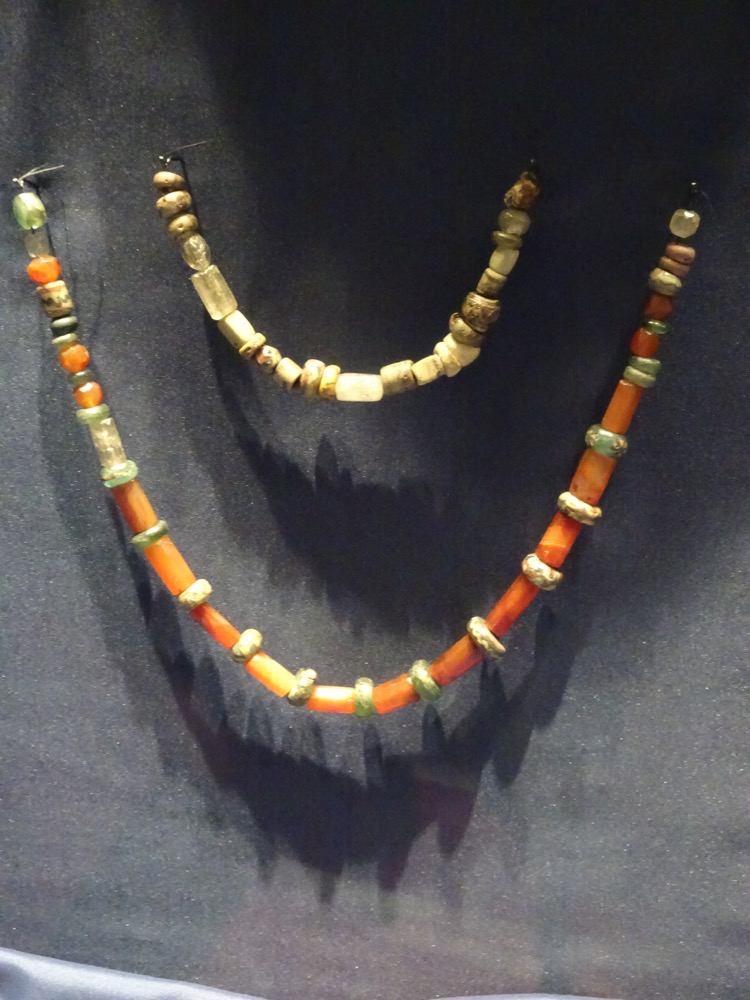 9th C tortoise broach and Verbrannte Leiche. 😀
9th C tortoise broach and Verbrannte Leiche. 😀 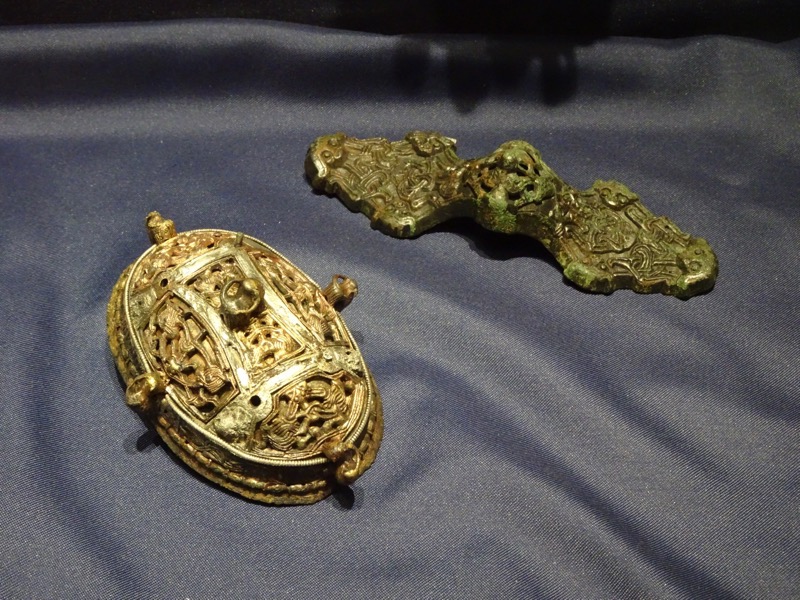
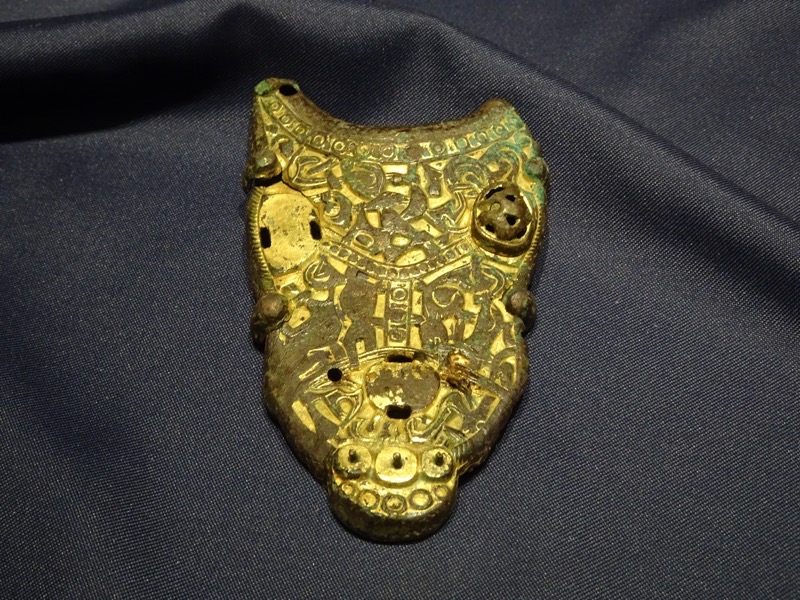
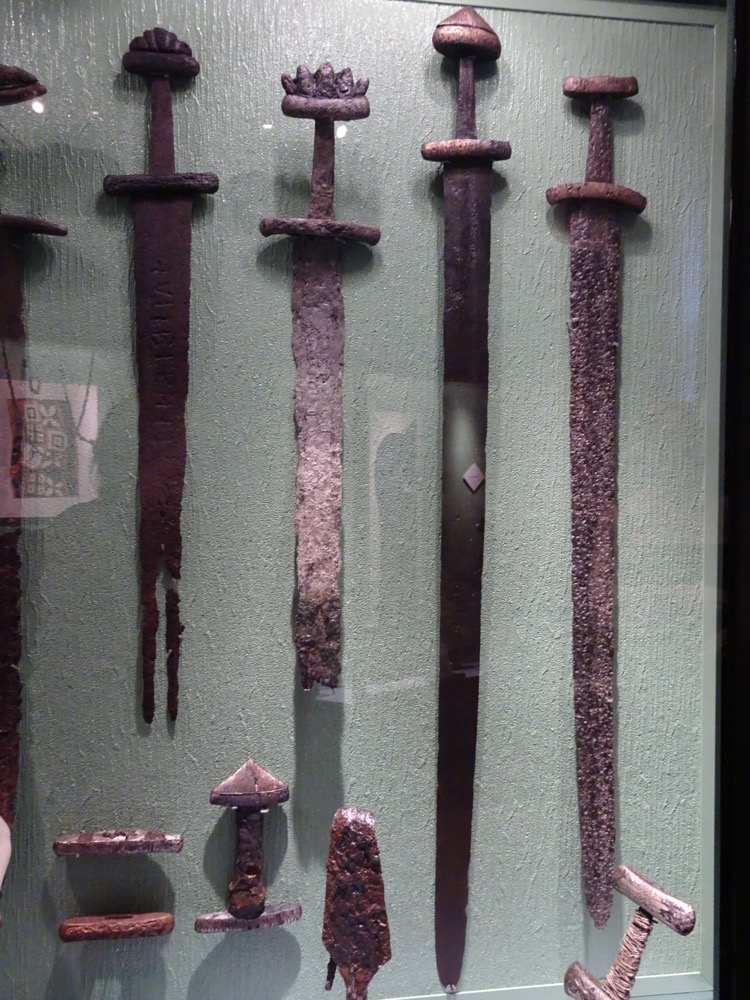
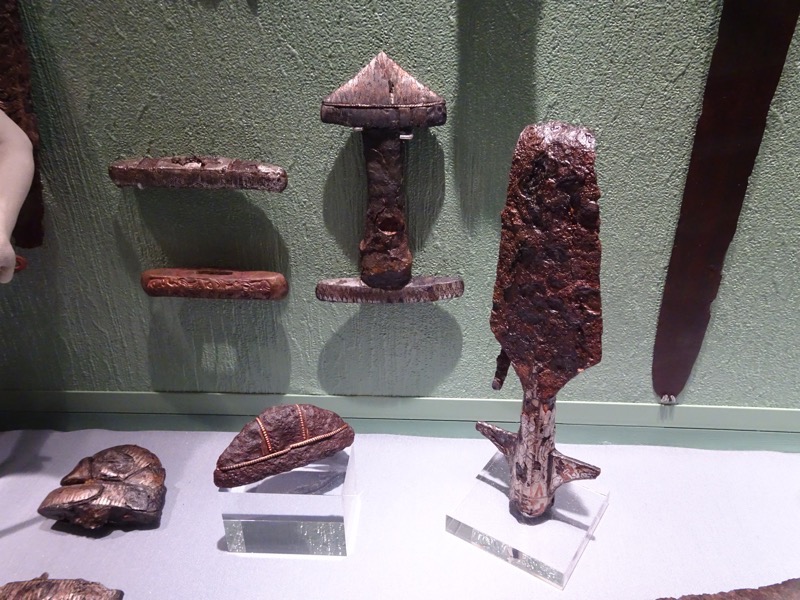
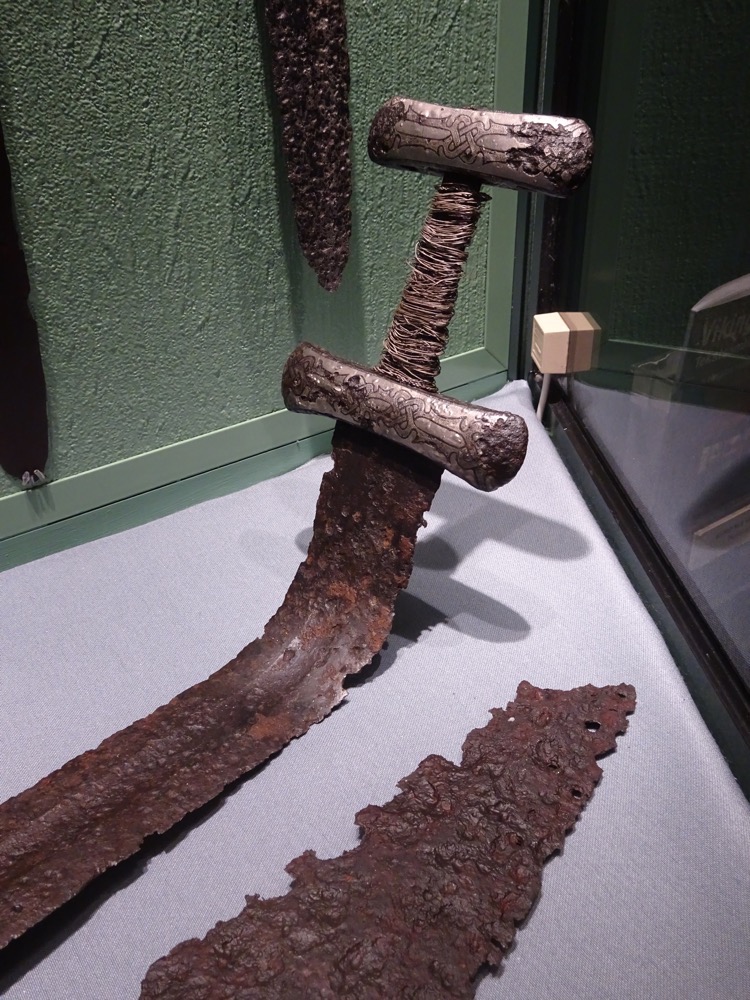
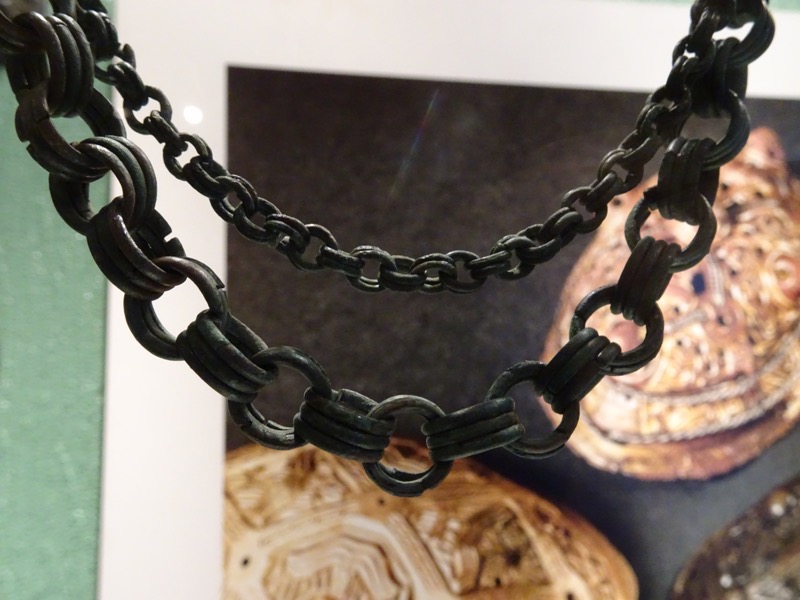 More 9th century tortoise brooches.
More 9th century tortoise brooches.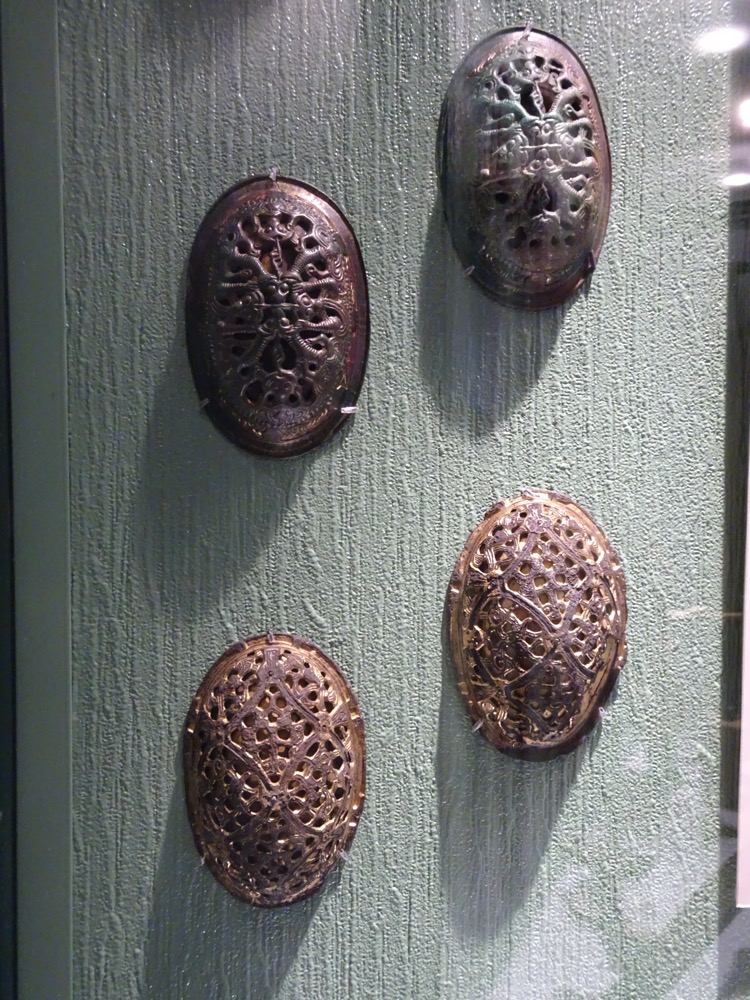
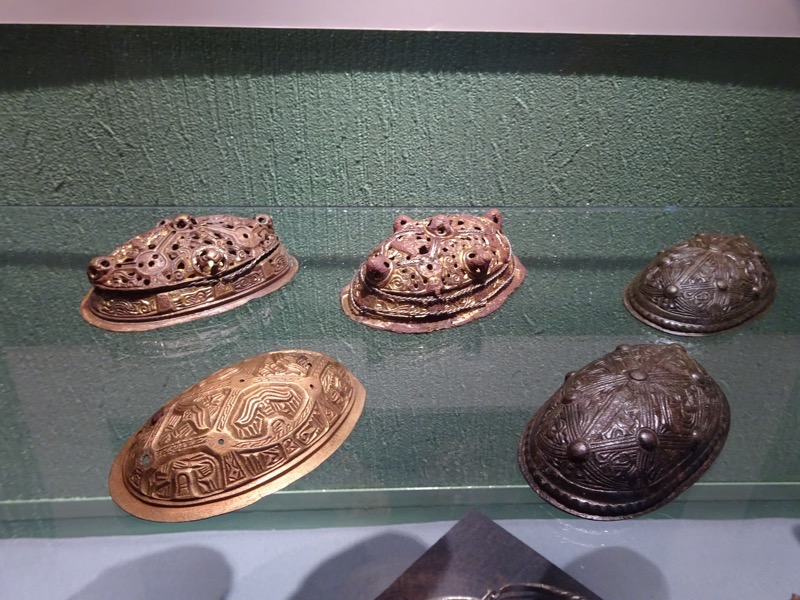 This amazing brooch from Hovland, Larvik, Vestfold, shows beautifully braided silver wire wound in and around the holes in the design of the brooch. I tried to photograph the underside but without success. 9th century, and appears to be very ususual.
This amazing brooch from Hovland, Larvik, Vestfold, shows beautifully braided silver wire wound in and around the holes in the design of the brooch. I tried to photograph the underside but without success. 9th century, and appears to be very ususual.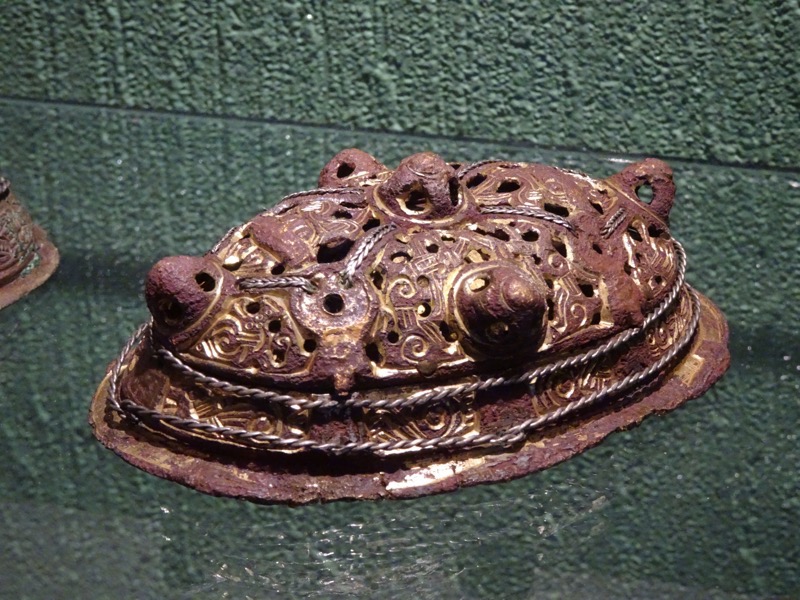 Trefoil brooches. 9th-10th century.
Trefoil brooches. 9th-10th century.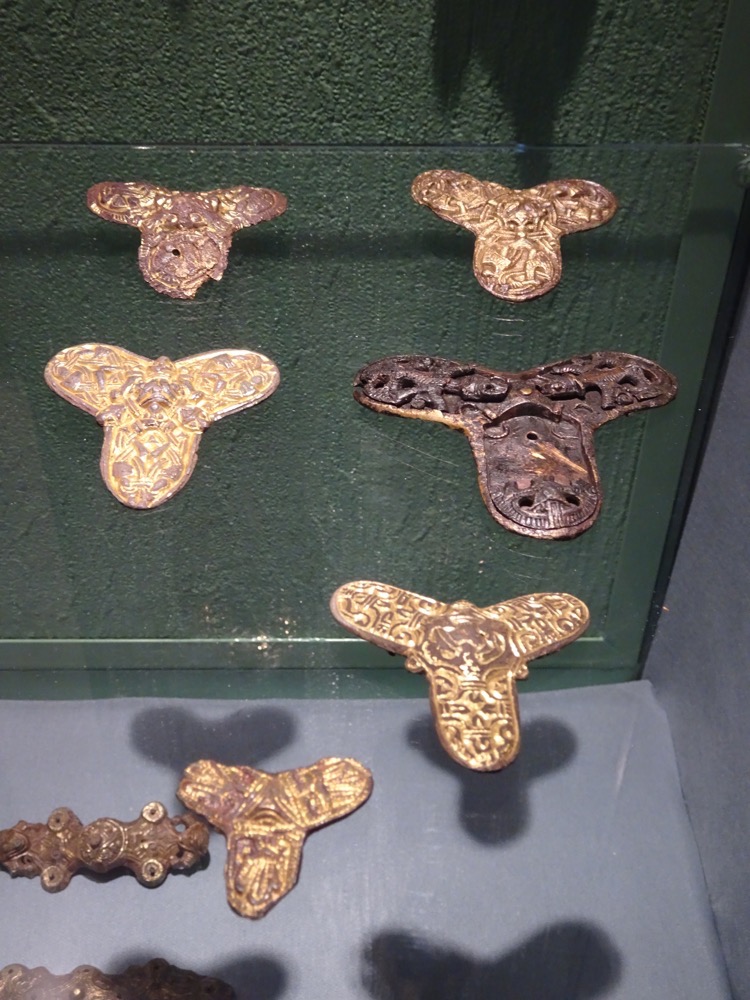
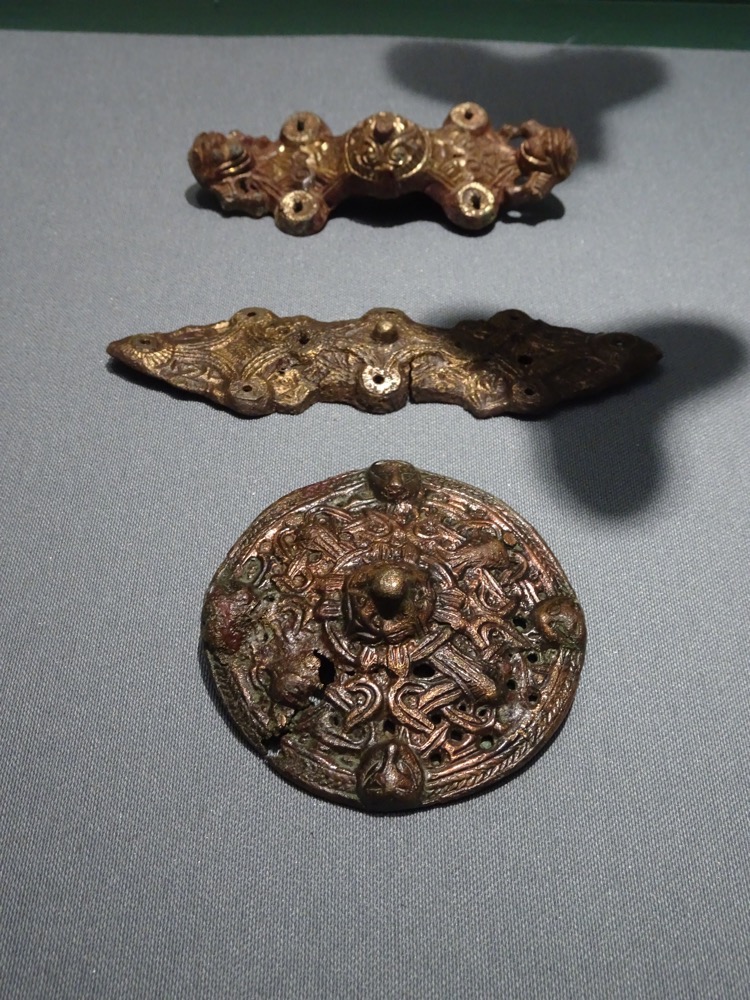
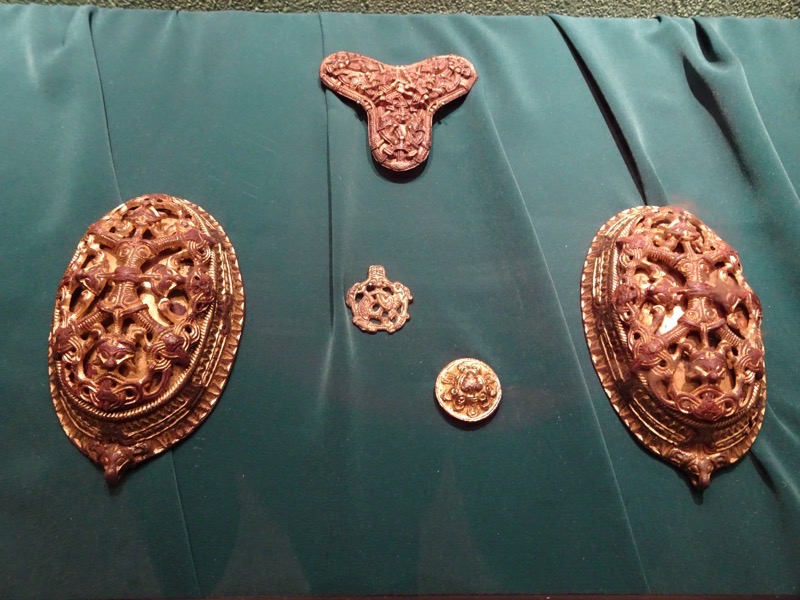
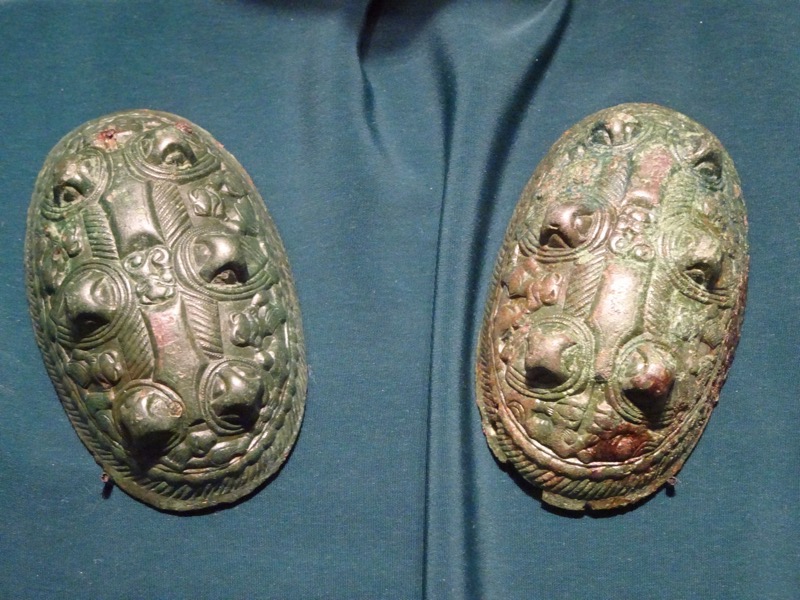
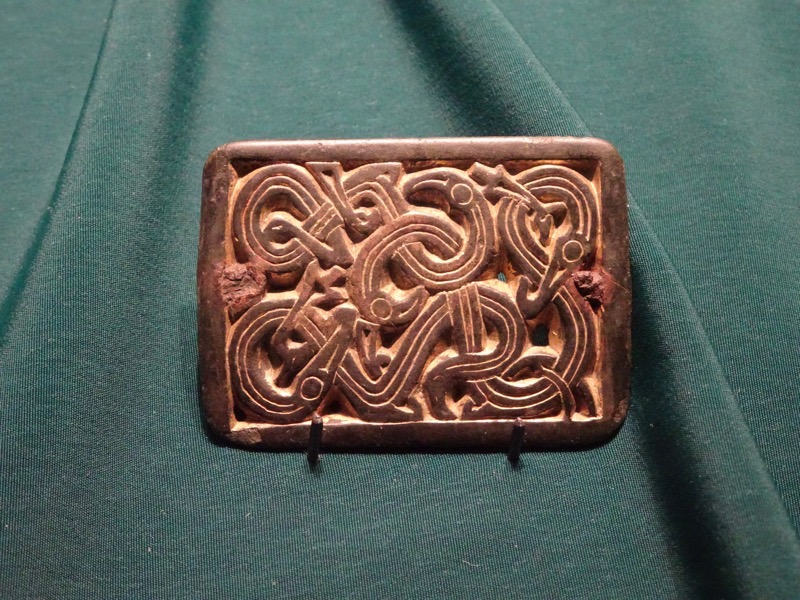 Male jarl grave find from Funde aus Mannergrab. Gjermundbu, Ringerkike, Buskerud, 10th century:
Male jarl grave find from Funde aus Mannergrab. Gjermundbu, Ringerkike, Buskerud, 10th century: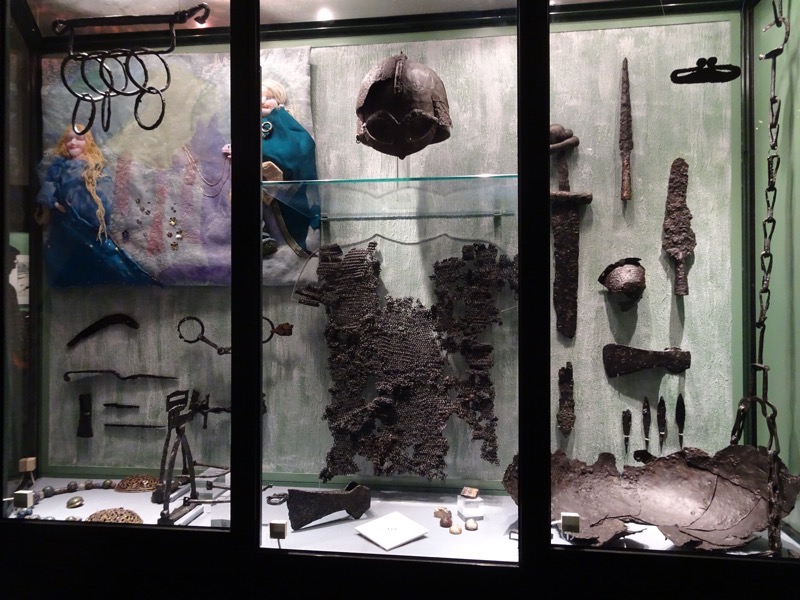 Contains: rattles, sickles, rasp, bell, knife, file, horse-bits, stirrups, spurs, helm, chain mail shirt, axe, 2 dice, 3 gaming pieces, sword, spear, fire-steel, spear, shield boss, axe, chape, cauldron, crampons, chain for cauldron.
Contains: rattles, sickles, rasp, bell, knife, file, horse-bits, stirrups, spurs, helm, chain mail shirt, axe, 2 dice, 3 gaming pieces, sword, spear, fire-steel, spear, shield boss, axe, chape, cauldron, crampons, chain for cauldron.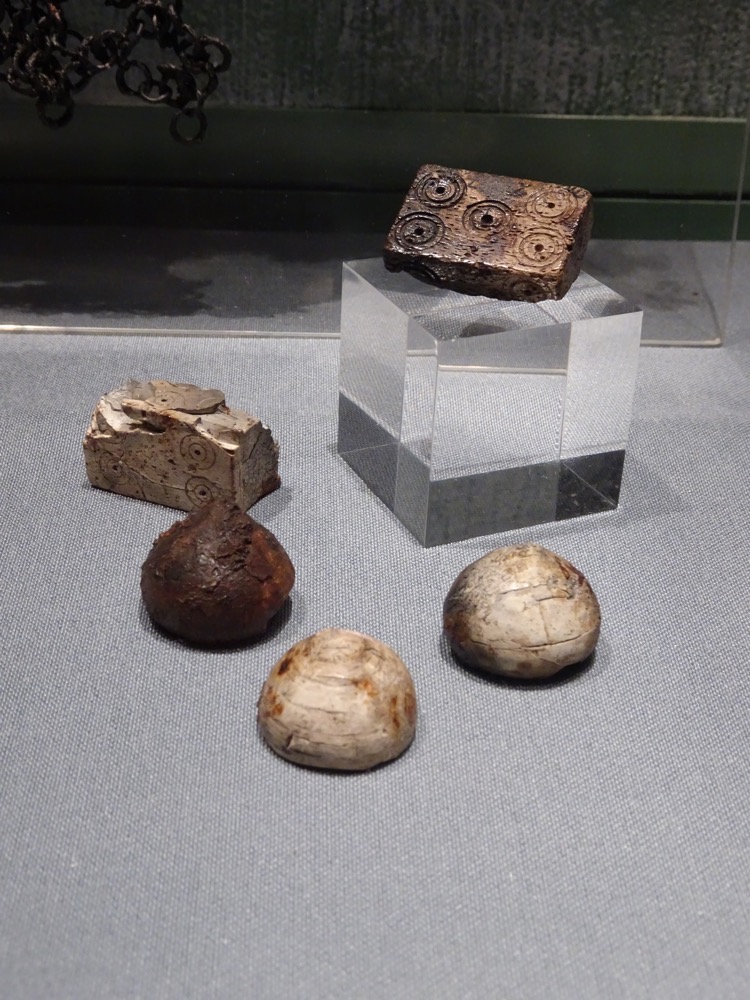

 Female grave find from Ryem, Vikna, Nord-Trondelag, 10th century. Brooches, and beads. Those beads were enromous… my thumb included for scale.
Female grave find from Ryem, Vikna, Nord-Trondelag, 10th century. Brooches, and beads. Those beads were enromous… my thumb included for scale. 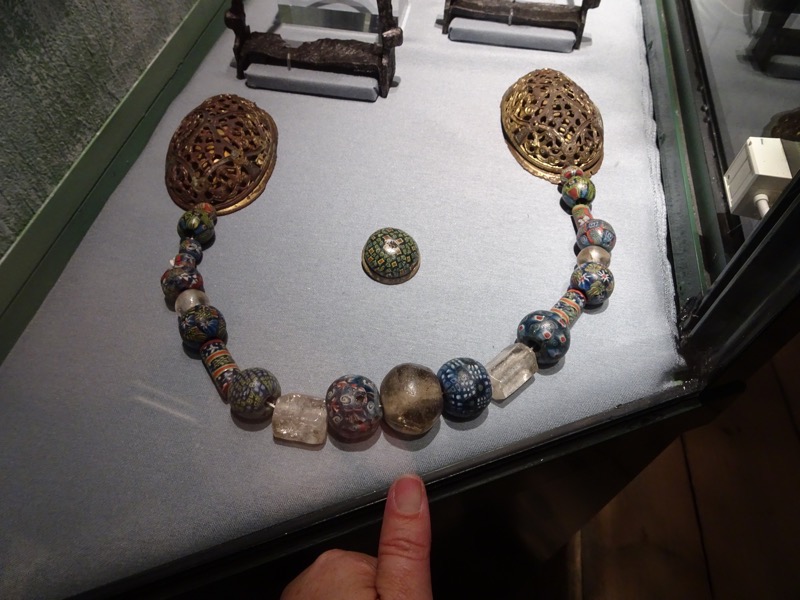
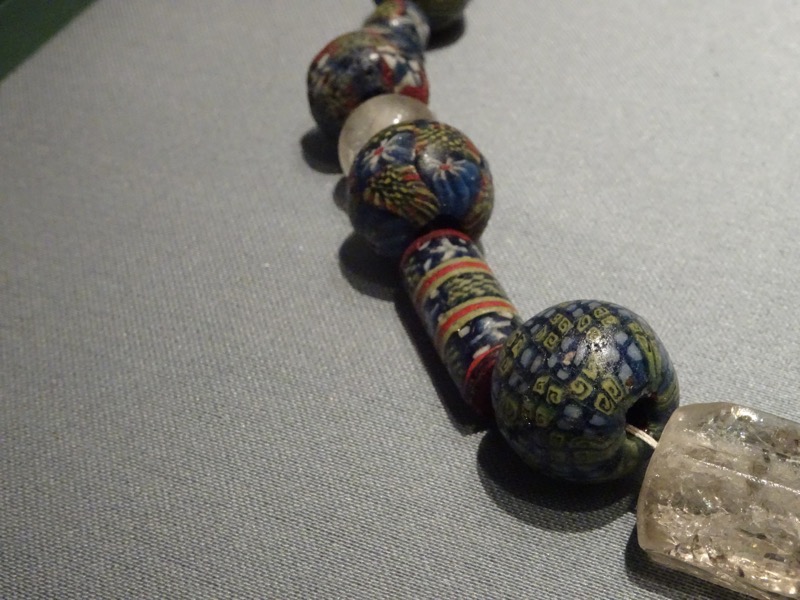
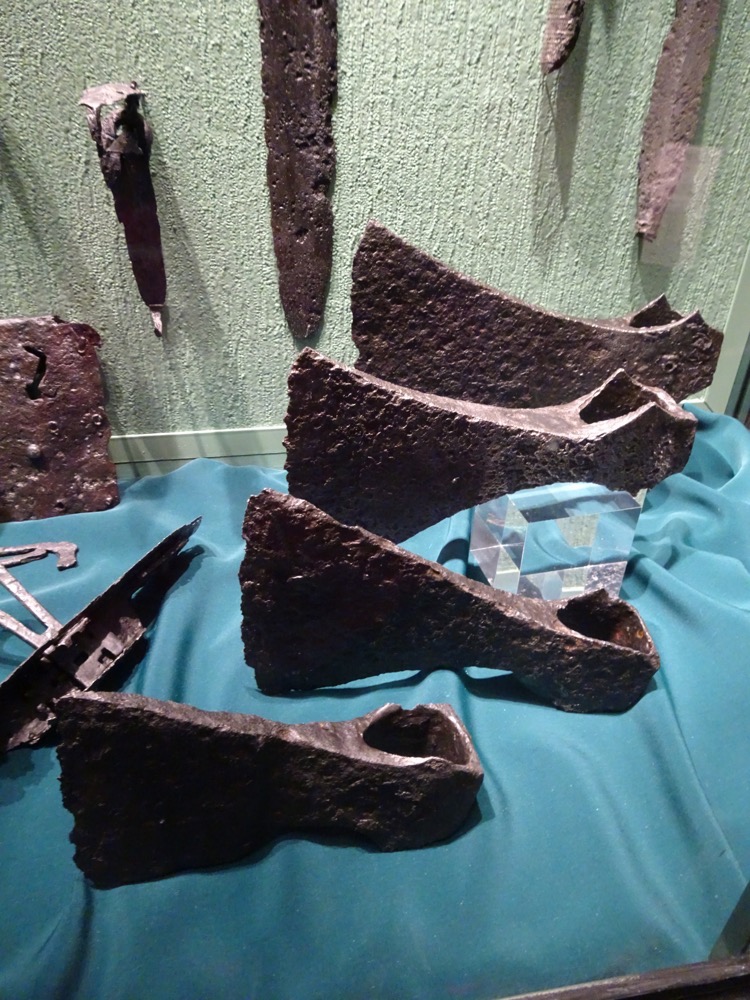 Iron age tools. Used for ship building.
Iron age tools. Used for ship building.
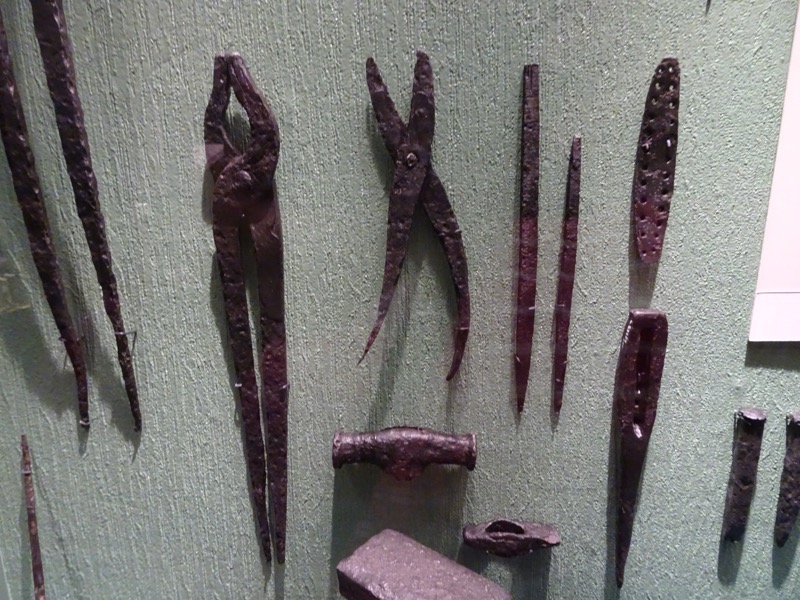 Chisel set used for timber work, ship building… possibly for rune stone carving as well.
Chisel set used for timber work, ship building… possibly for rune stone carving as well.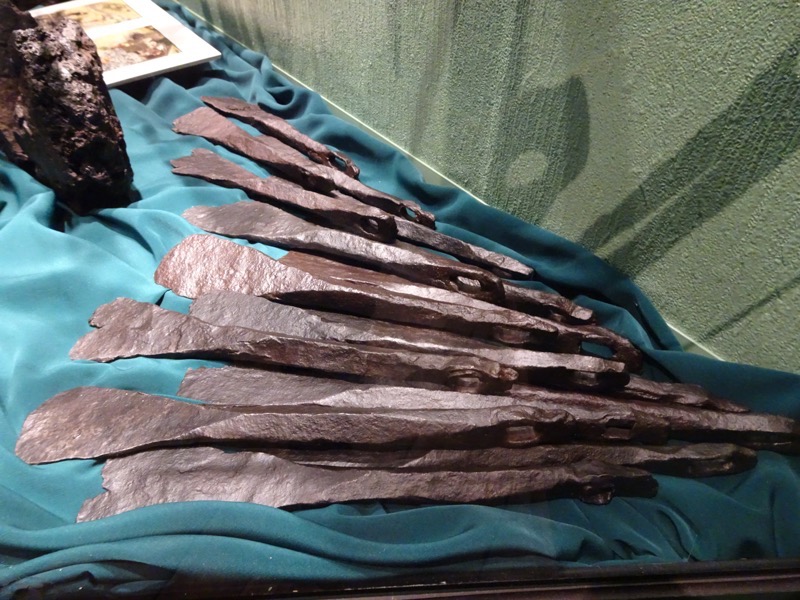 Bowls carved using chisels.
Bowls carved using chisels.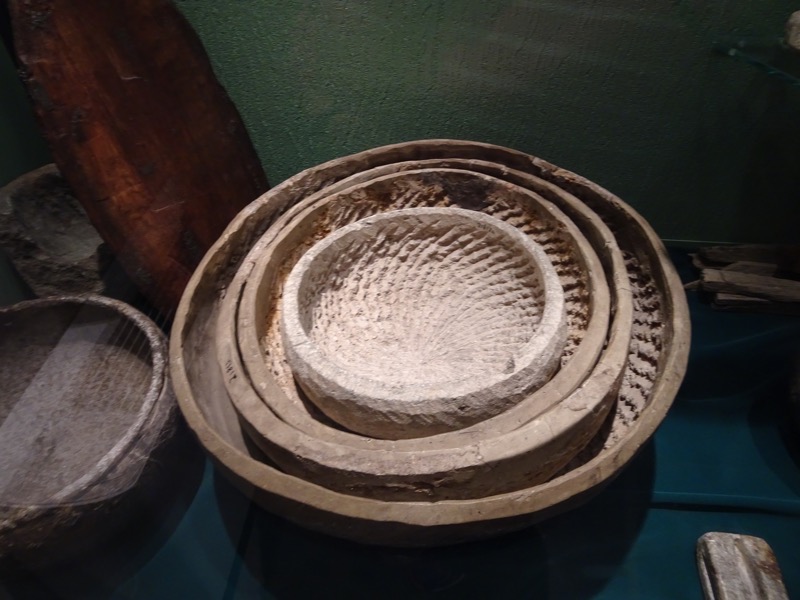 Viking sword pommels – Vaga kirke, Vaga, Oppland. 9th century.
Viking sword pommels – Vaga kirke, Vaga, Oppland. 9th century.
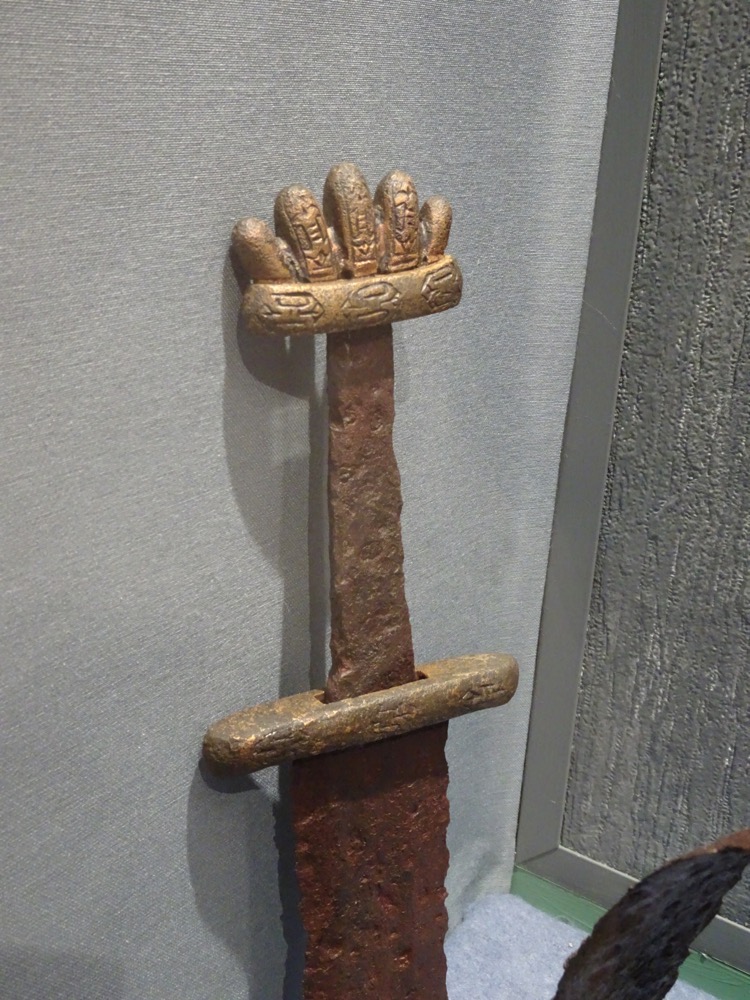
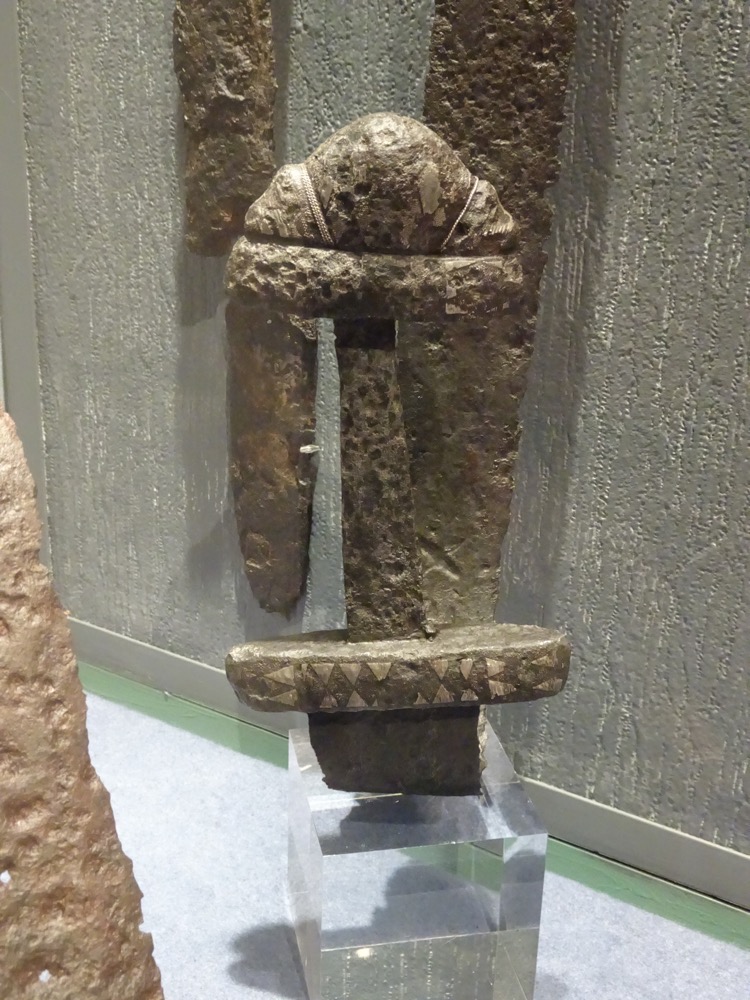

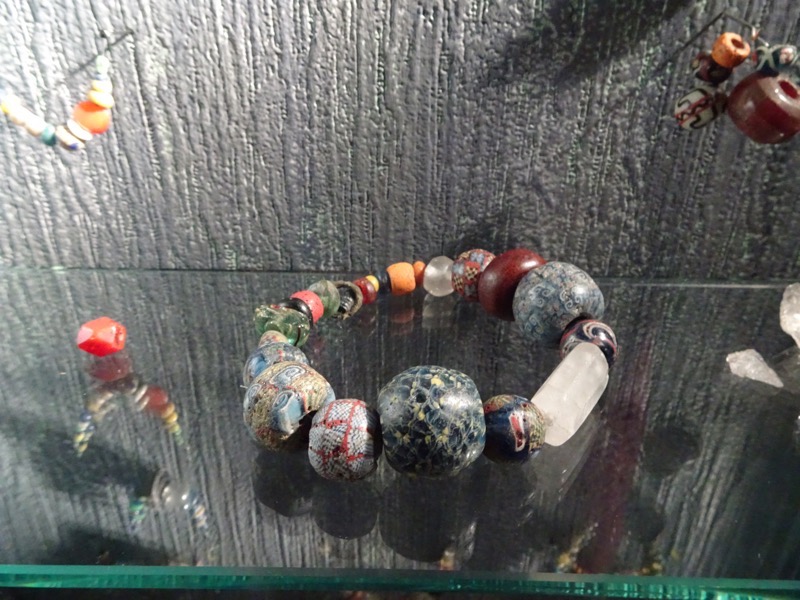 Flattening board and flattening stones.
Flattening board and flattening stones.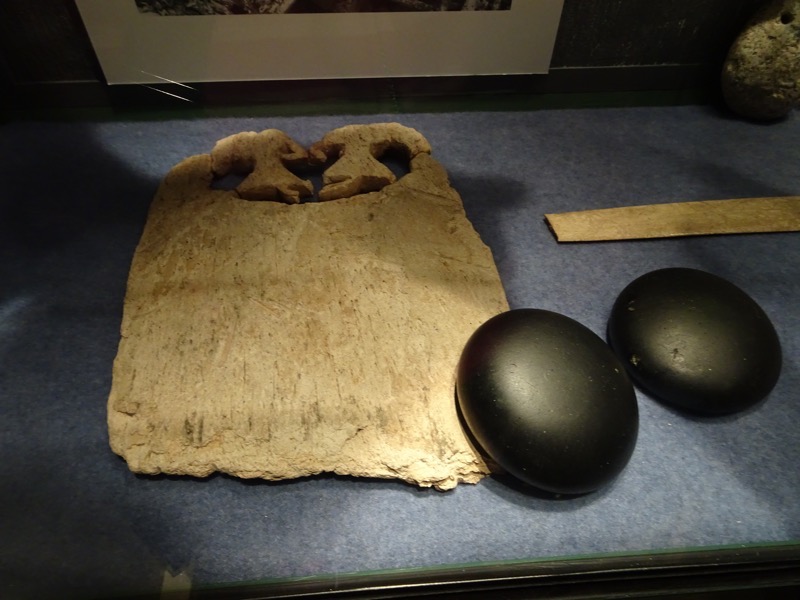
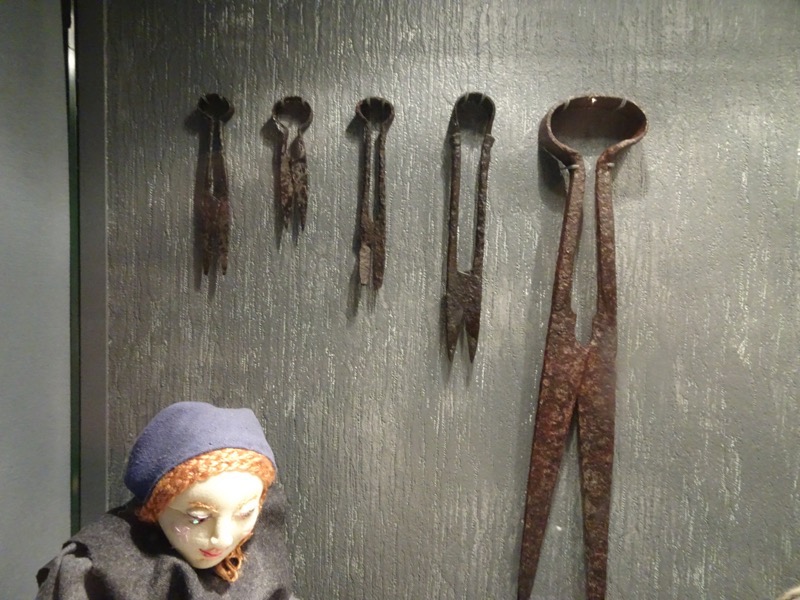
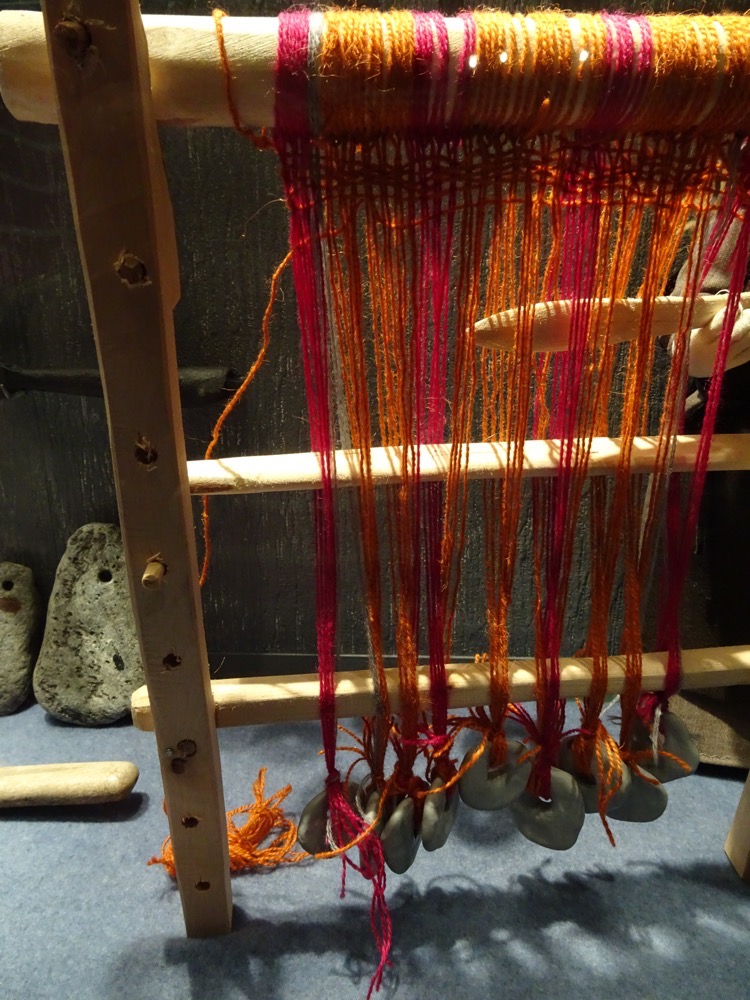 Spinning whorls.
Spinning whorls.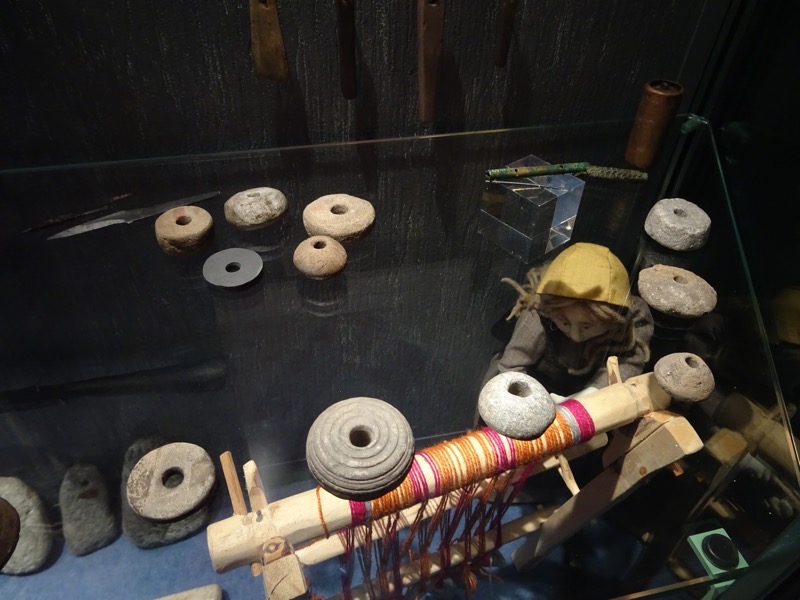 Neck band.
Neck band.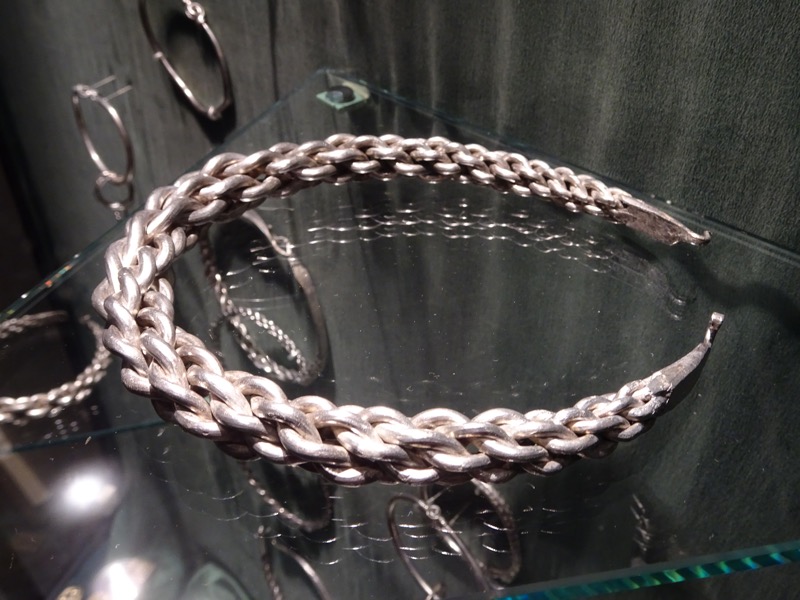 Viking shield from Oseberg grave.
Viking shield from Oseberg grave.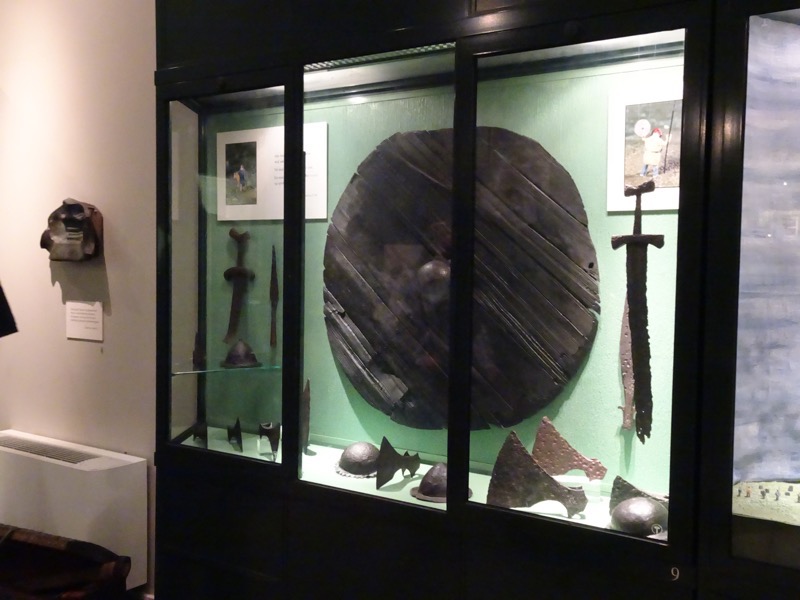
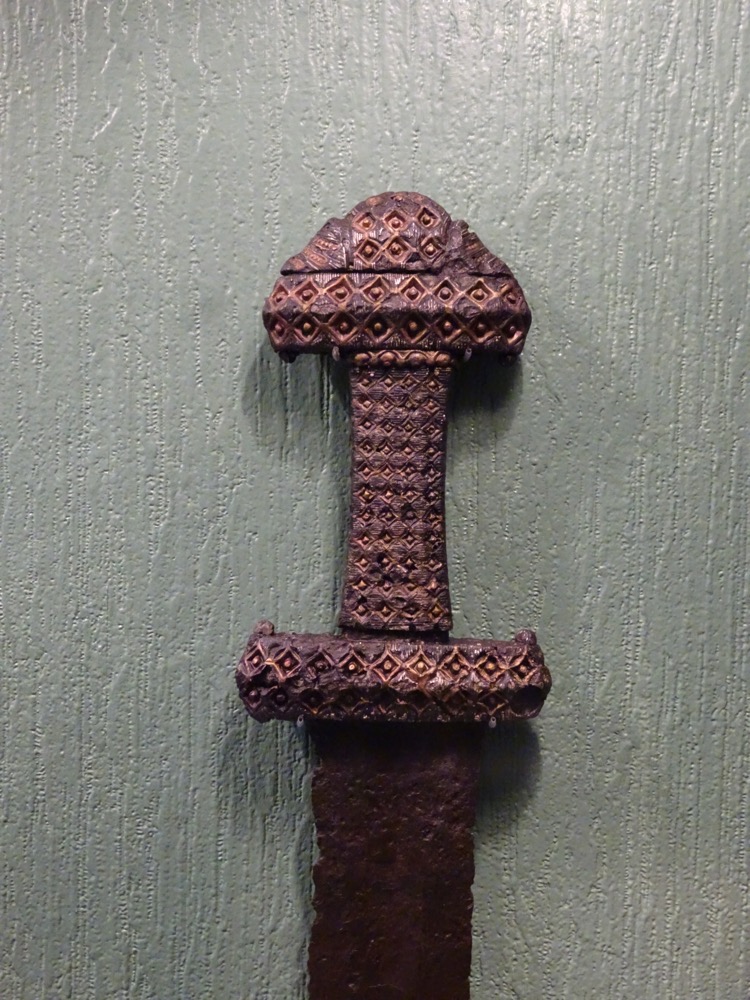
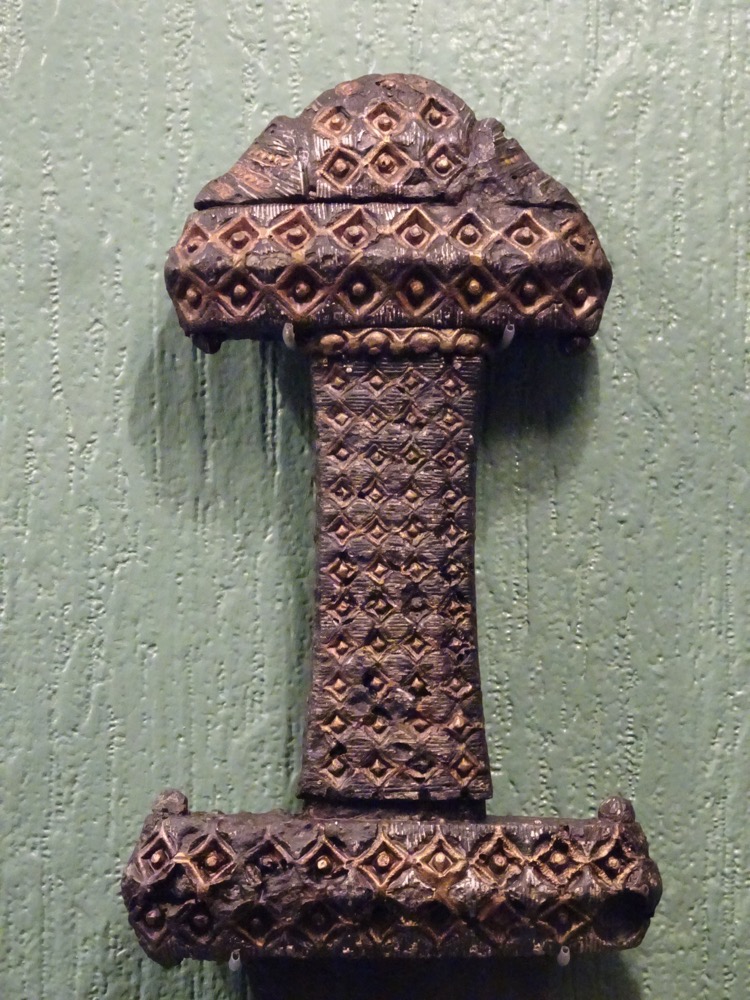

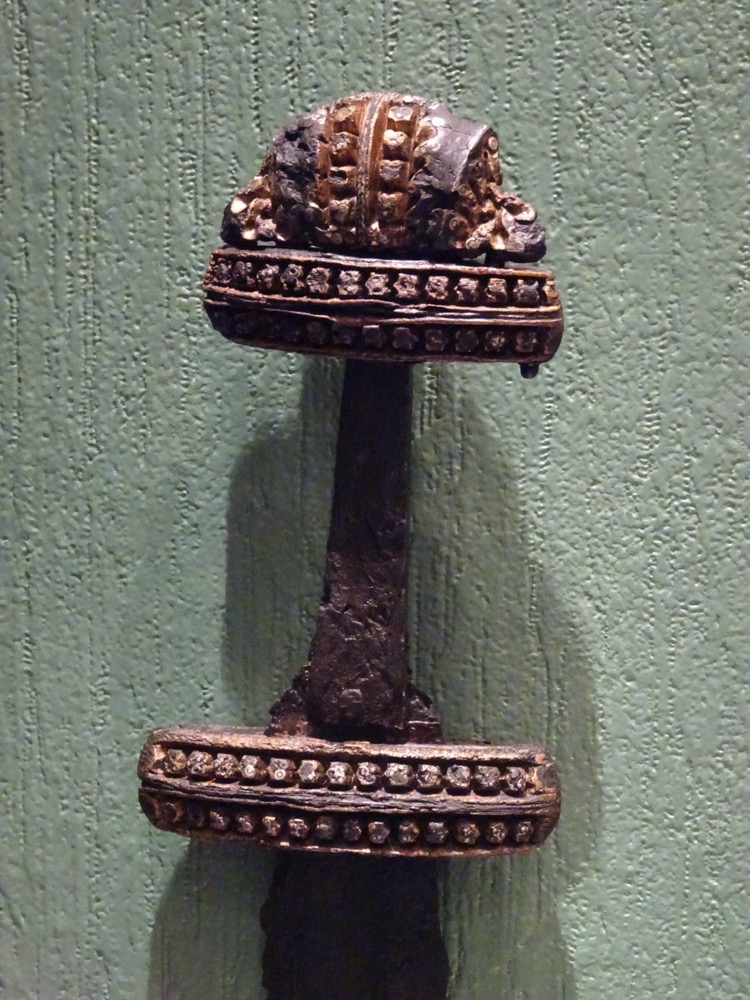
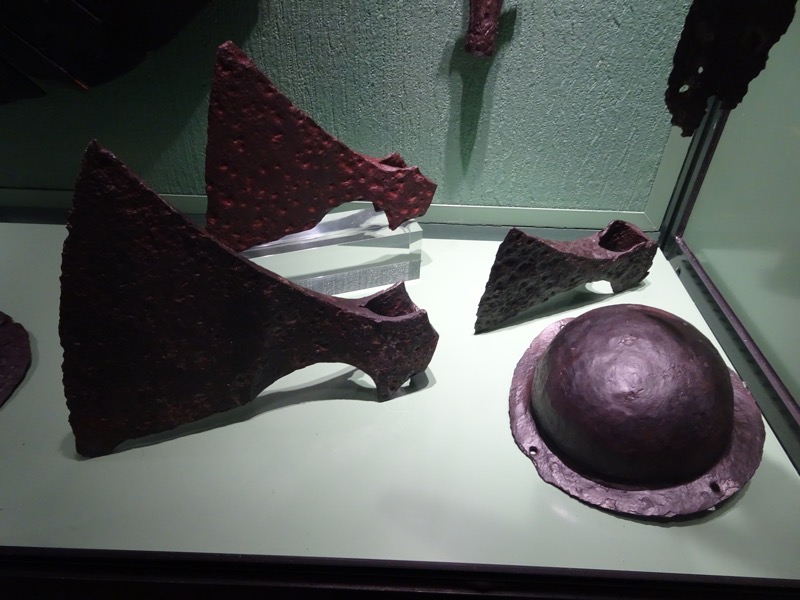
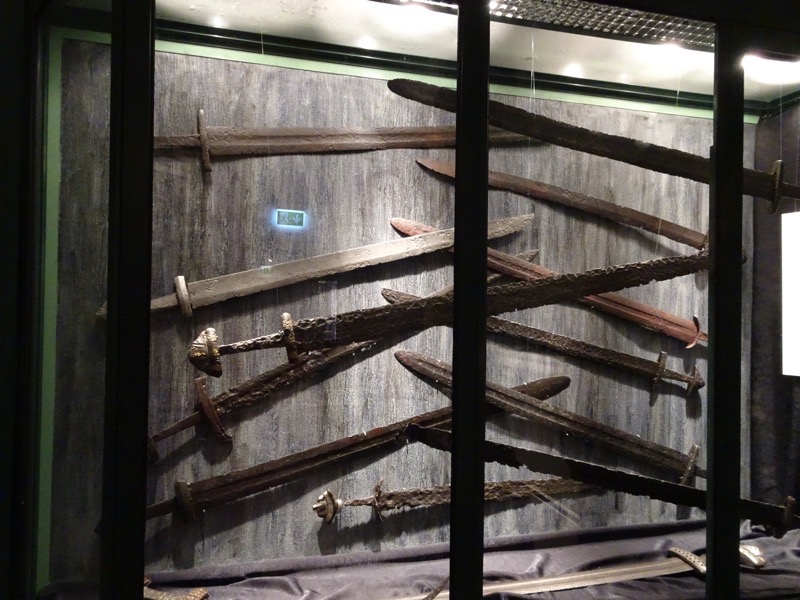

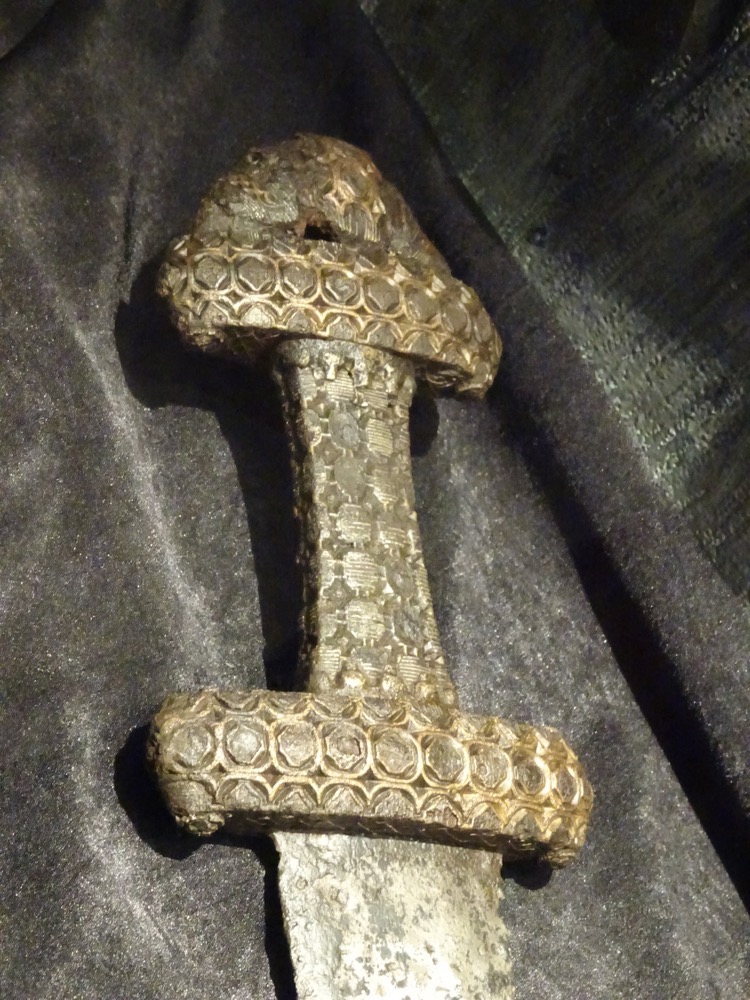
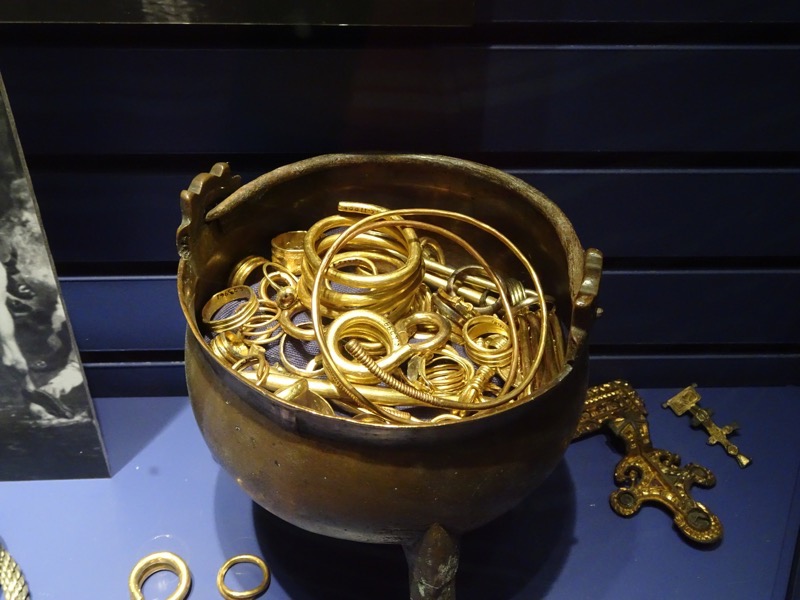

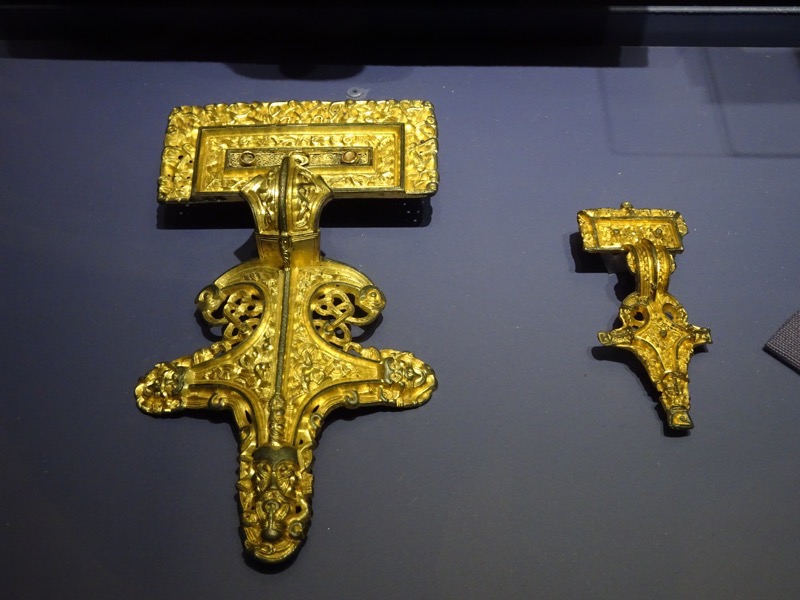
Sword mounts.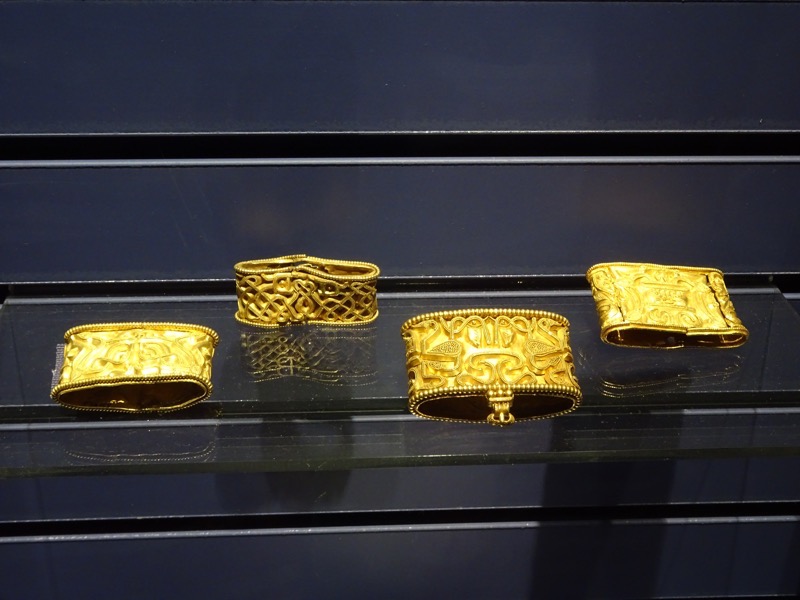
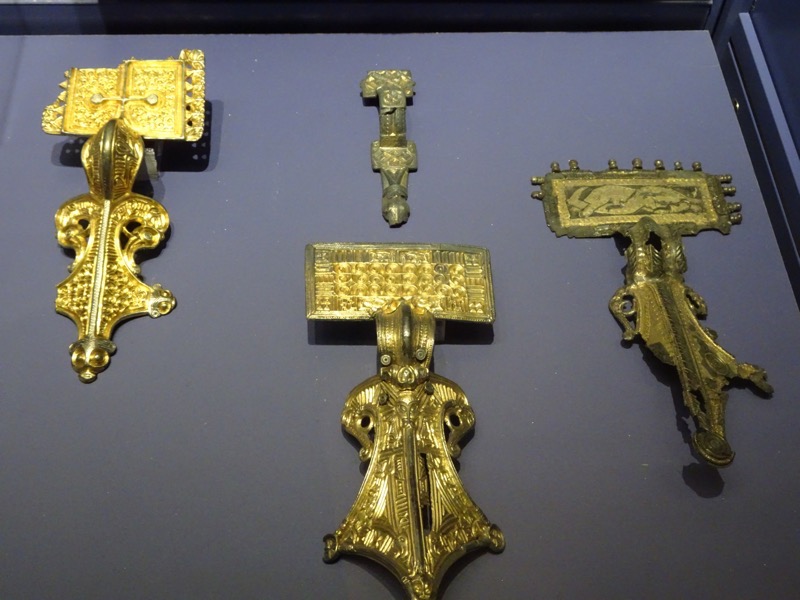
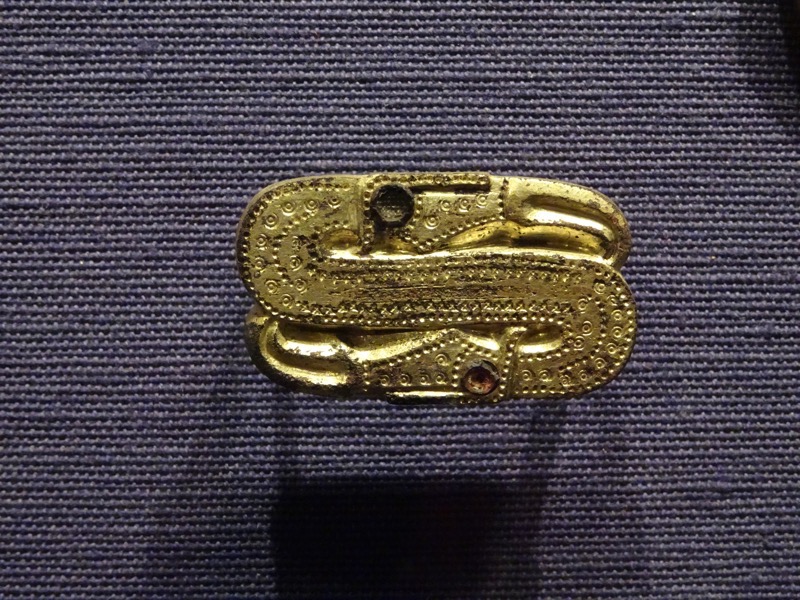 Belt mounts.
Belt mounts. 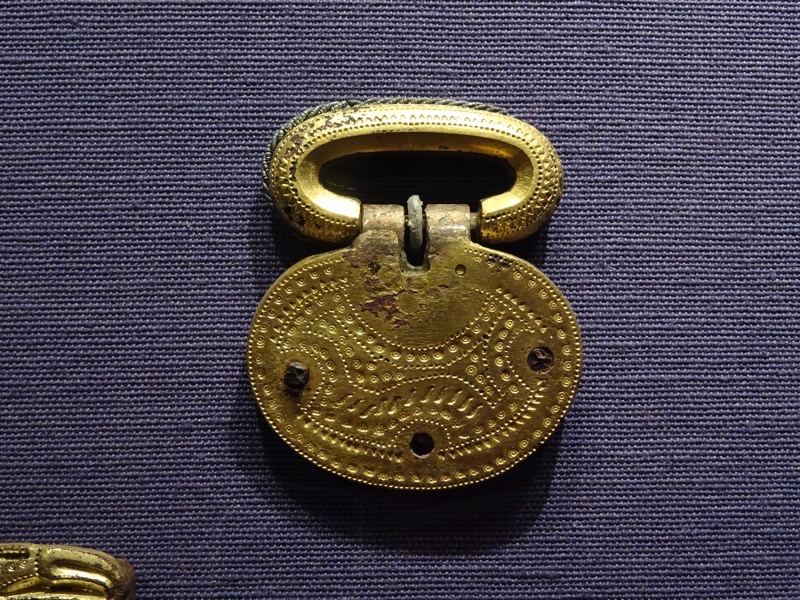
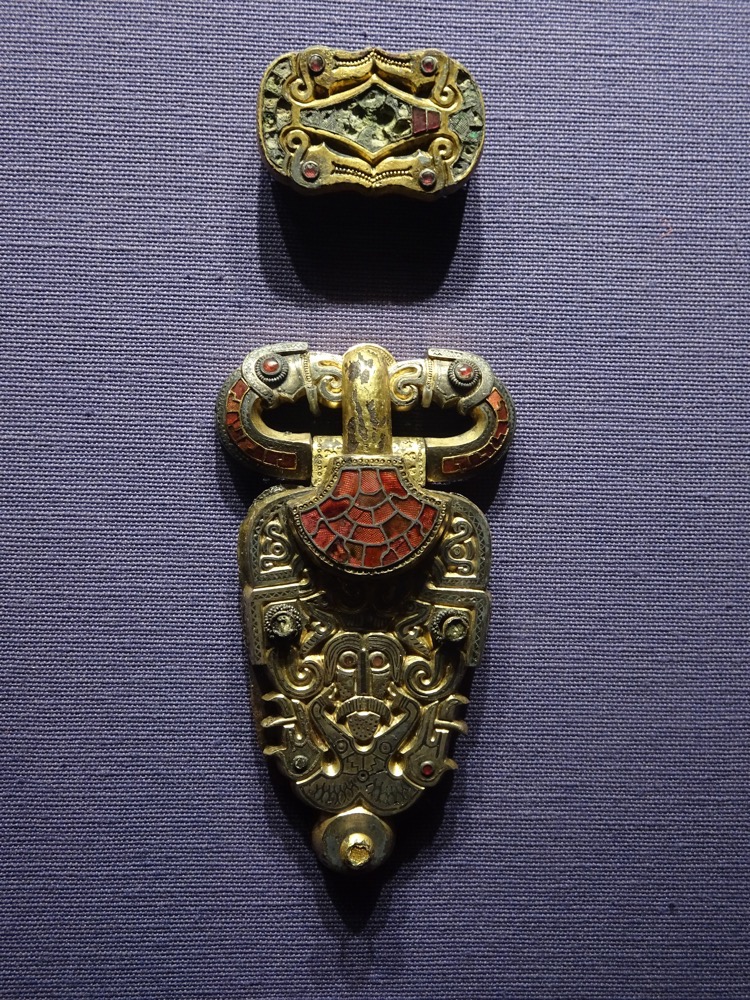
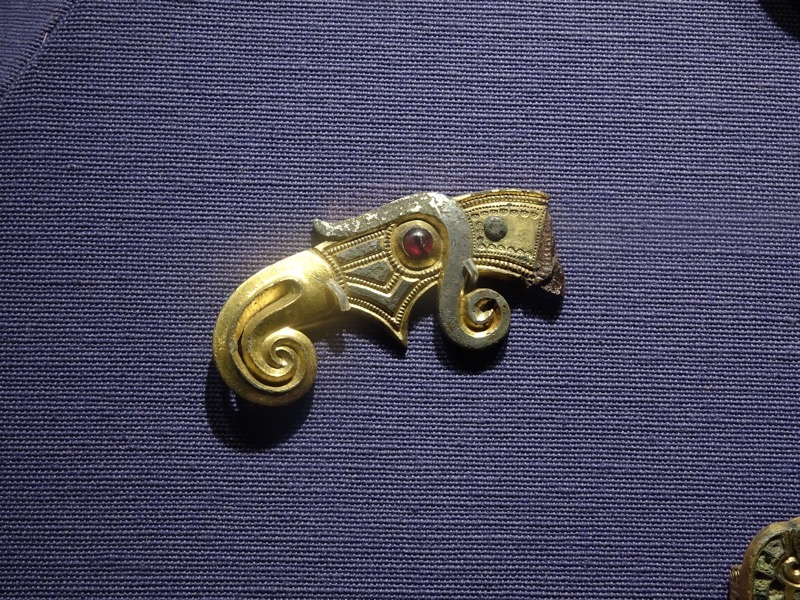
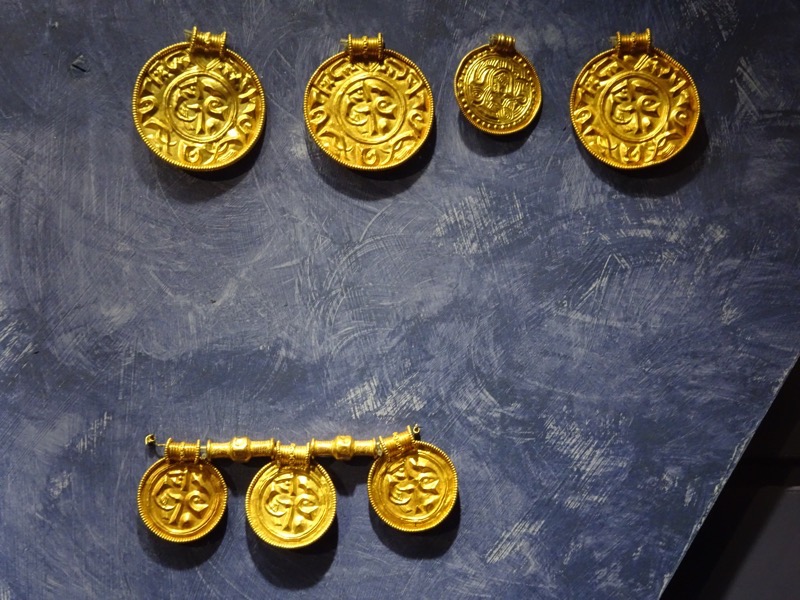
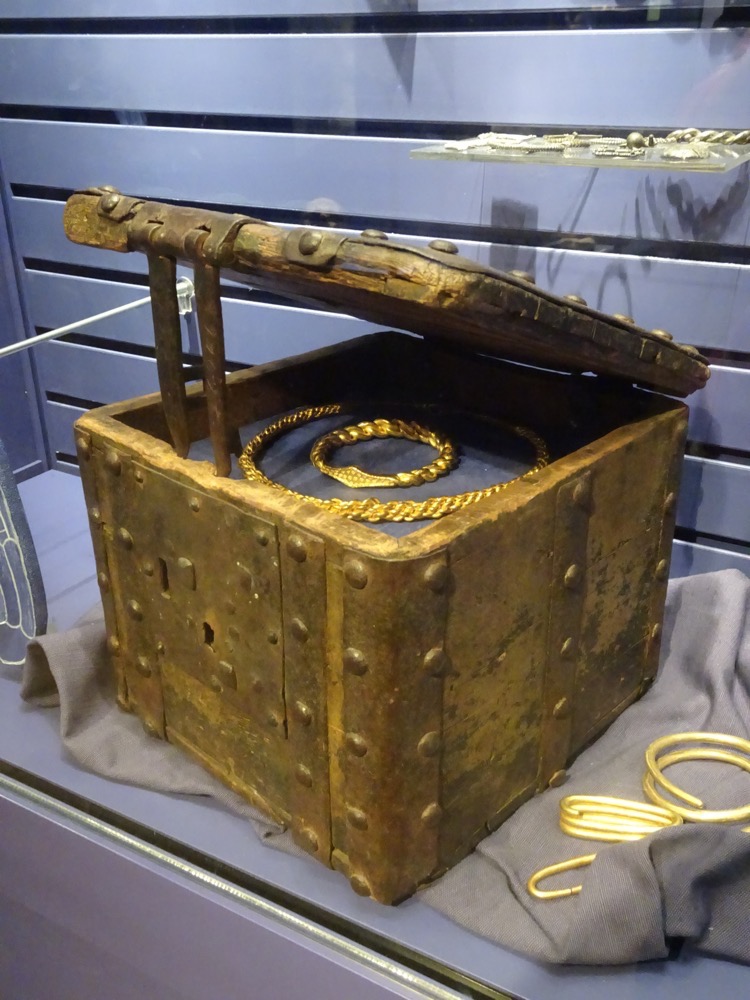
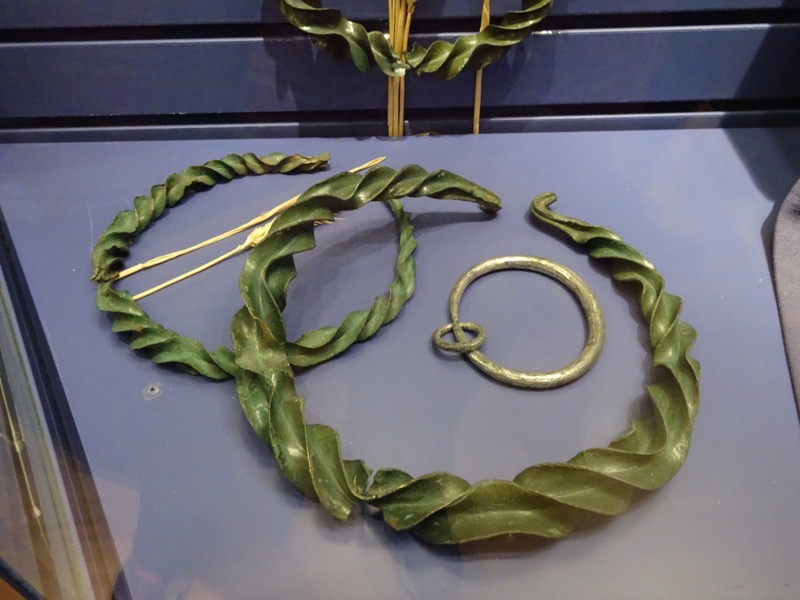
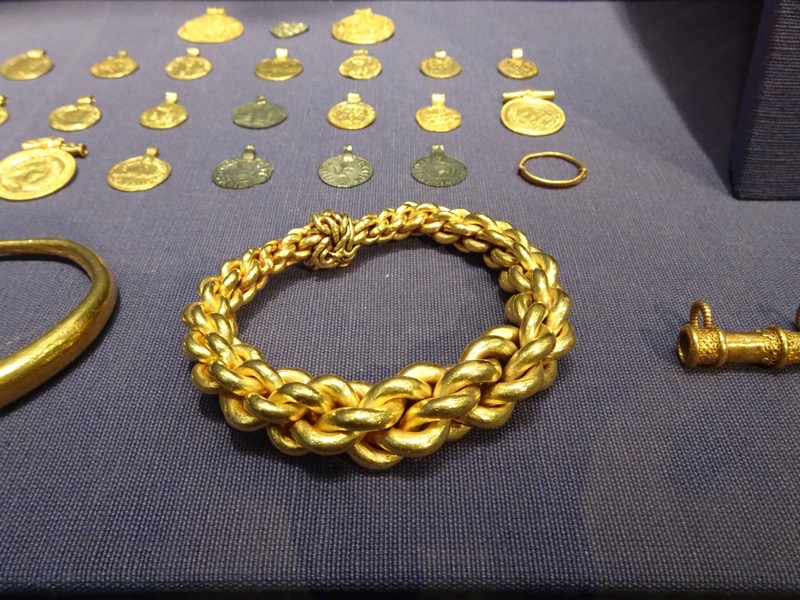 And on the way out – back to the chaos.
And on the way out – back to the chaos.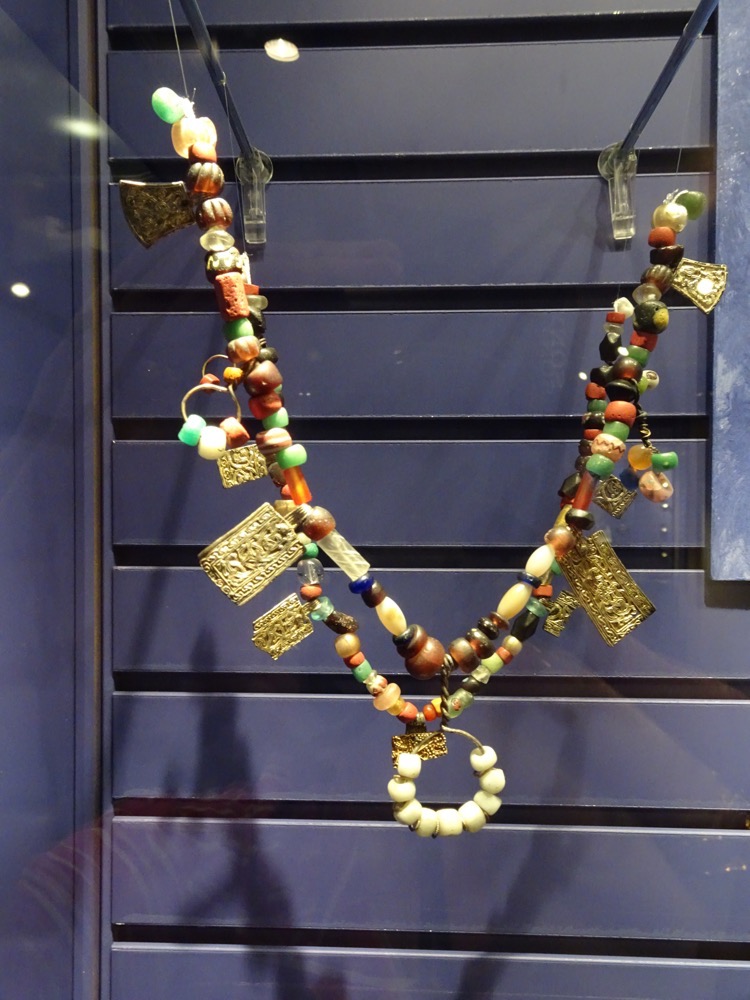 After this we went back to town, did a bit of proper touristing… you know, cruised the souvenir shops, stopped for a pint at the Dr Jeckyll pub, walked along the waterfront and checked out the multi-cultural festival being held in Oslo’s town centre. From there it was back to the ship! 🙂
After this we went back to town, did a bit of proper touristing… you know, cruised the souvenir shops, stopped for a pint at the Dr Jeckyll pub, walked along the waterfront and checked out the multi-cultural festival being held in Oslo’s town centre. From there it was back to the ship! 🙂

Fascinating! Your plentiful and detailed photos make me feel like I am there. Keep them coming please.